This time we will take care of one of the, I think, most NOT recommended to do on your own procedures. But who doesn’t like some challenge! Let’s start unscrewing and see how it goes :)
Which DR350 rear shock model we will rebuild today?
As far as I’ve researched, there were (at least) three rear shock models mounted to DRs.
The first one was fitted to the dirt versions of DRs and had both the rebound and compression dampening adjustments. Later similar shock was mounted on street legal DRs (DR350SE), which left the factories from 1997 to 1998.
The second DR350 rear shock model was very similar to the dirt one and was mounted to the street legal models produced from 1990 to 1993. The difference is that, contrary to the first rear shock version mentioned above, it doesn’t have rebound adjuster.
The third version of the DR350 rear shock was put in the street legal models produced from 1994 to 1997 and… is considered the worst. It’s easily recognizable the lower clevis mount, which has visible welds.
Today we will disassemble a 90-93S rear shock. But I think the procedure should be quite similar to the other models. Let us know if you spot or if you know some bigger rebuild difference, that would be interesting to know (☉‿☉)
The first dismantling steps
Naturally, we have to start with freeing the shock a little, so we can work on the air can and the shock body separately.
First we take apart the air can handle by removing two clamps, which are holding it.
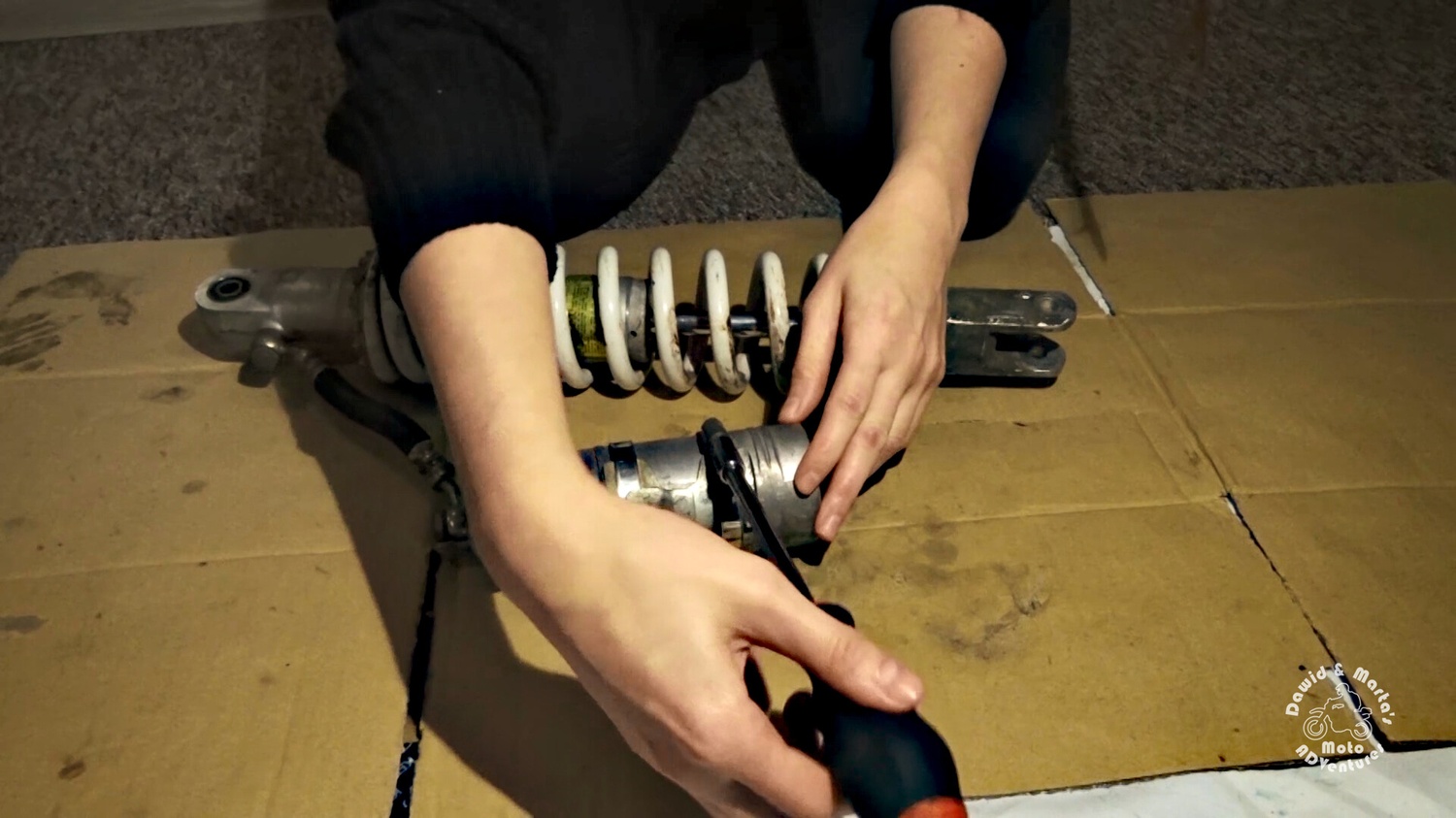

Next we can unscrew the spring preload adjuster locking ring. It will probably be a little stuck, so we can go for it and use a hammer with a punch tool, though gently ;)
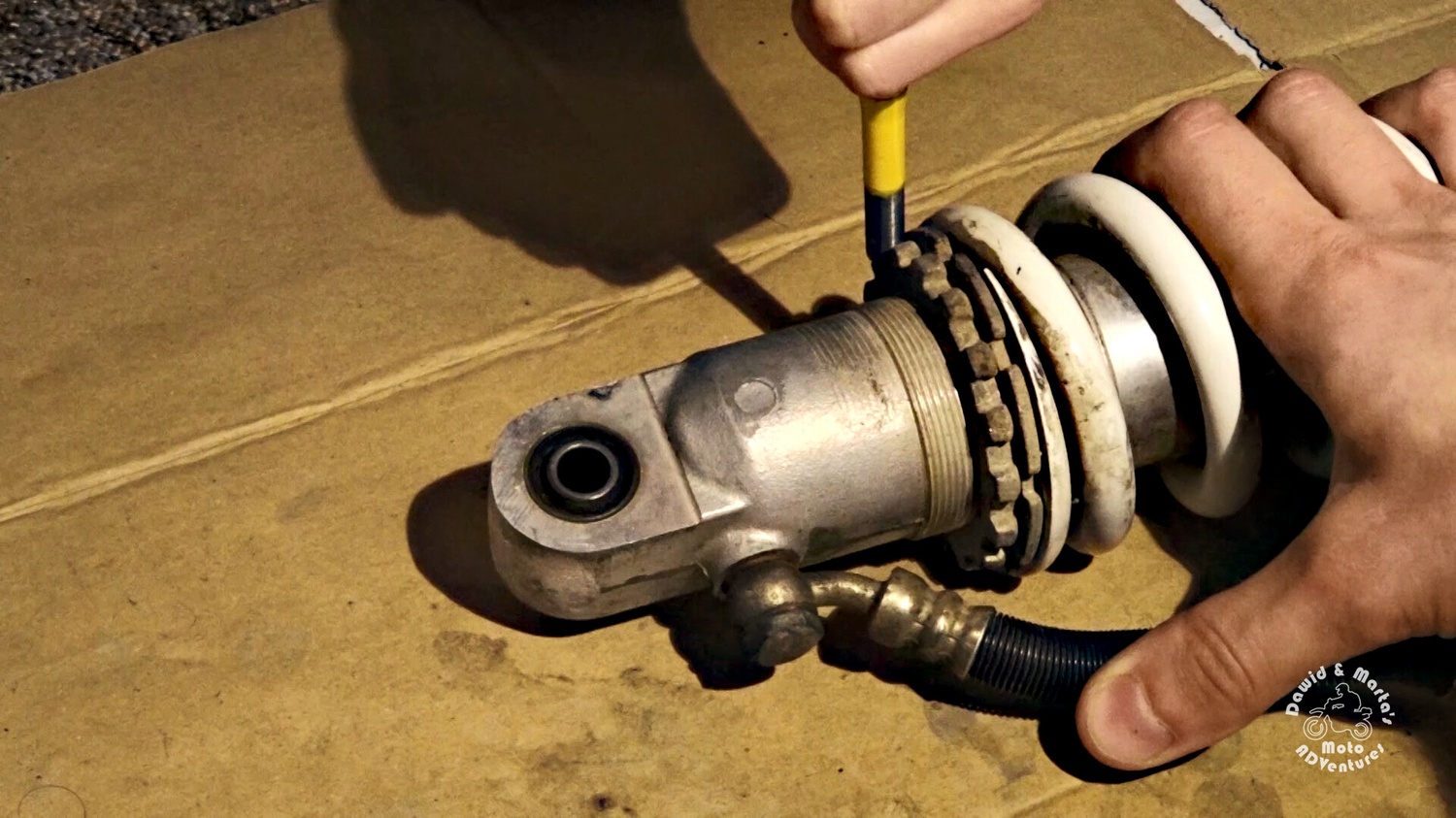

In my case the nut was seized, so I also used a penetrating oil.
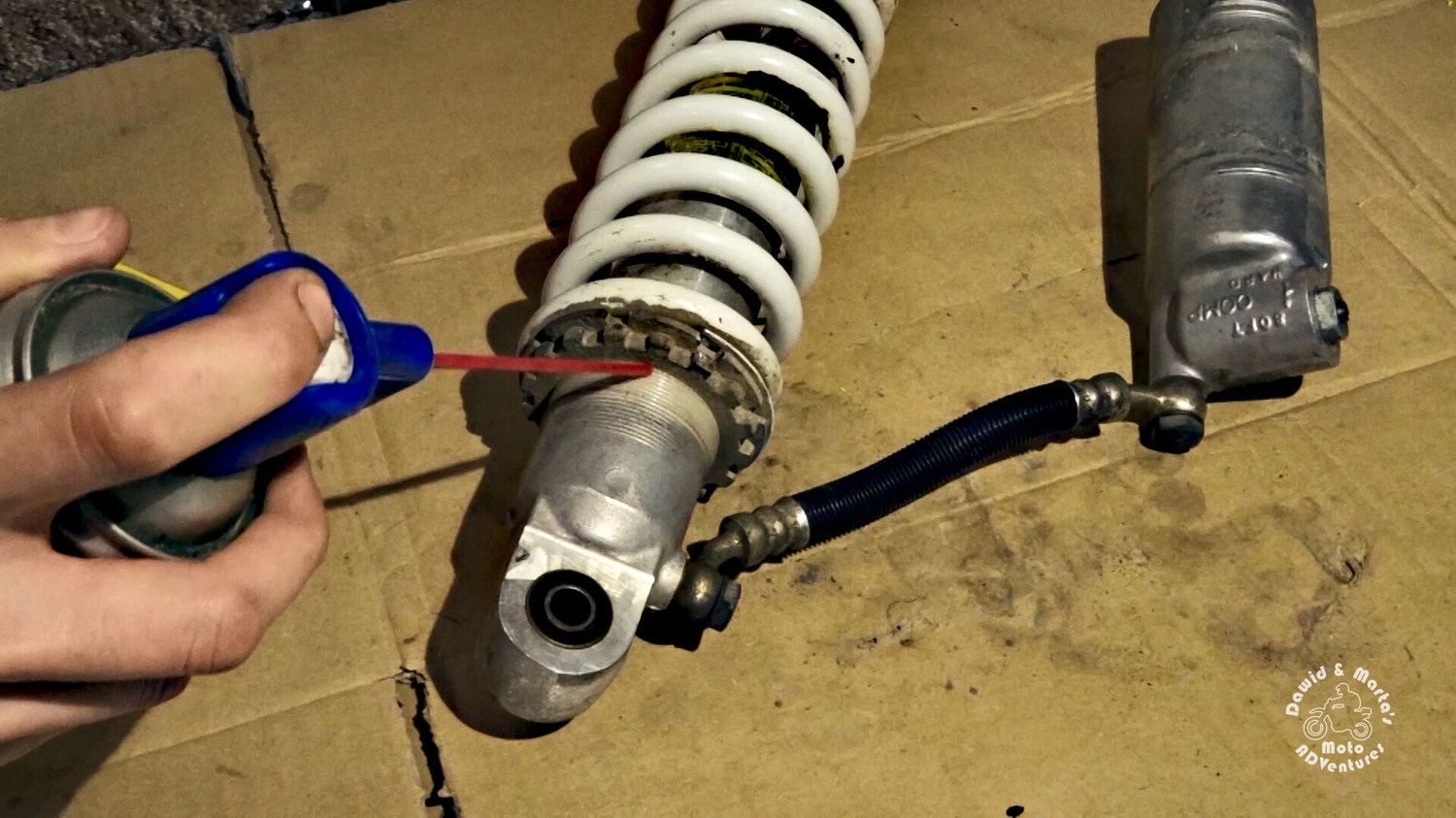

When it’s finally loosened, we unscrewed it together with the spring preload adjuster.
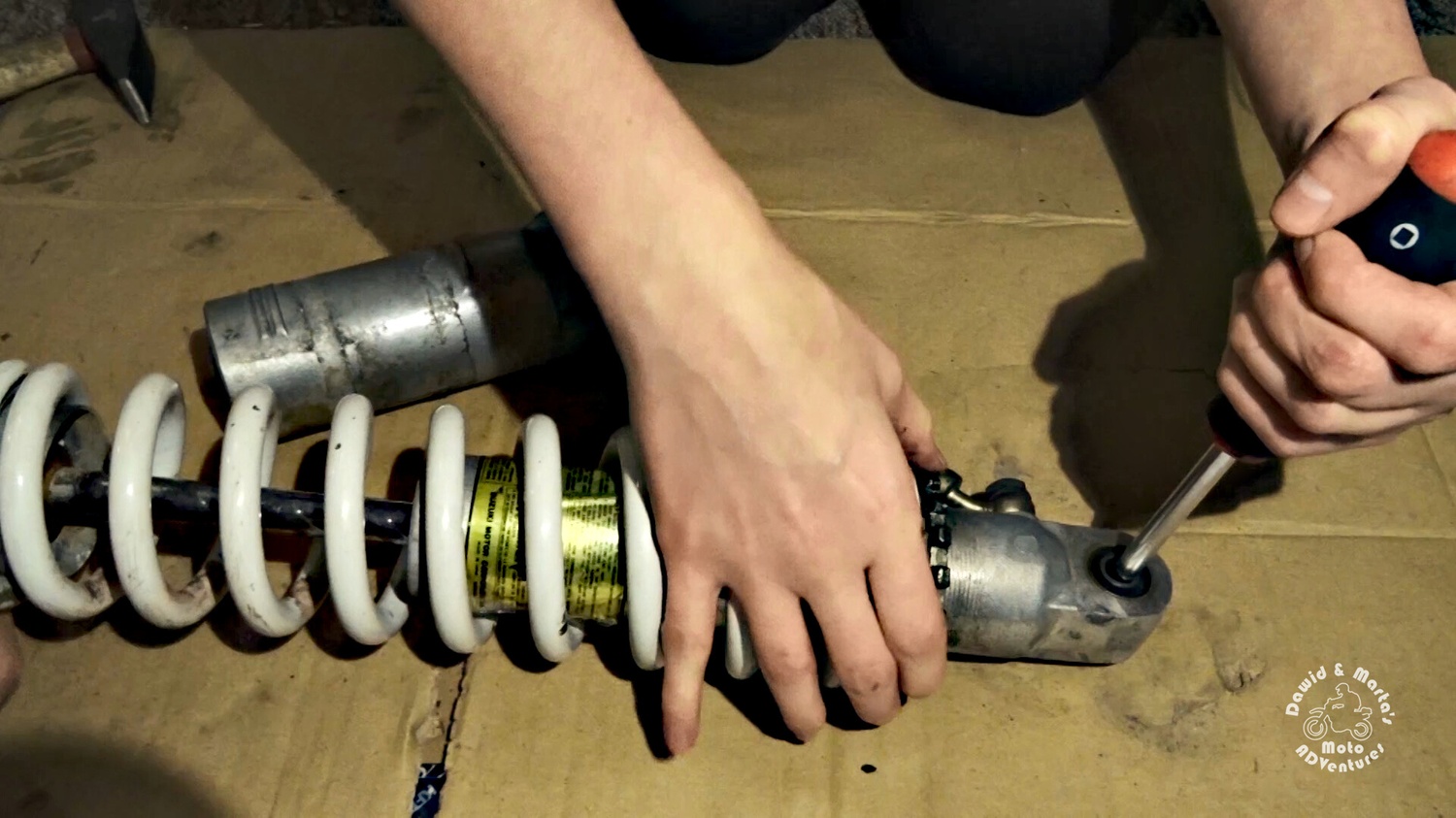

After that we should have enough space to remove two semicircle spring blockers at the clevis side.


When the blockers are gone, we can release the spring.
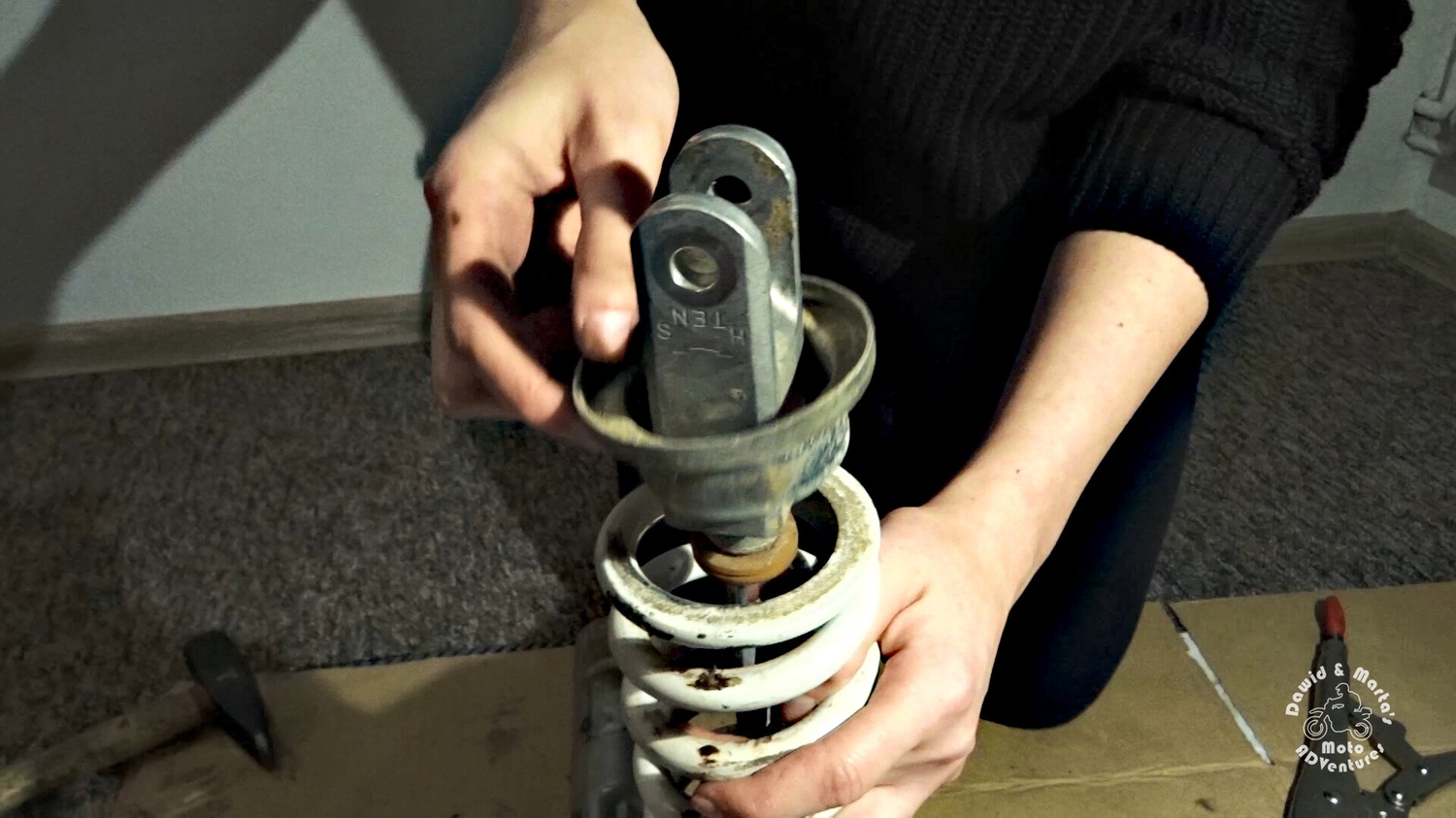

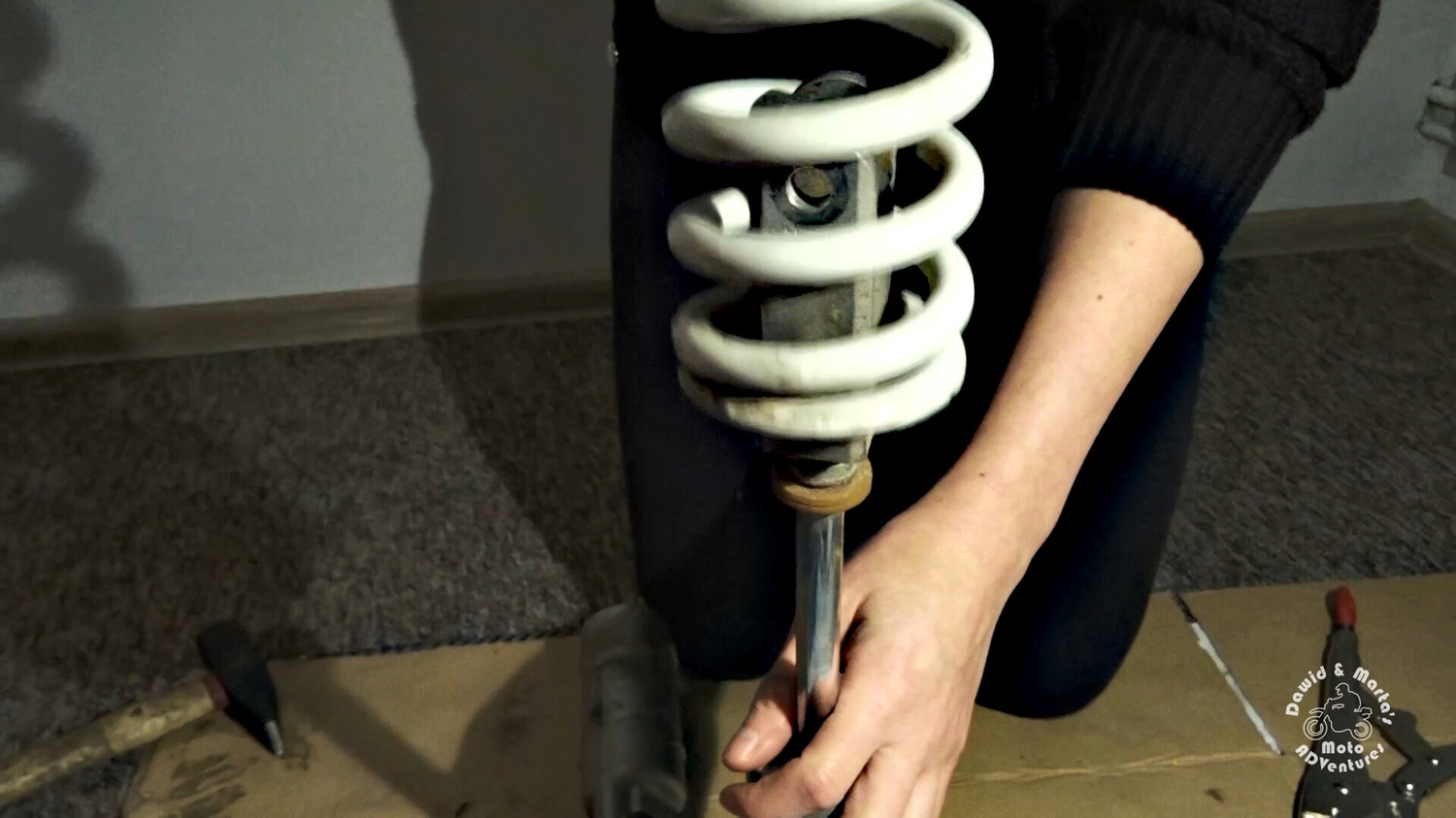

Finally we can remove the spring preload adjuster locking ring and the spring preload adjuster.


Disassembling the air can
After those first dismantling steps, we can take care of the air can now.
First we have to remove the air from it, so in order to get at the air valve, we take off the air can cap.
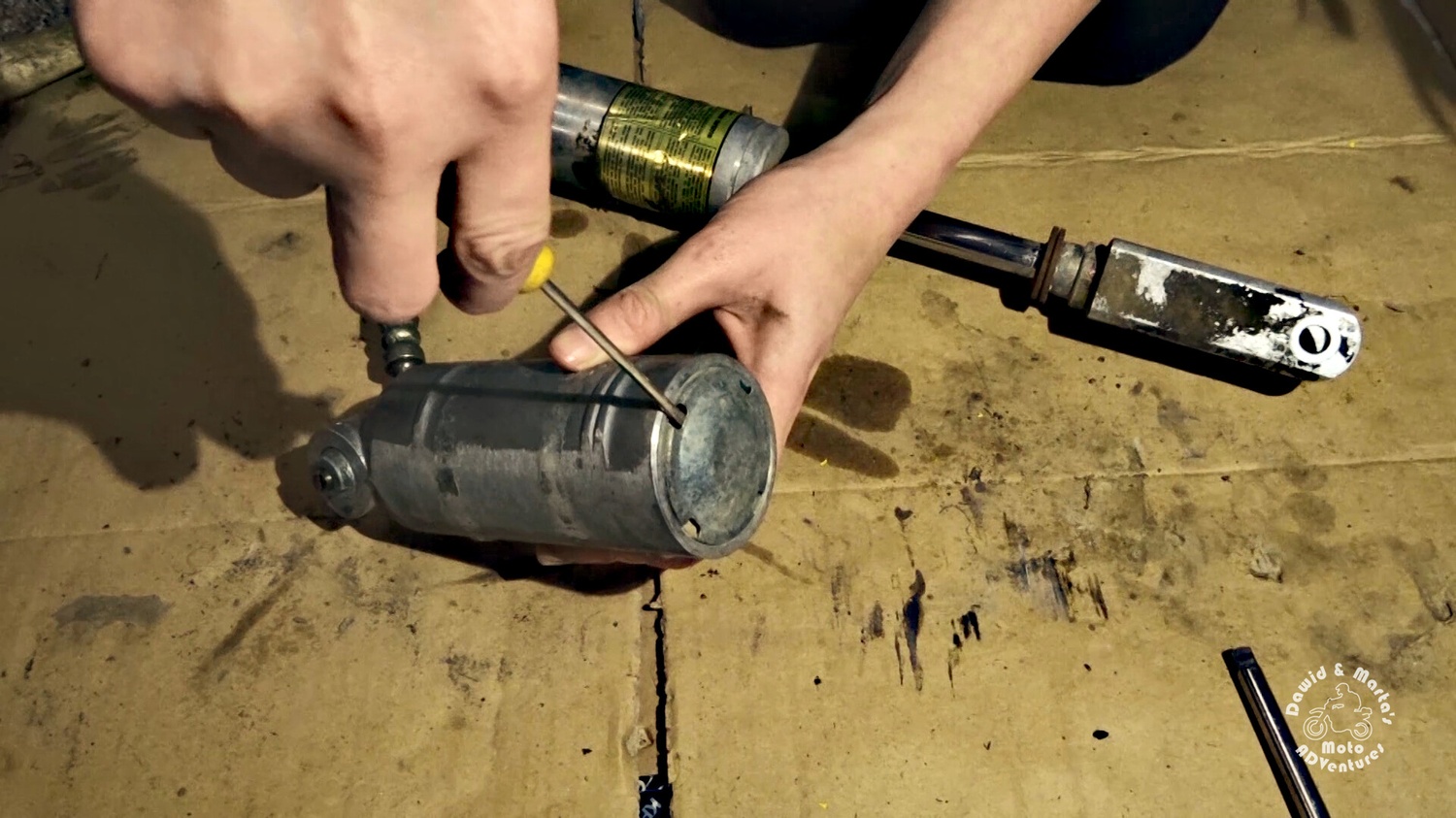

The air valve you’ll find under the cap is a standard one, so we just unscrew the air valve cap and push the valve core in.


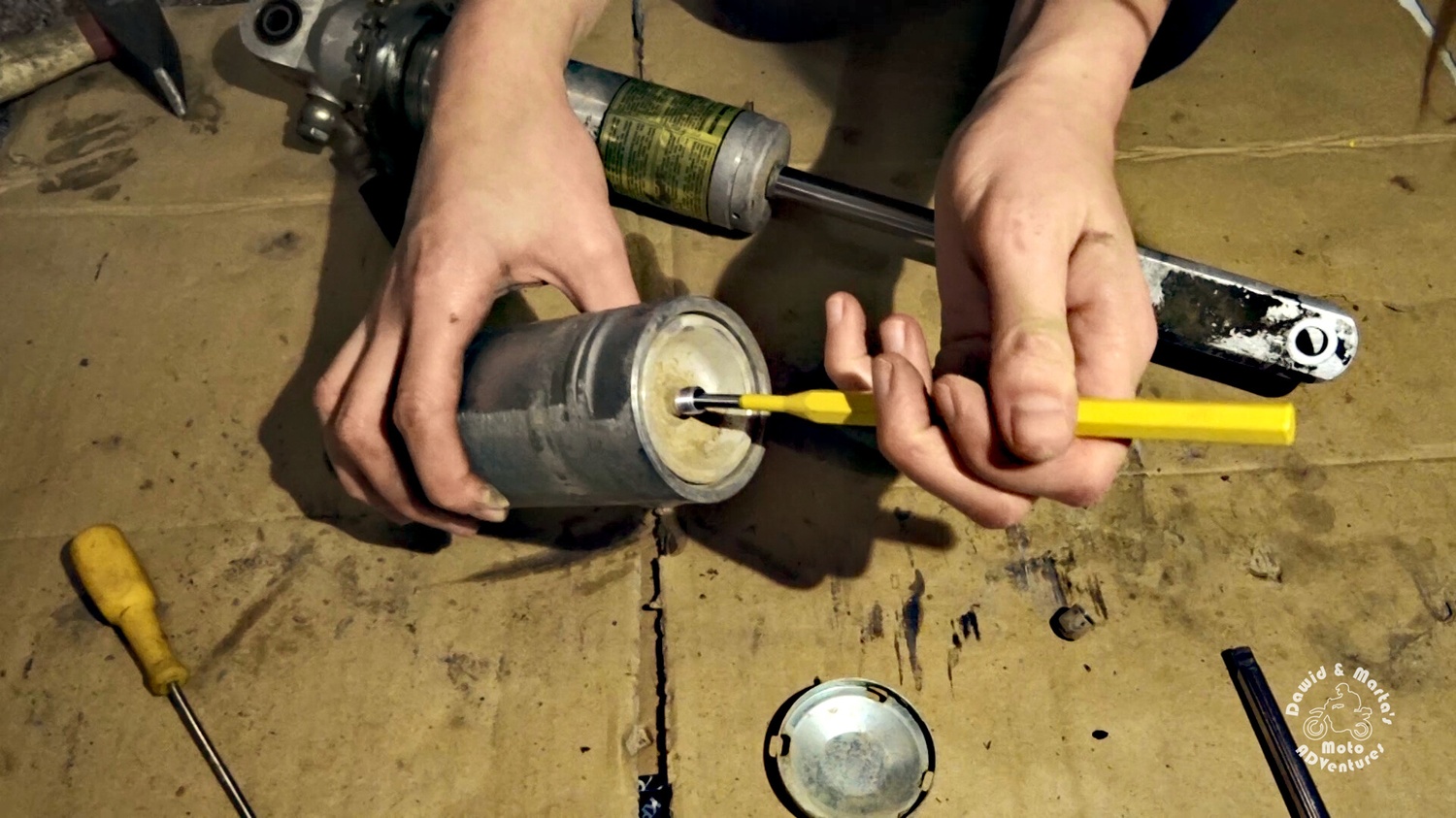

Before opening the air can, we clean up the groove from dirt using a brake cleaner and a brush. In the end I’ve also used compressed air to limit the probability that some sand will come into the can. It may be hard to then turn it out from the can (╯︵╰,)




When the cleaning is done, in order to open the can, we push the cover with valve inside it.
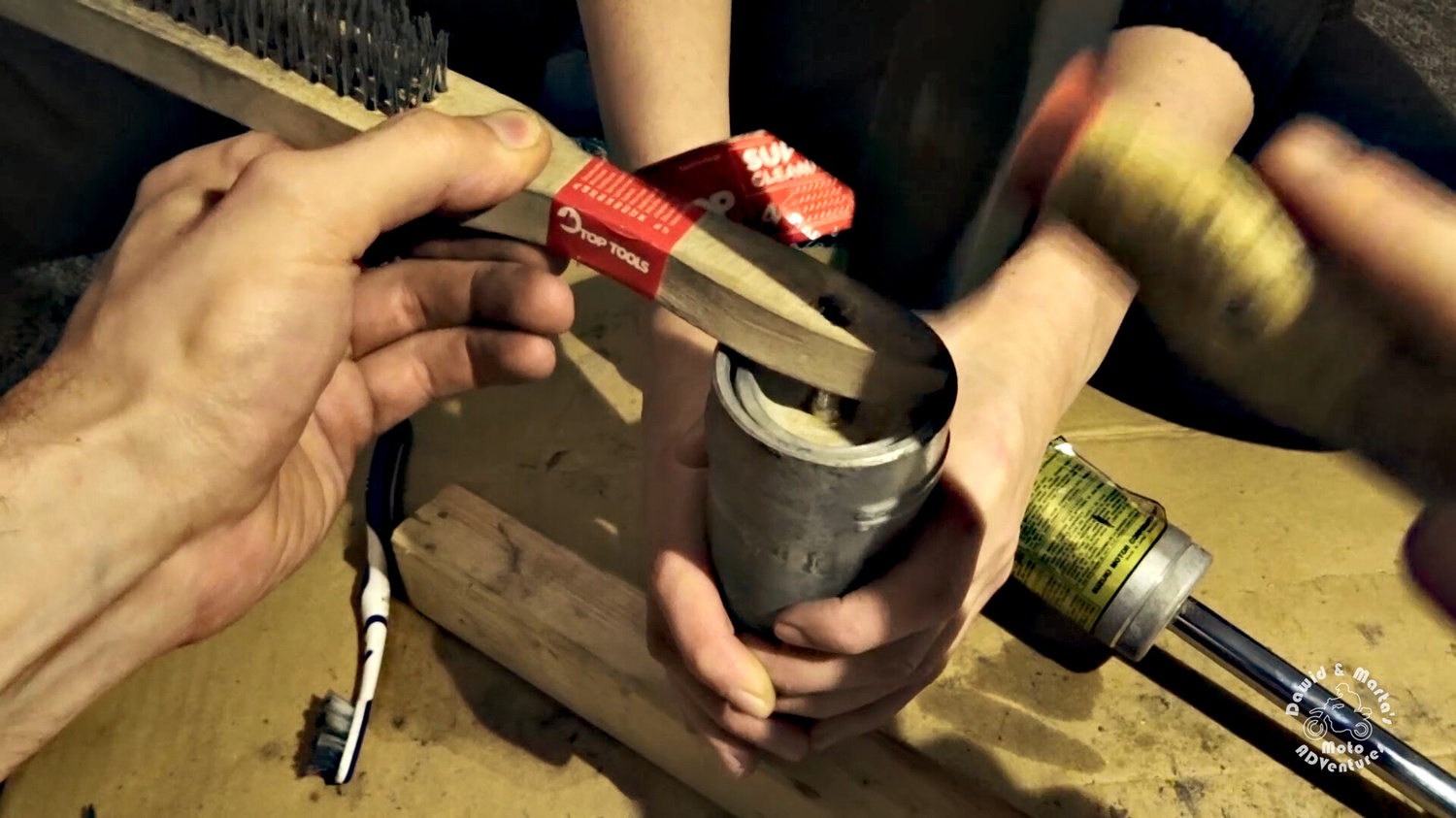

If you decide that you also need a hammer for this step, then be gentle. You only want to make it more easy to push further with hands.
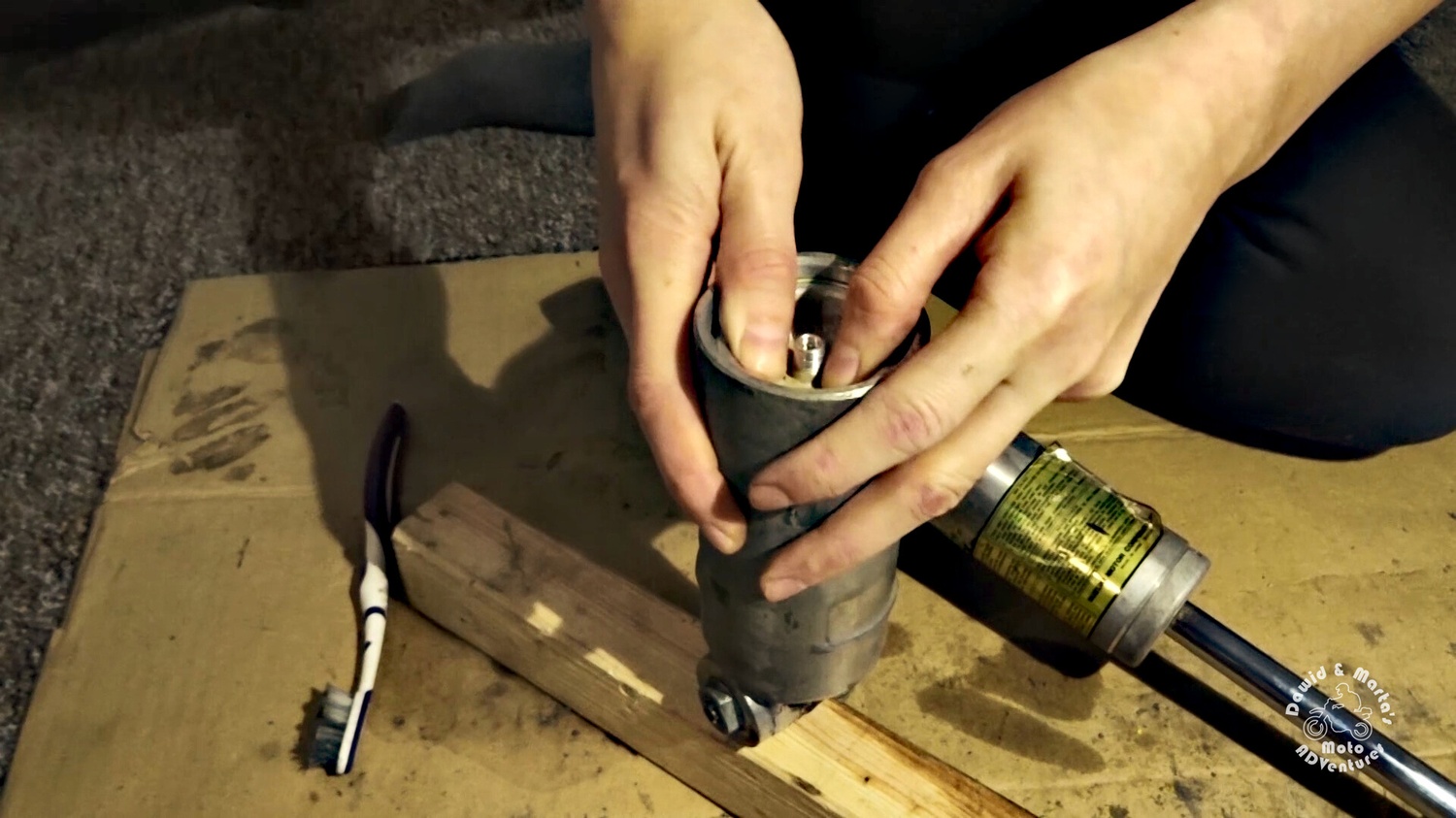

After pressing the cover a little, it’s good to release the pressure by opening the valve. It will be easier to push the cover further.
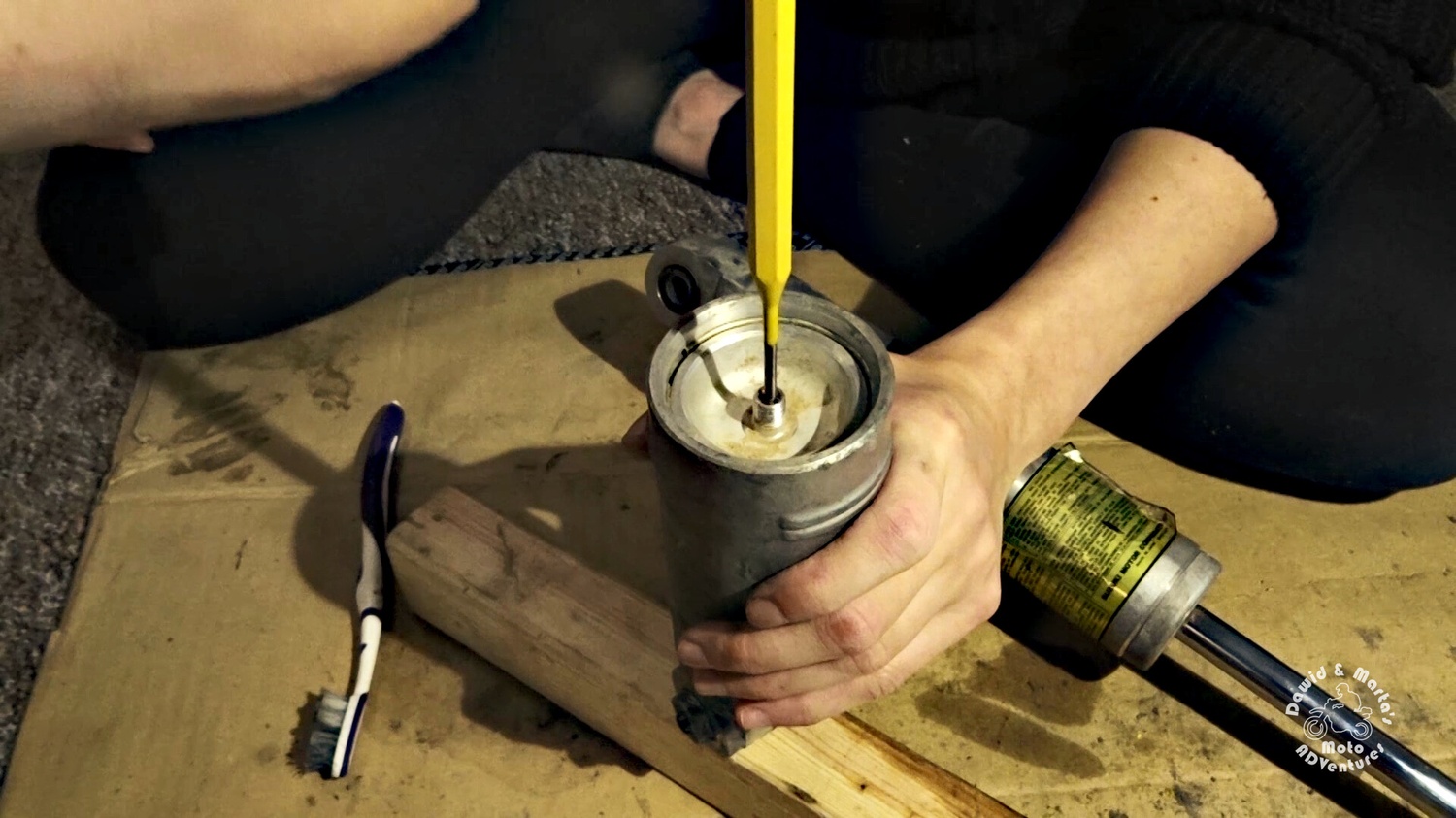

When the cover securing ring in its groove is visible and there is enough space to remove it, then we can stop wrestling with the cap. The cap will be released when we get rid of the ring.


I used a small flat screwdriver and a thin metal plate for this.


Now we have to pull the cover back out. The simplest way to do it is just to connect an air pump to the valve and pump some air inside.
It should pop out by itself.
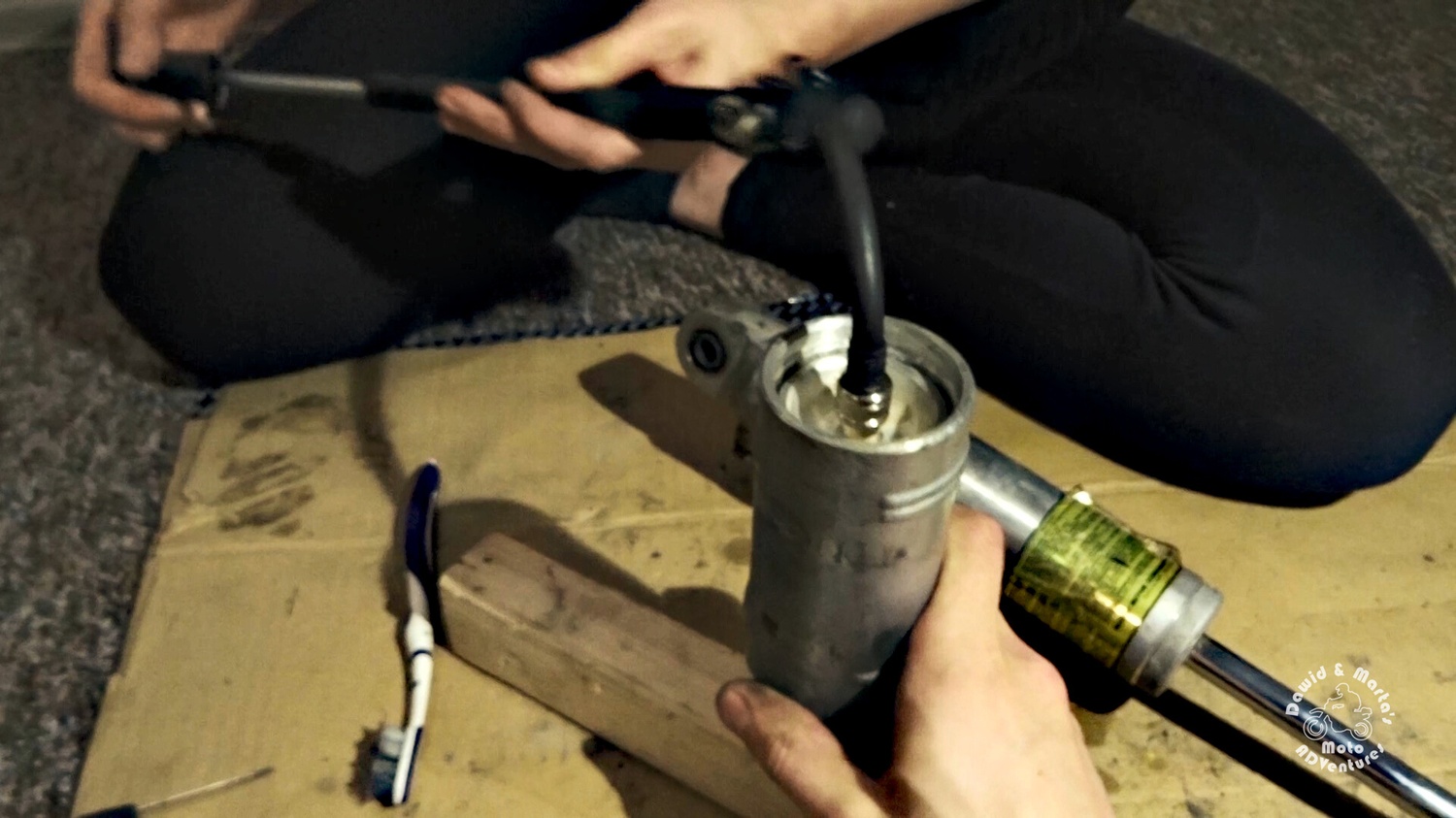



Now as the can is open, we can take out the rubber sleeve sitting there and pour out the old, nasty looking oil
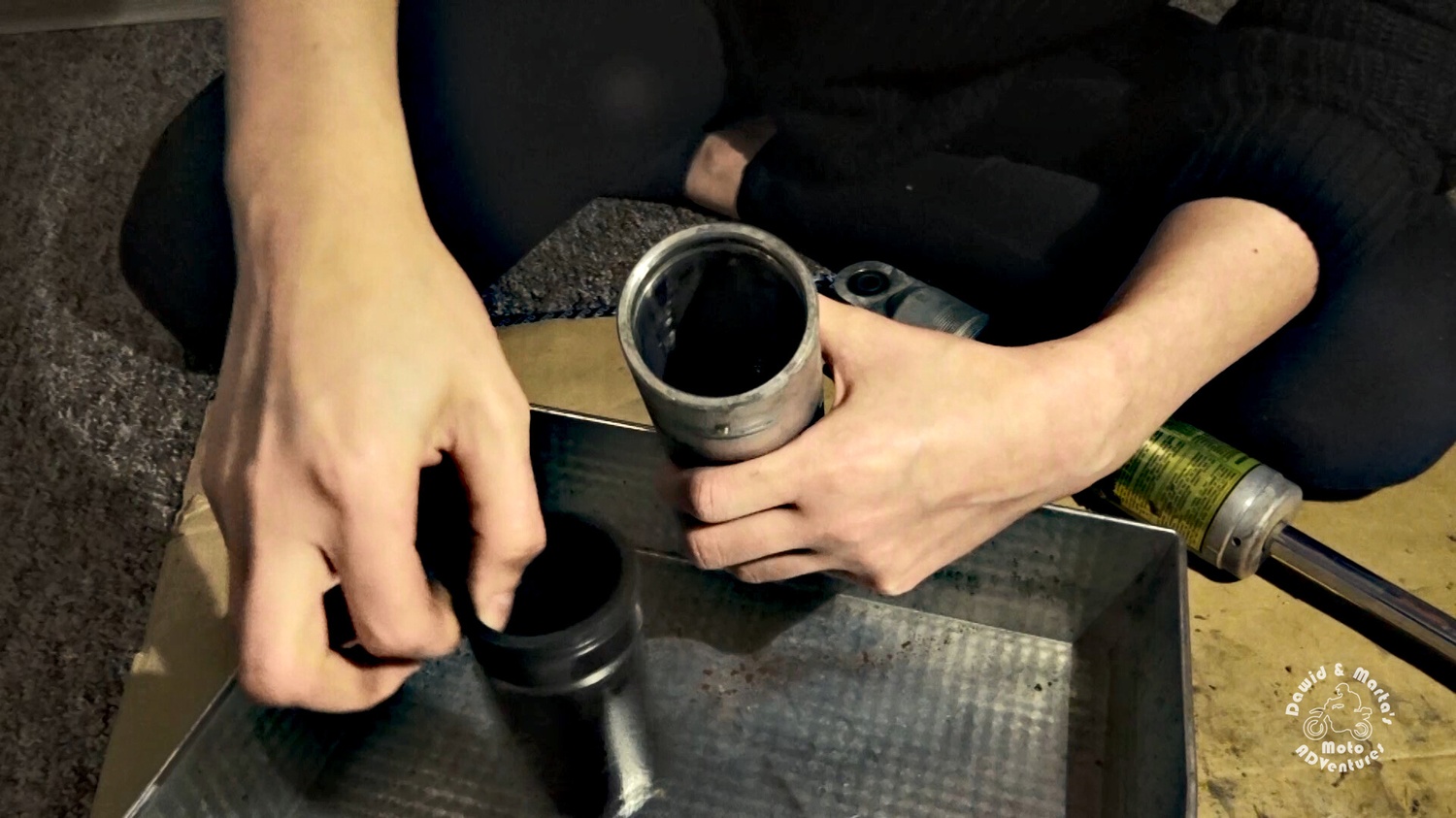



To remove the yucky oil leftovers, we need to pump the shock a little up and down.




Taking the compression adjuster into parts
Next we remove the compression adjuster.
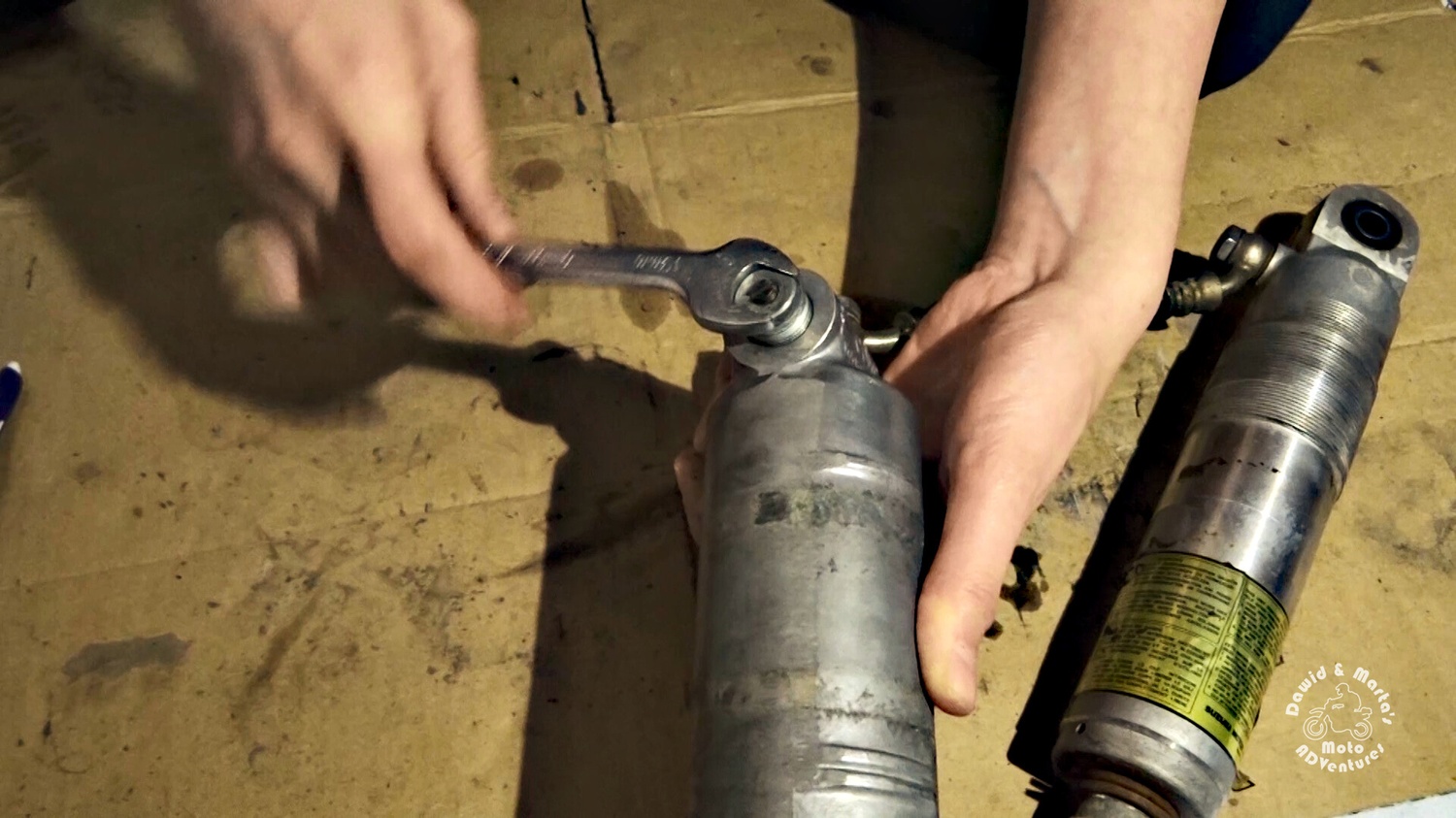



But! Be careful, as there should be two additional pieces of one way valve inside the air can and it’s better not to lose it. Make sure you take them out too. Here you can see all pieces you should collect at this step ;)
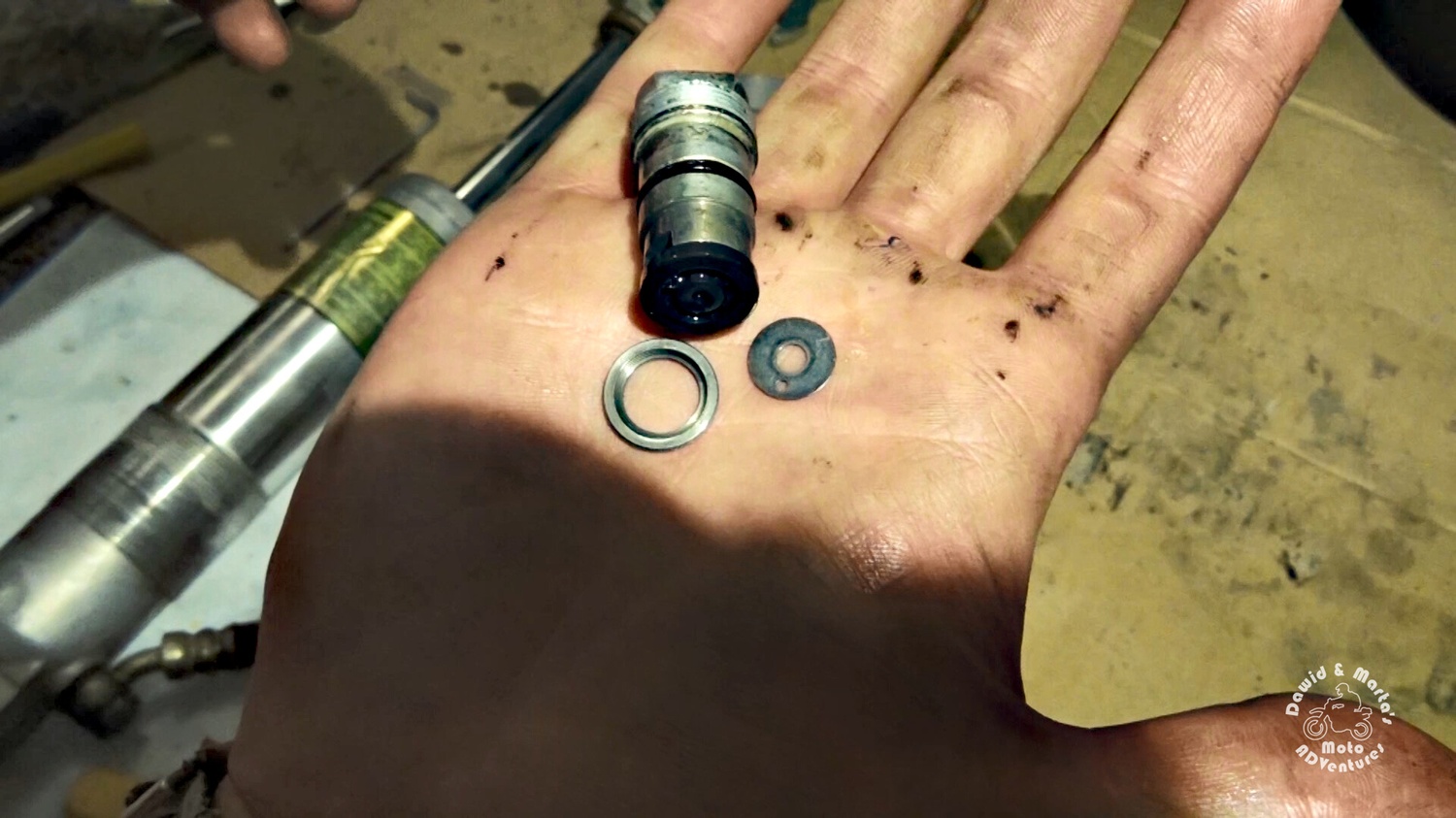

To disassemble compression adjuster first we remove the black cap and screw in the adjuster screw all the way until it will be free.
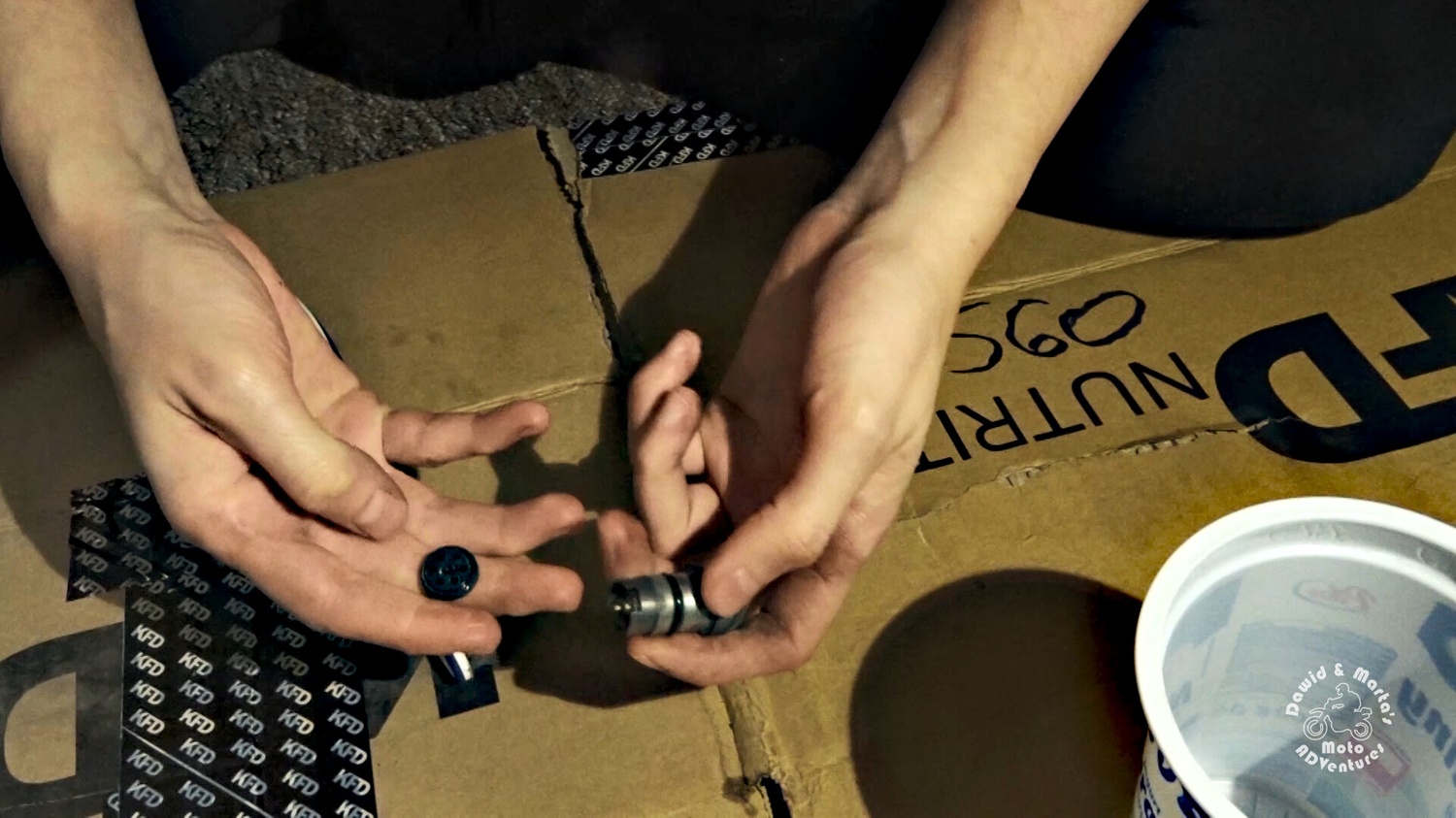



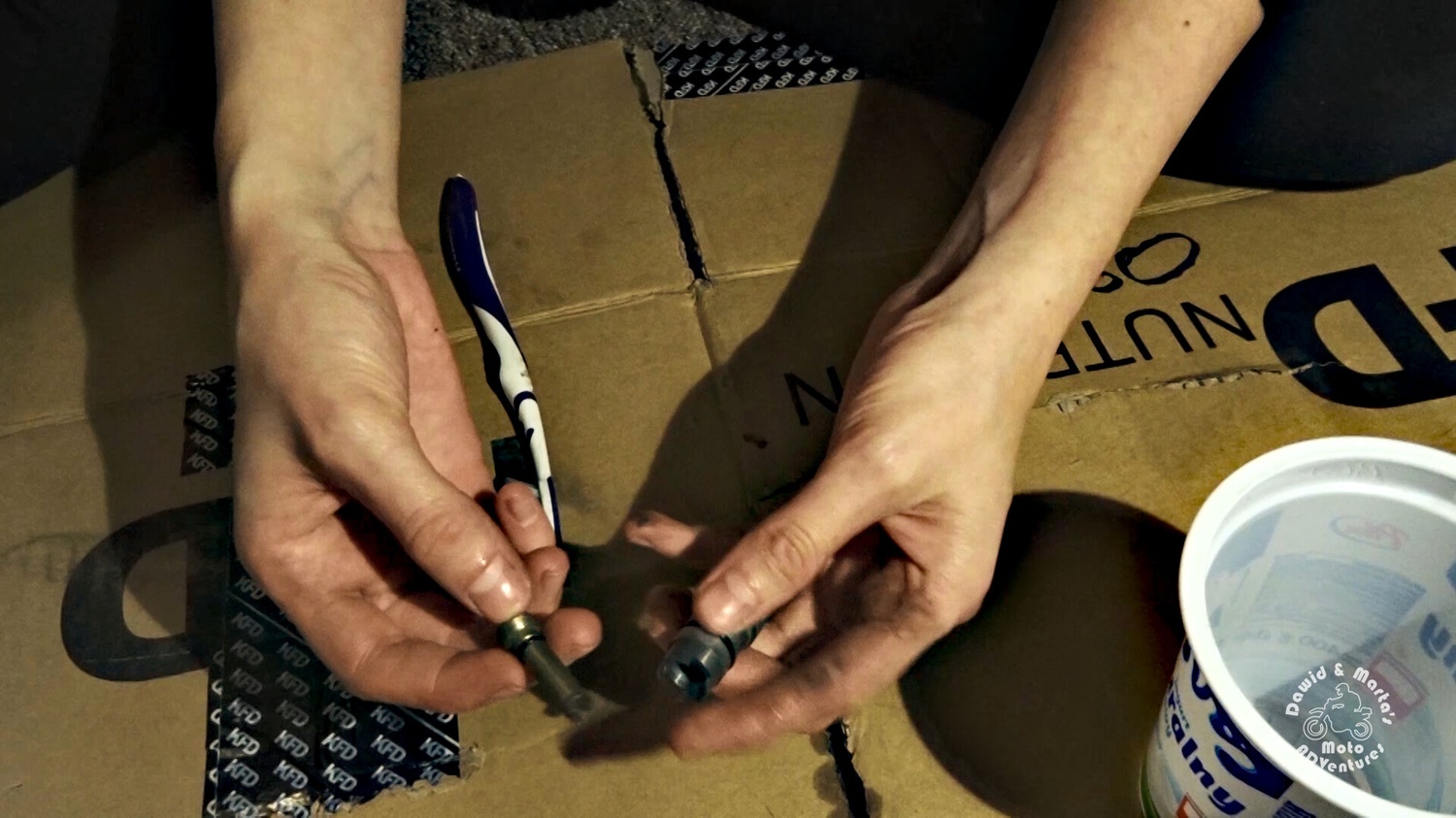

Now we have just some cleaning left. For the the air can I used the brake cleaner again. For other parts – I used an engine cleaner.
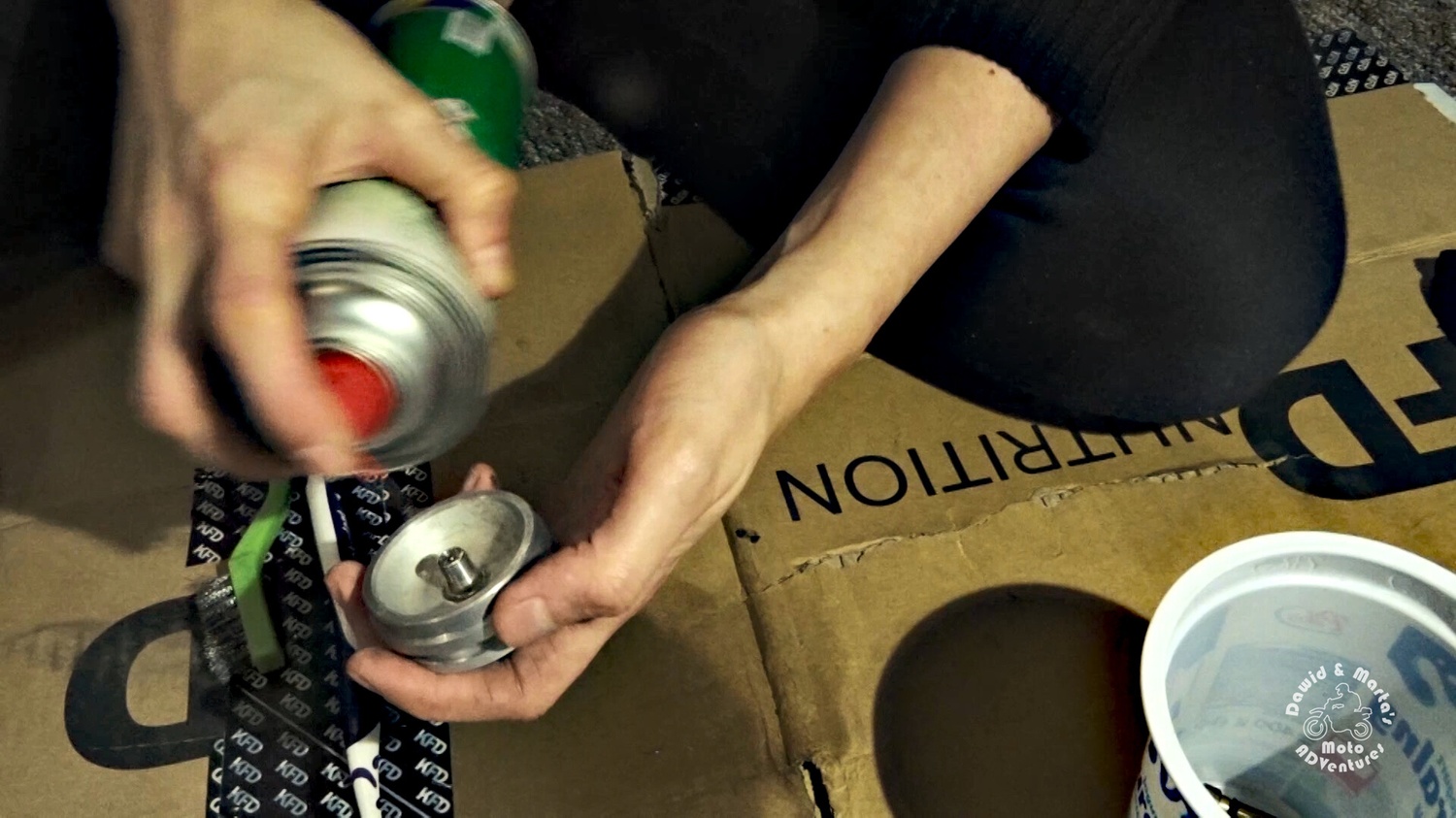

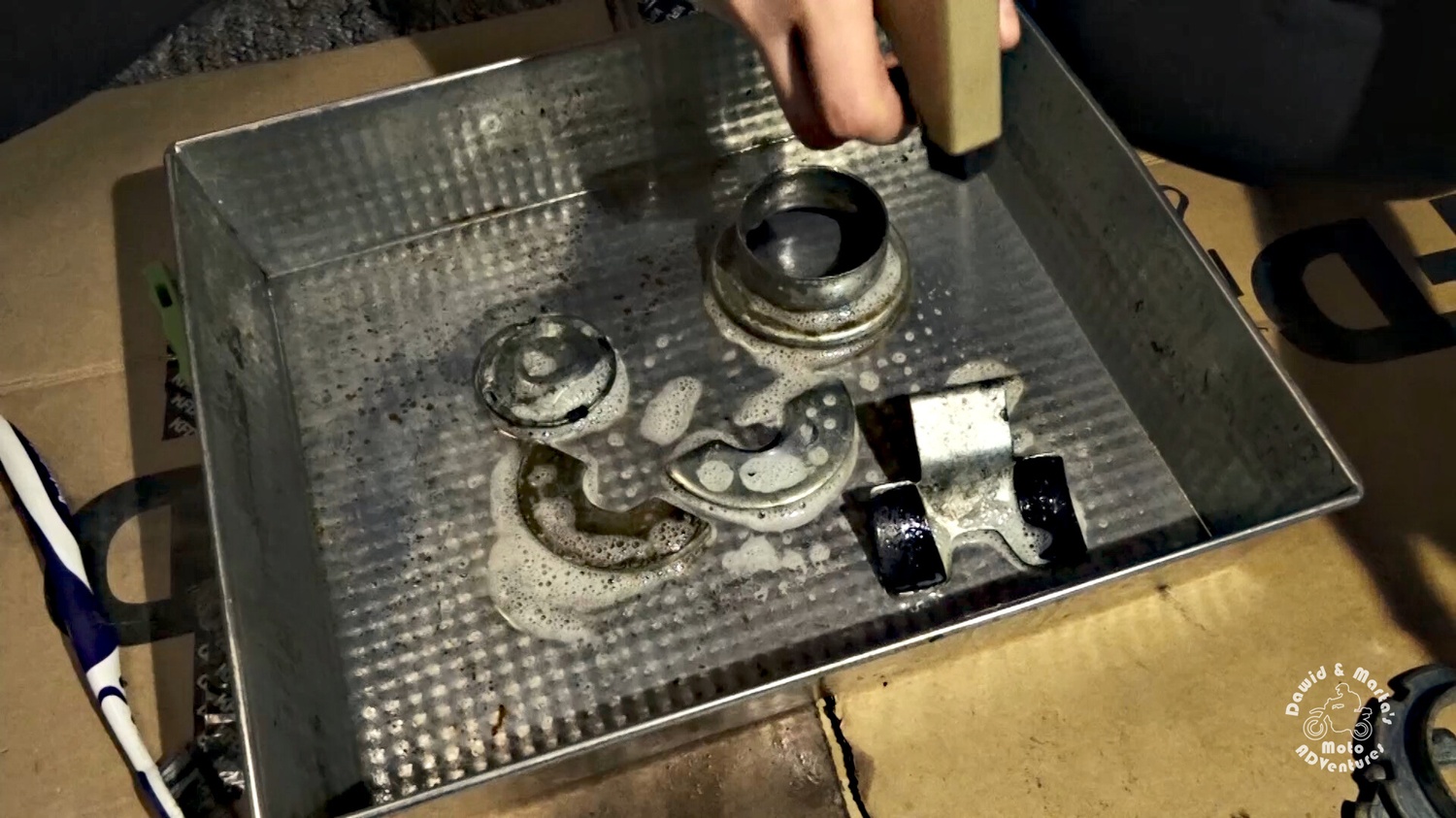

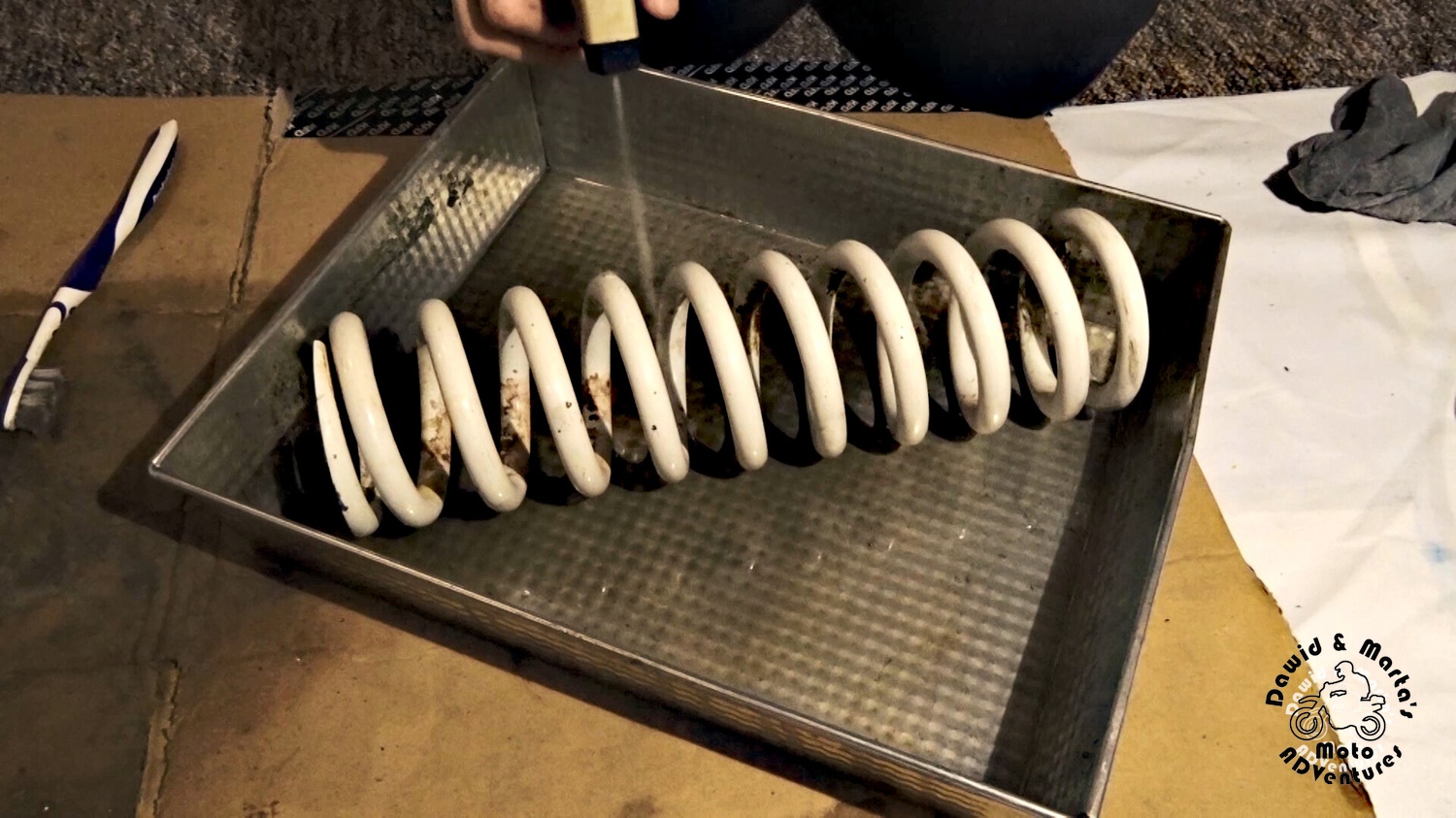

Disassembling the shock cylinder body
Next we will dismantle the shock cylinder body and check the piston and the sealing head.
First we need to remove the tube cap. As you will see below, I just put a drill bit in the small hole in the cap and gently punch it with a hammer.
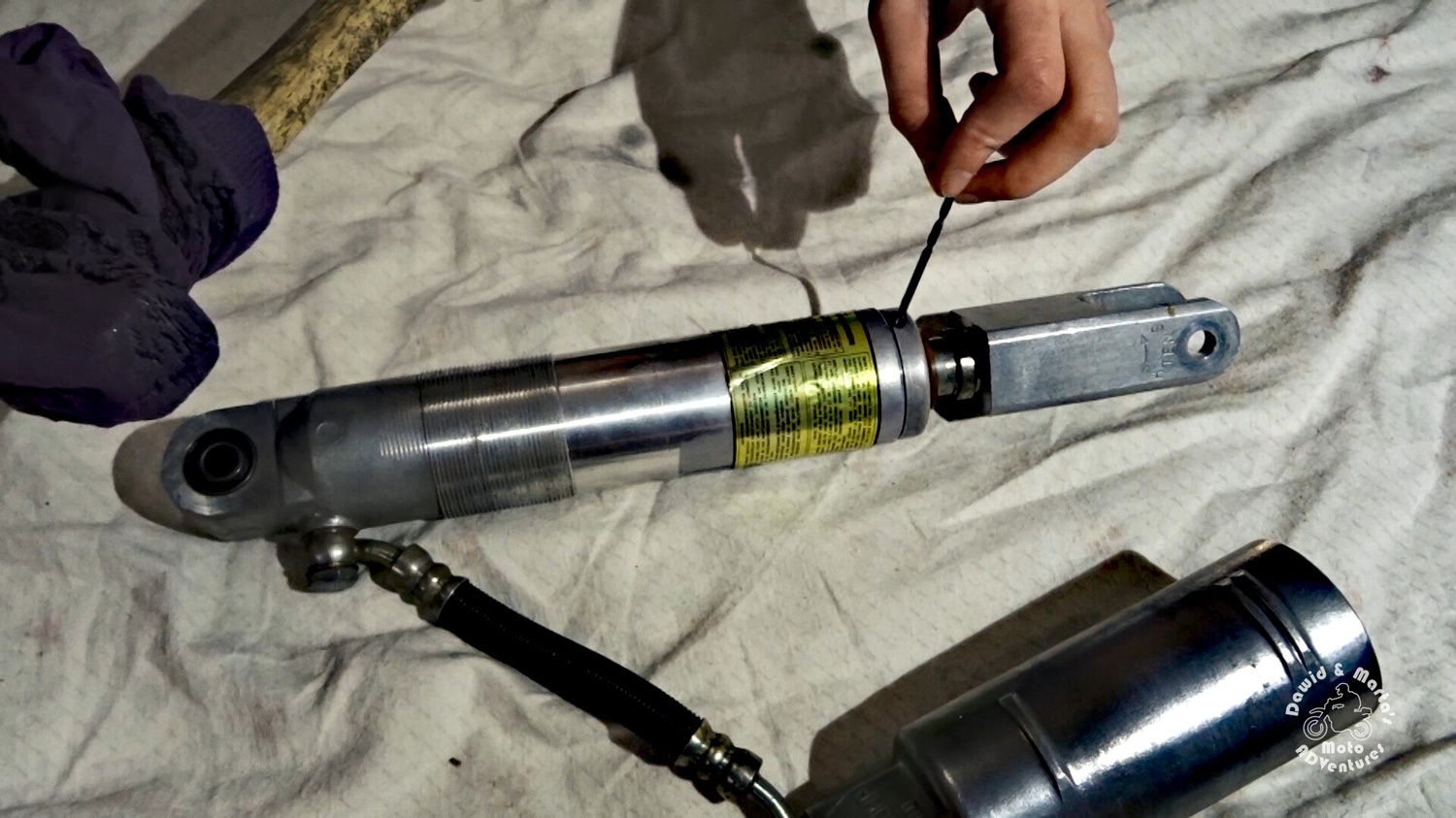

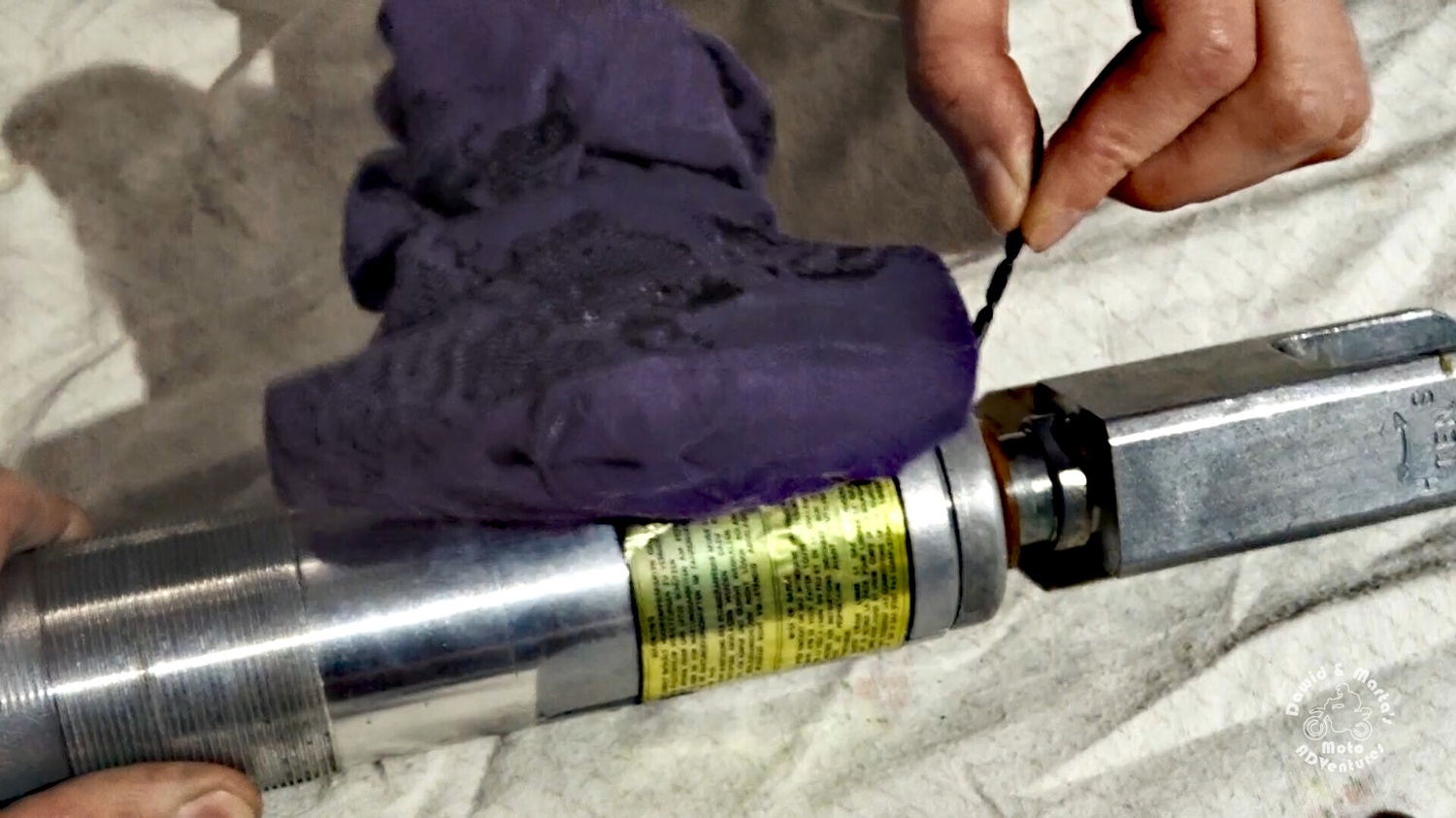

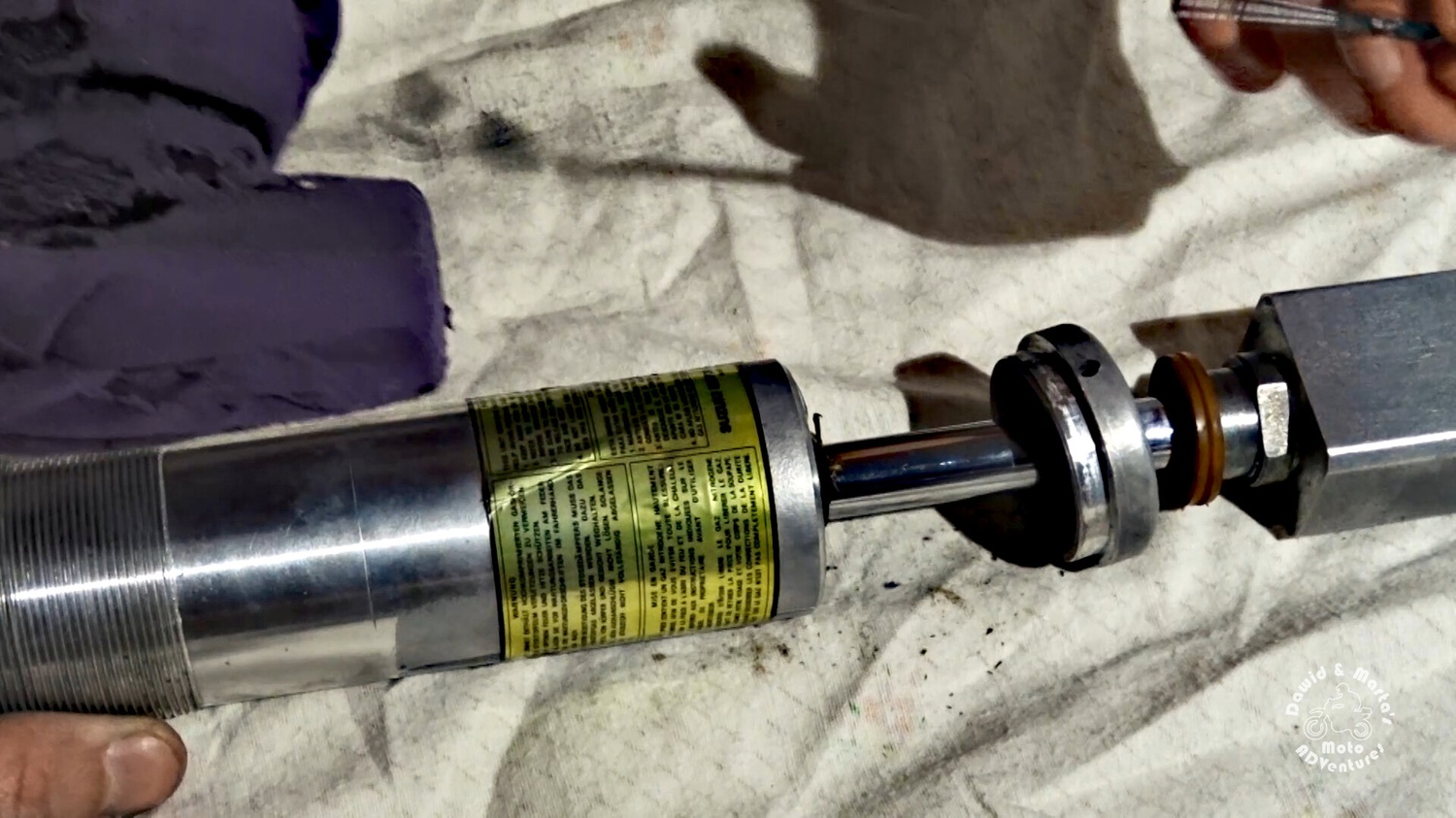

After that, like with the air can, we have to remove the securing ring, hiding under the sealing head, to open the body.
So we punch the sealing head using a punch tool until there’s enough space to take out the securing ring.
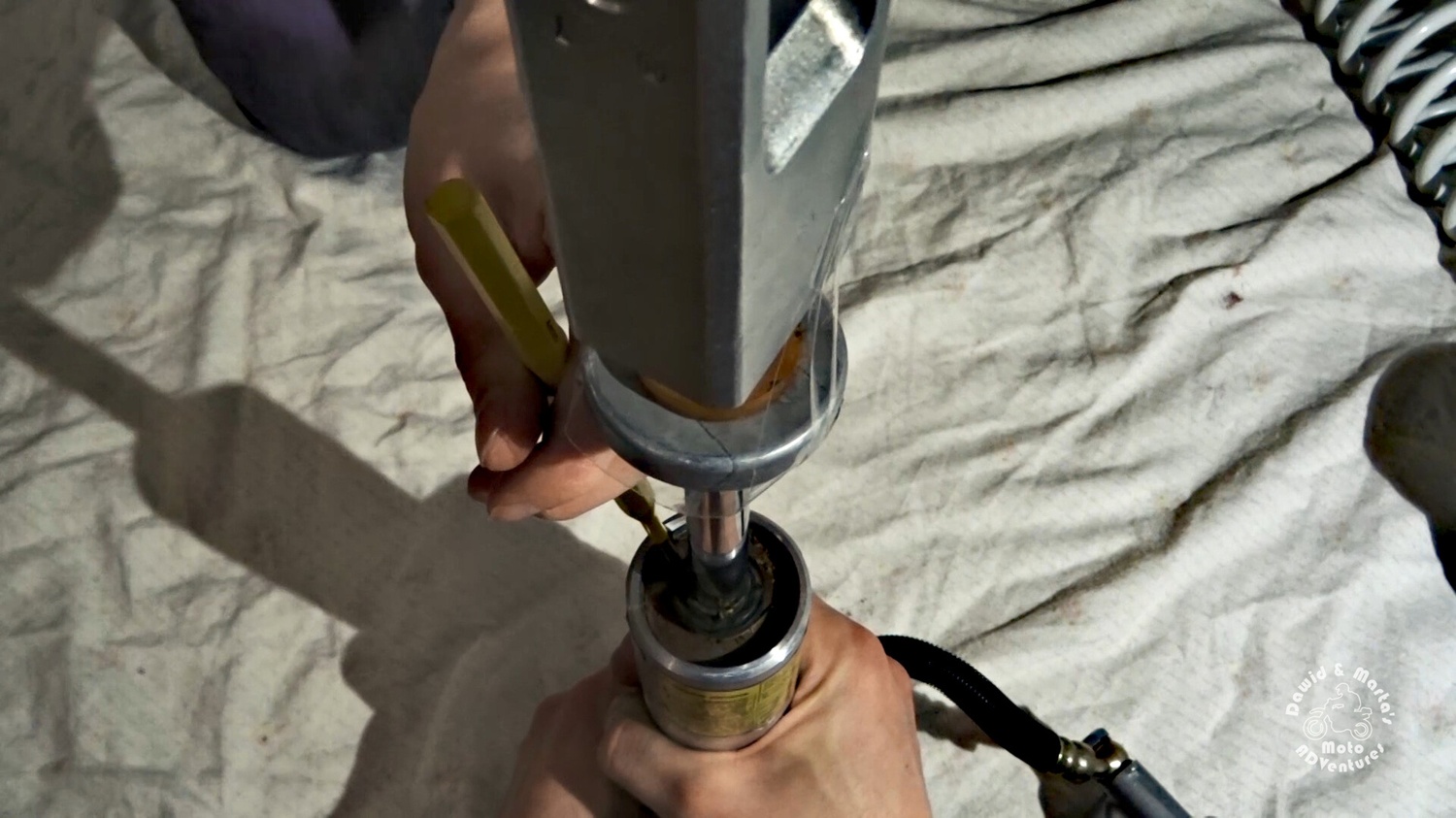

Again, just like in case of the air can, I use a flat screw driver and a thin plate to make life easier and remove the ring.
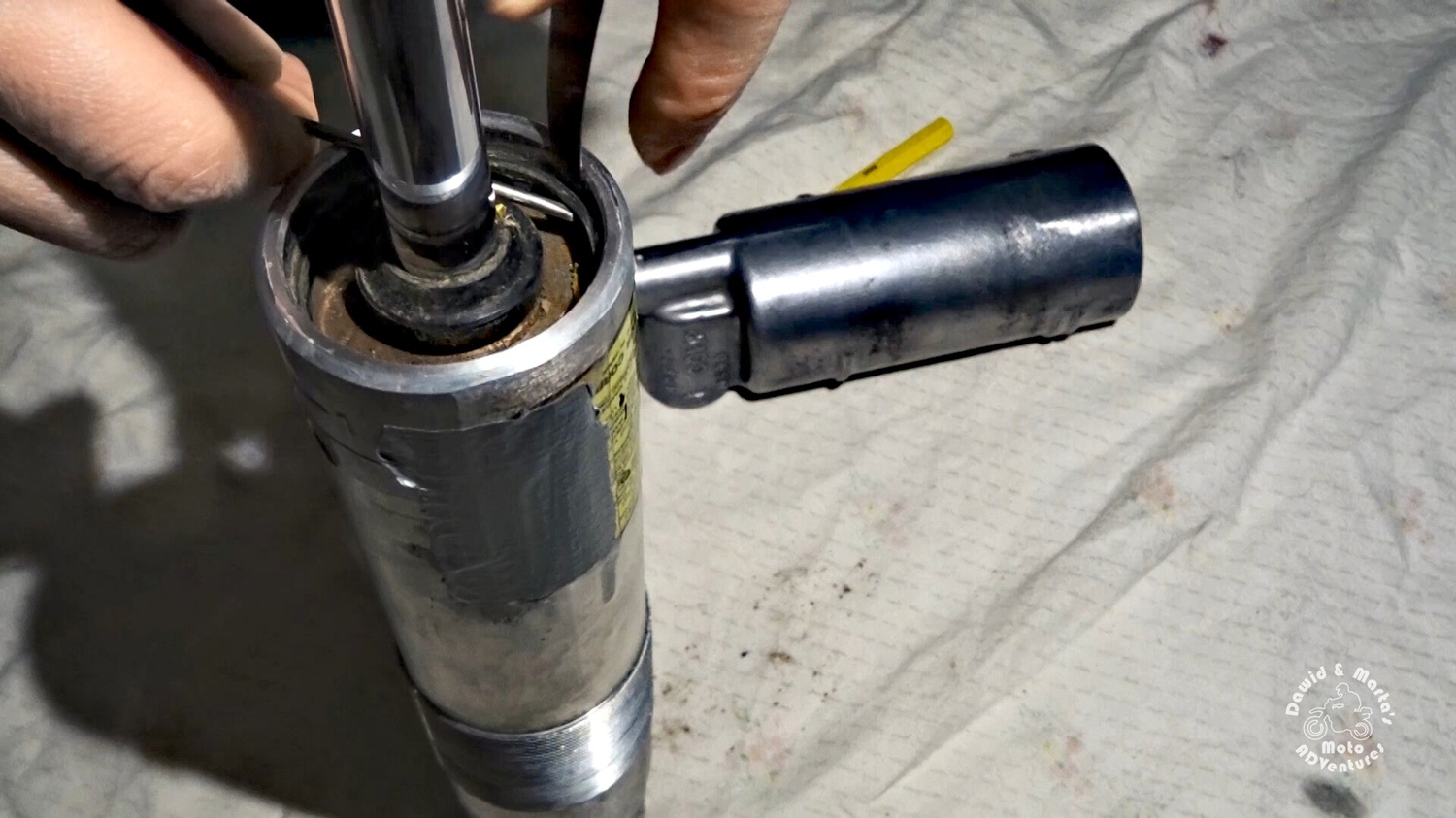

Next we slide the piston up and down to pull out the sealing head. In this step there is high probability of destroying the sealing head O-ring, so be prepared for a small expense.




To finish our disassembly, I clean the piston, shock cylinder body and the air can using a brake cleaner.
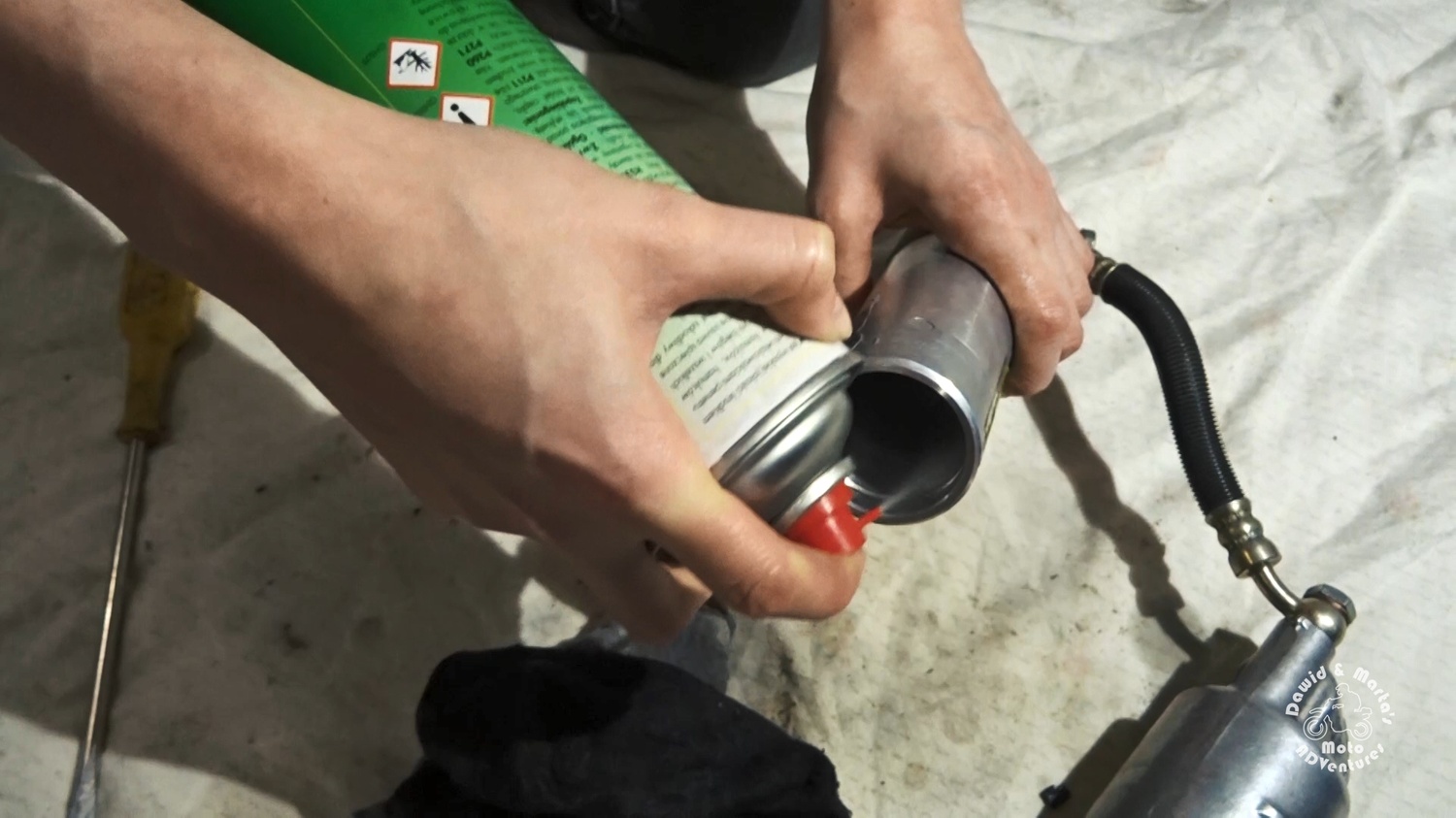



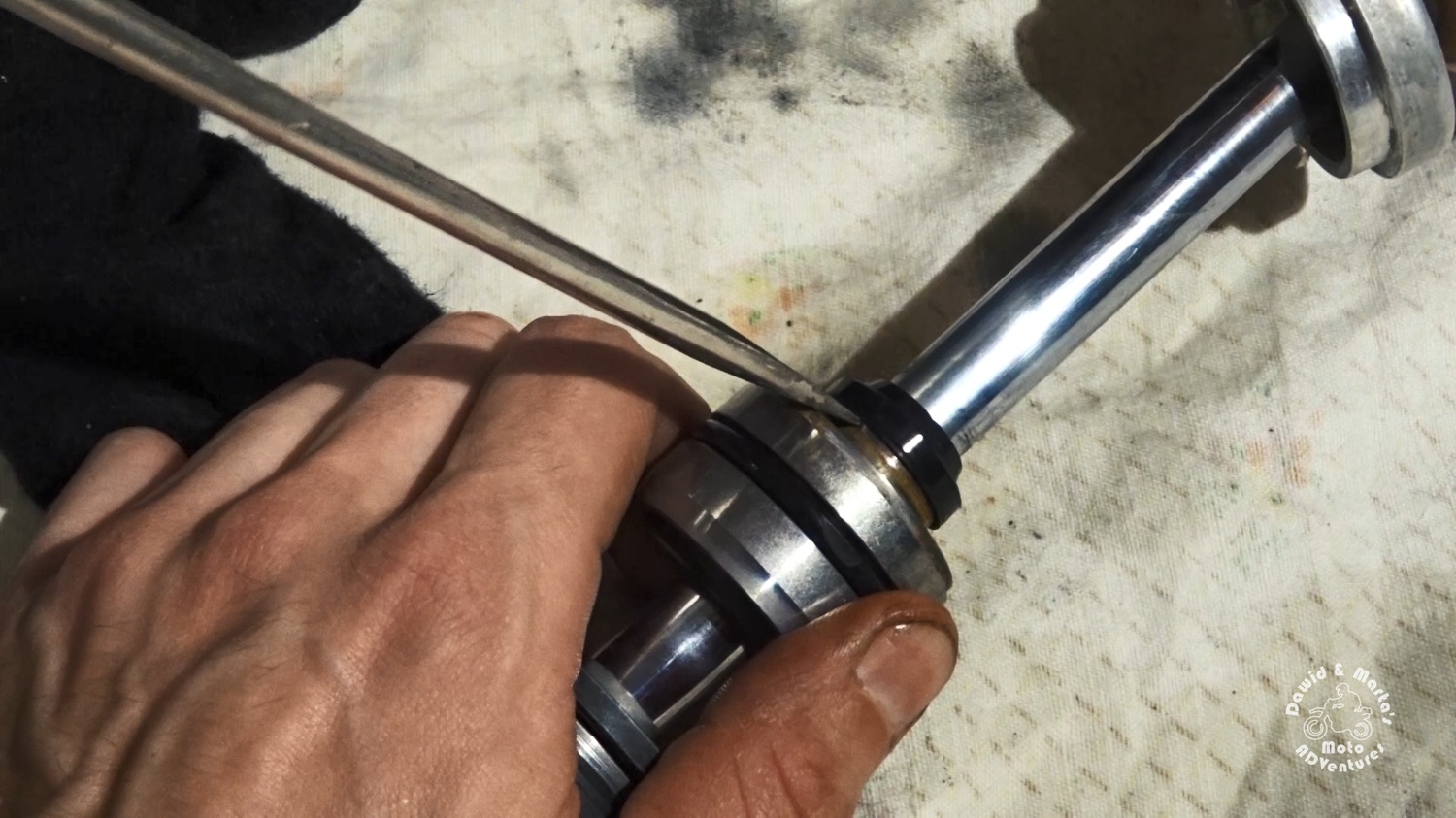

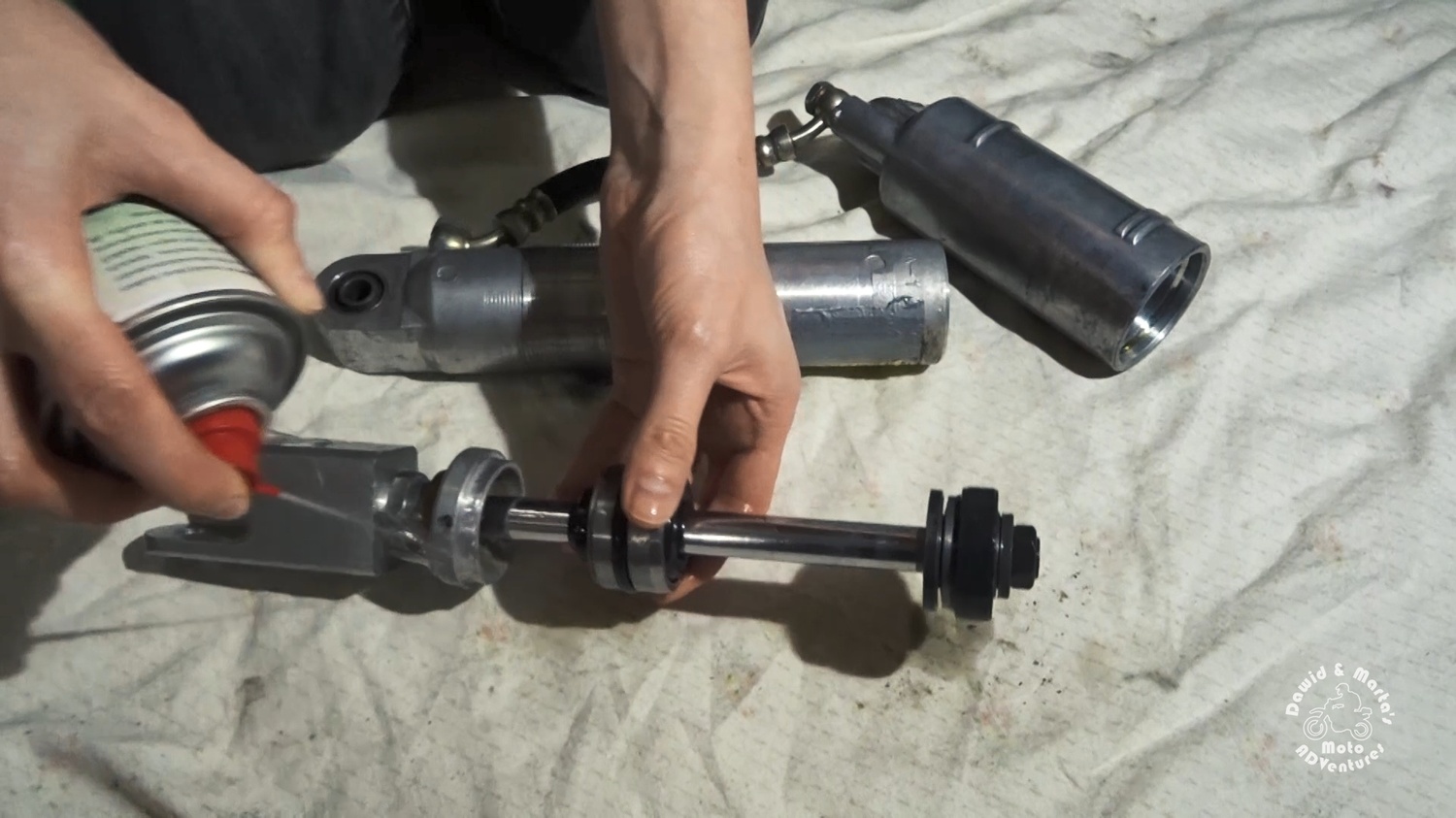

Now the only this left is inspecting the sealing head O-ring.
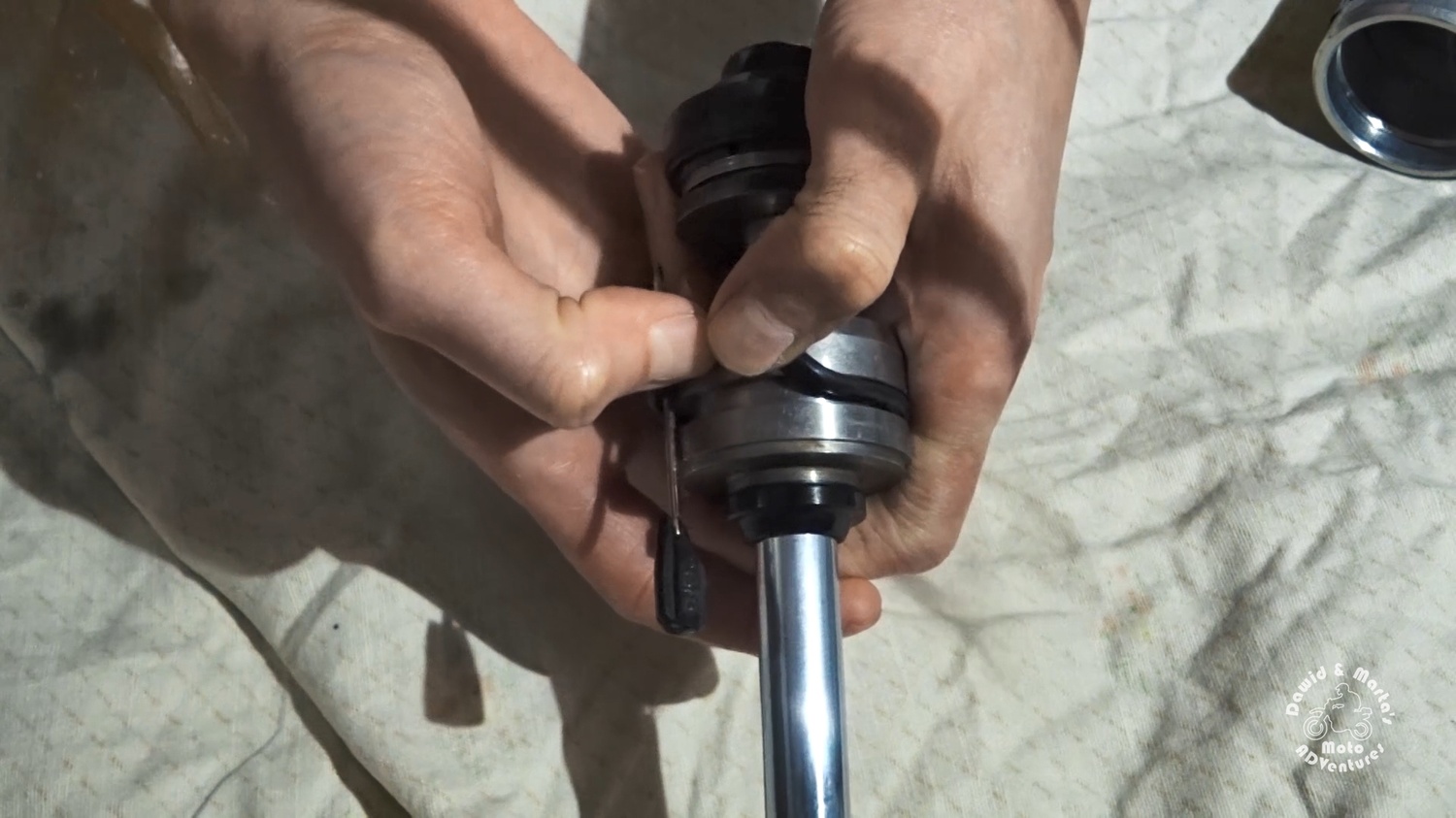



As you can see we cut off a small piece of it. So wee will now replace it with a new one.
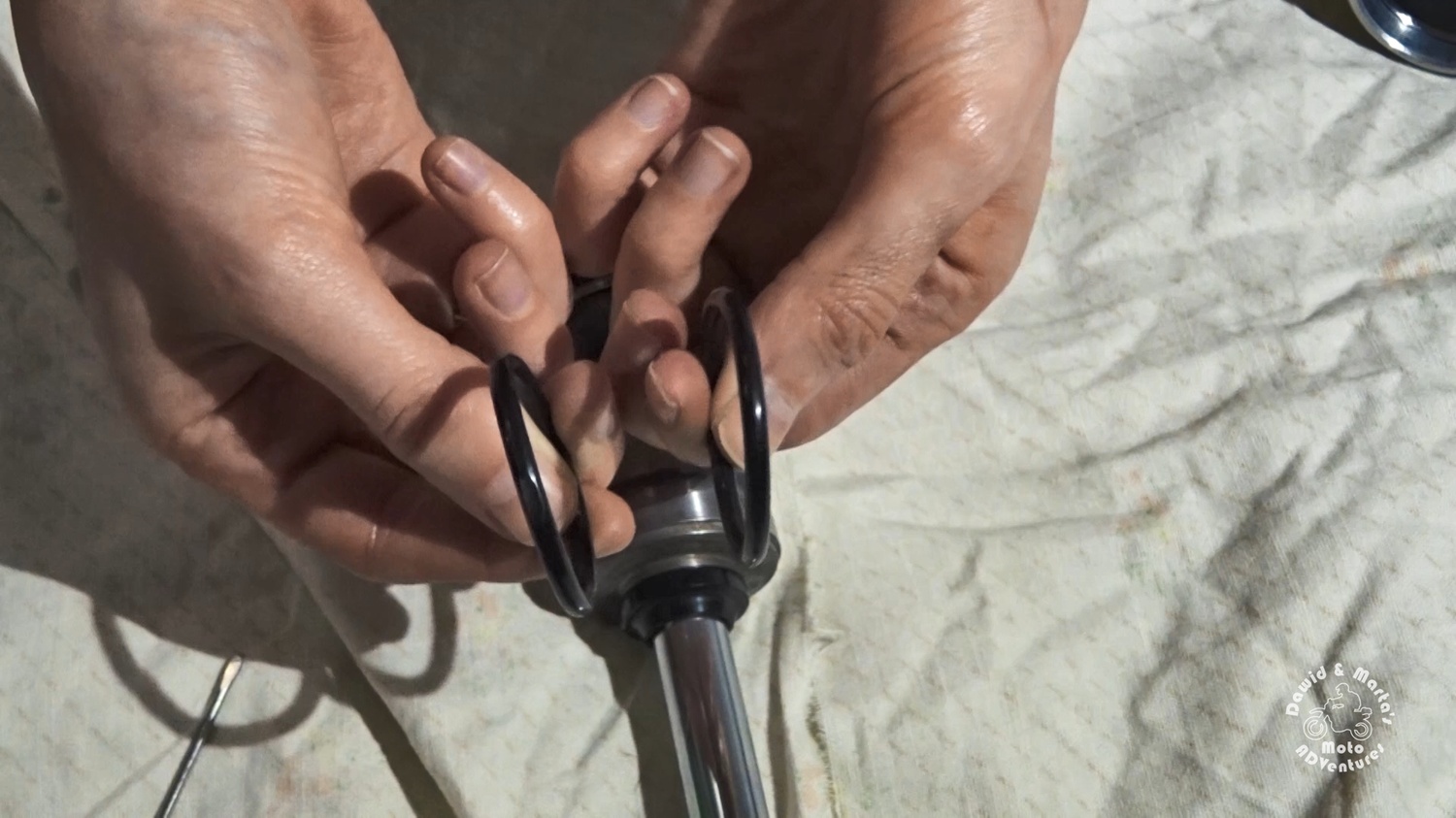

Assembling the rear shock cylinder body back together
Now only the shock assembly is left ᕕ(☉‿☉)ᕗ
First we lube the sealing head with a rear shock oil and we do the same with the piston.
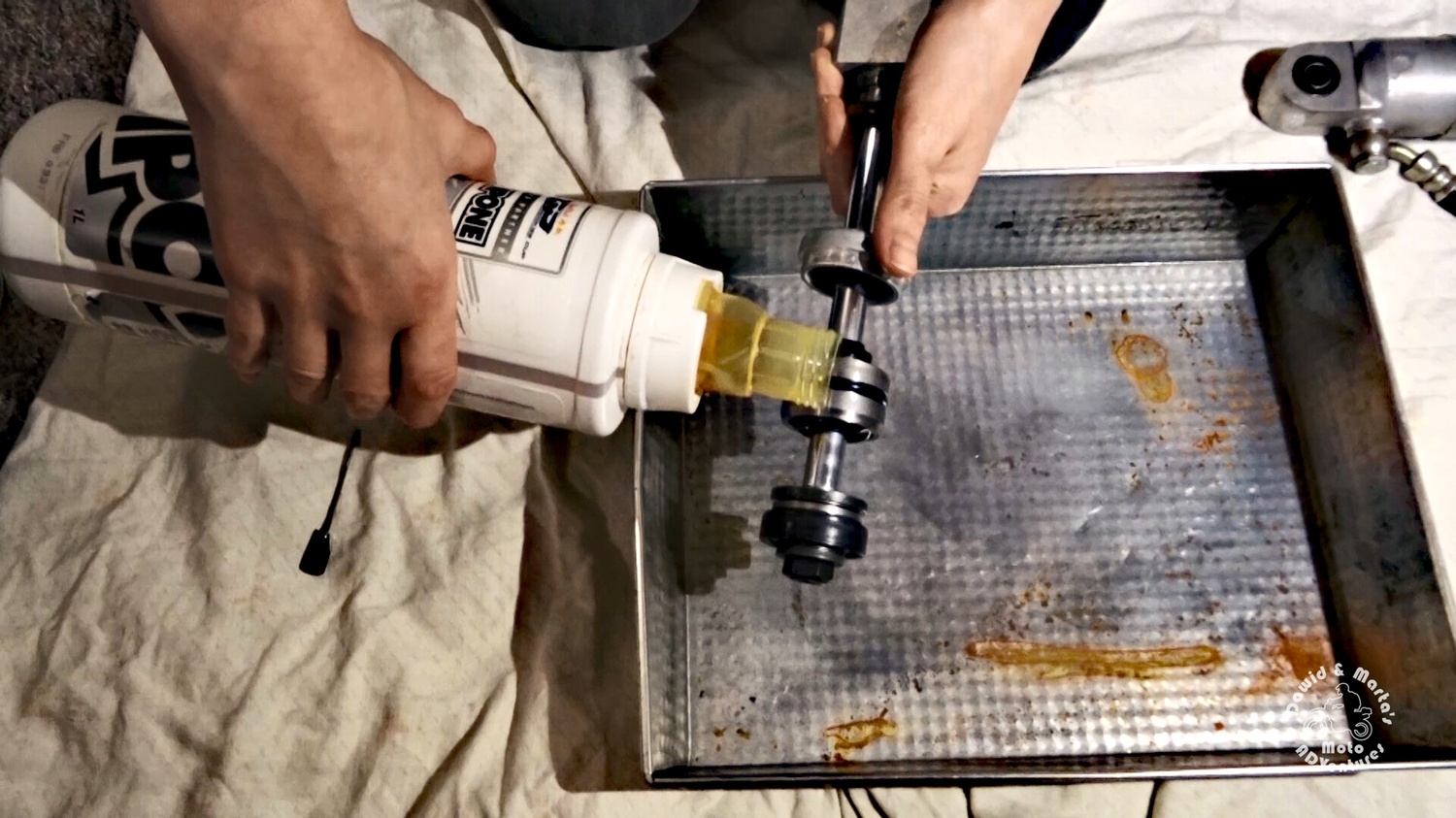

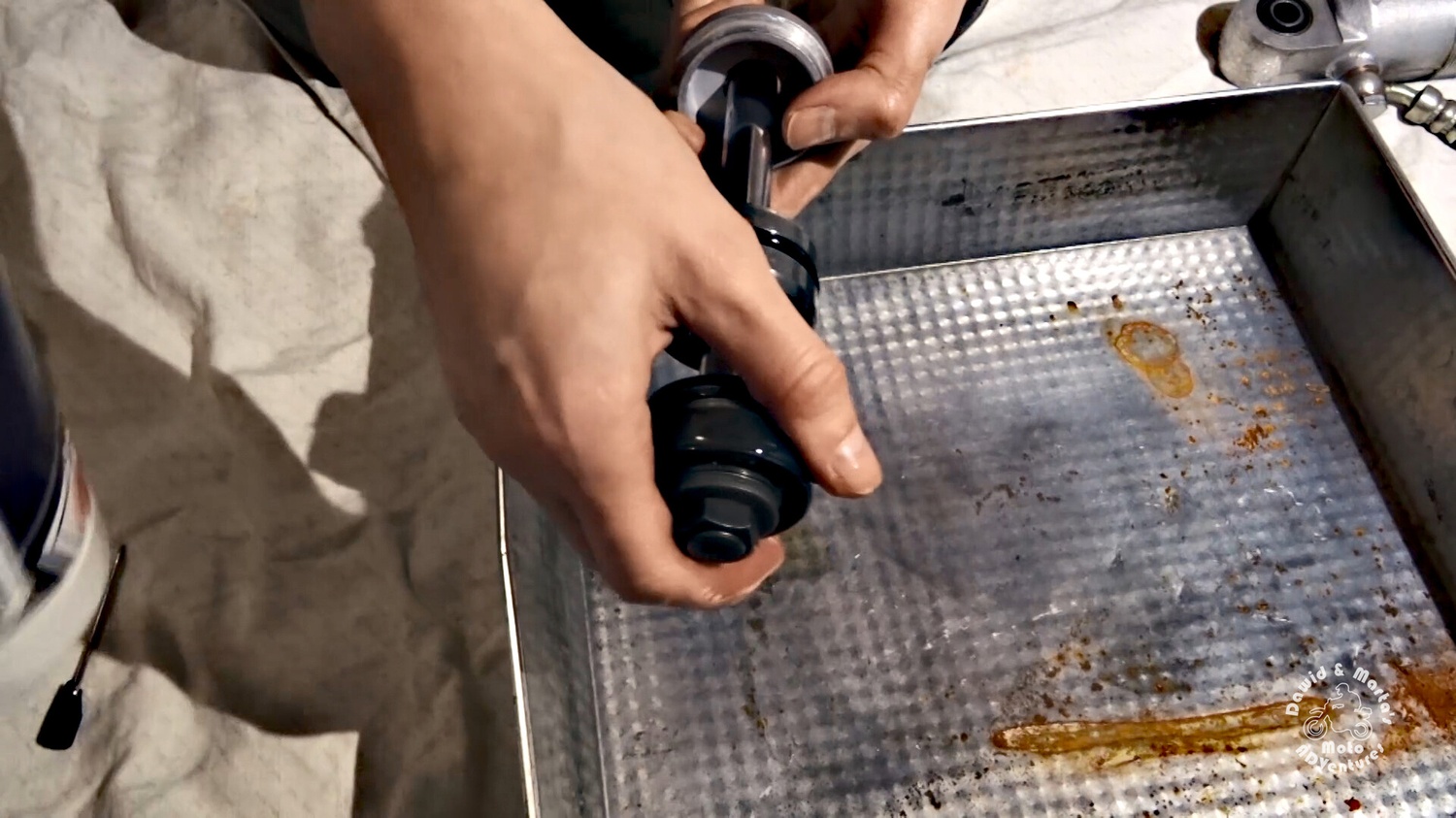

After that we can insert piston and cylinder head back into the tube.
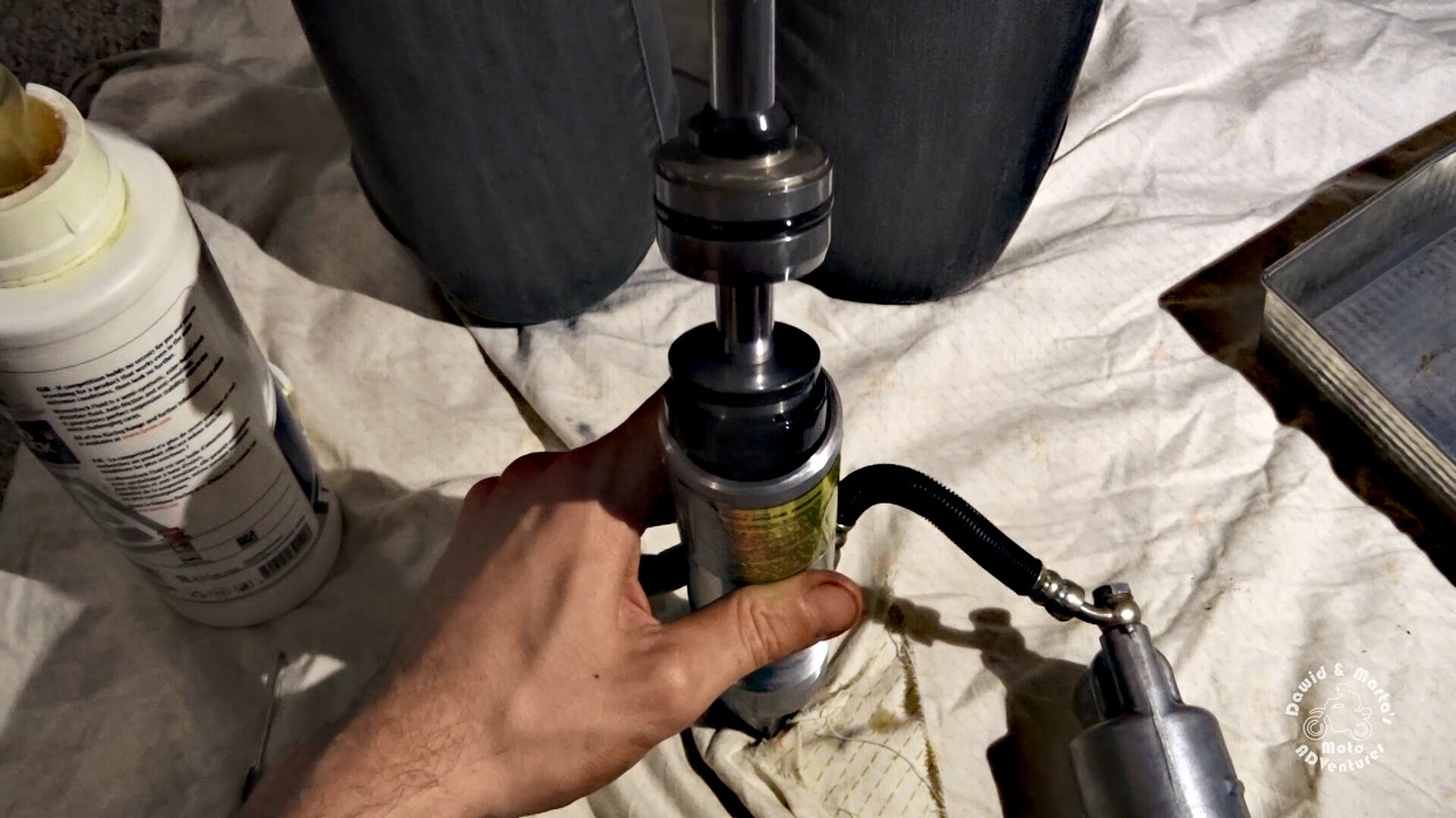

Then comes the securing ring. (Remember to make sure it is sitting well in its groove.)
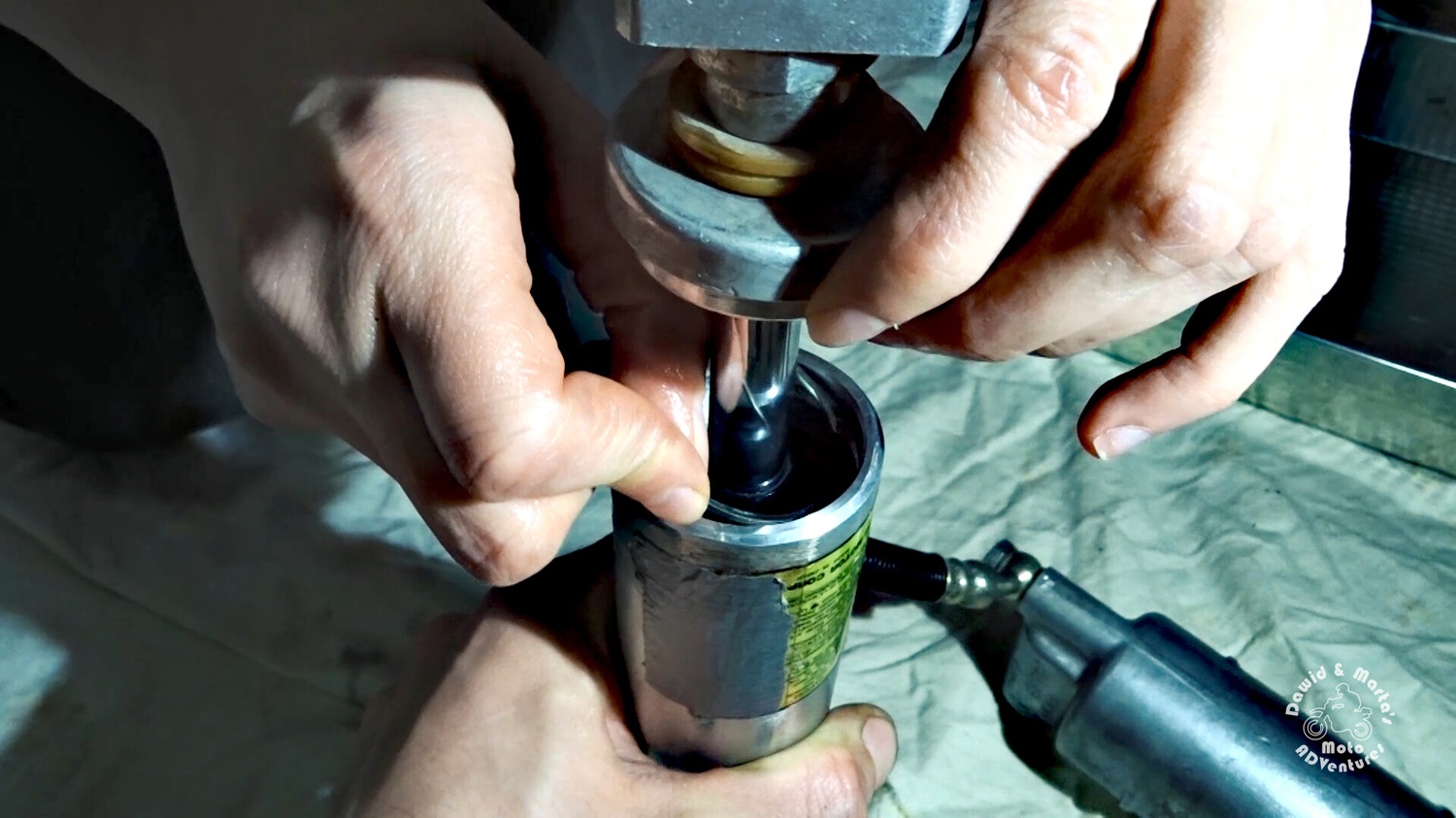

After that we draw back the piston all the way up to lock the sealing head in its place.
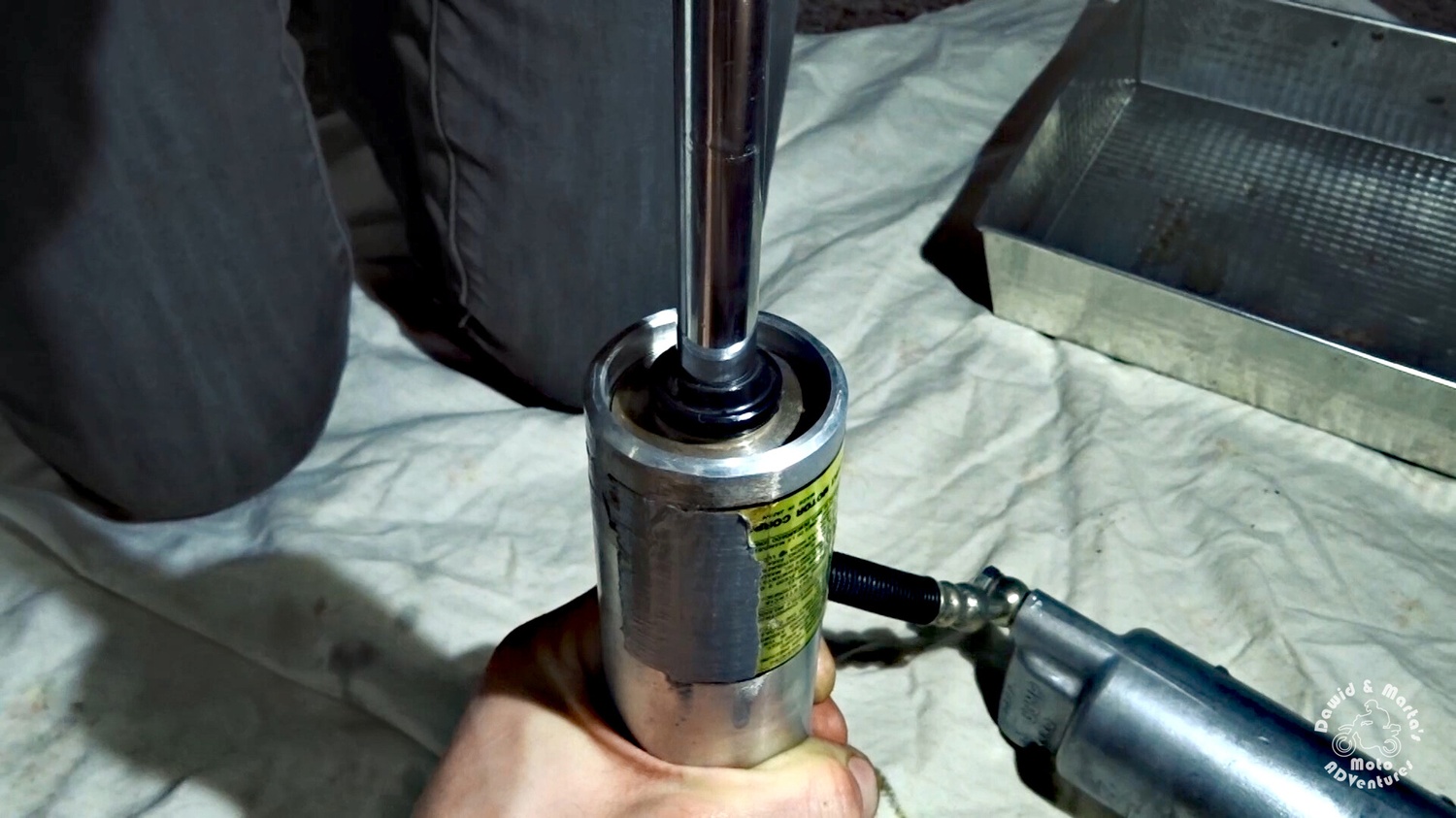

Next we put back the cover using hammer.
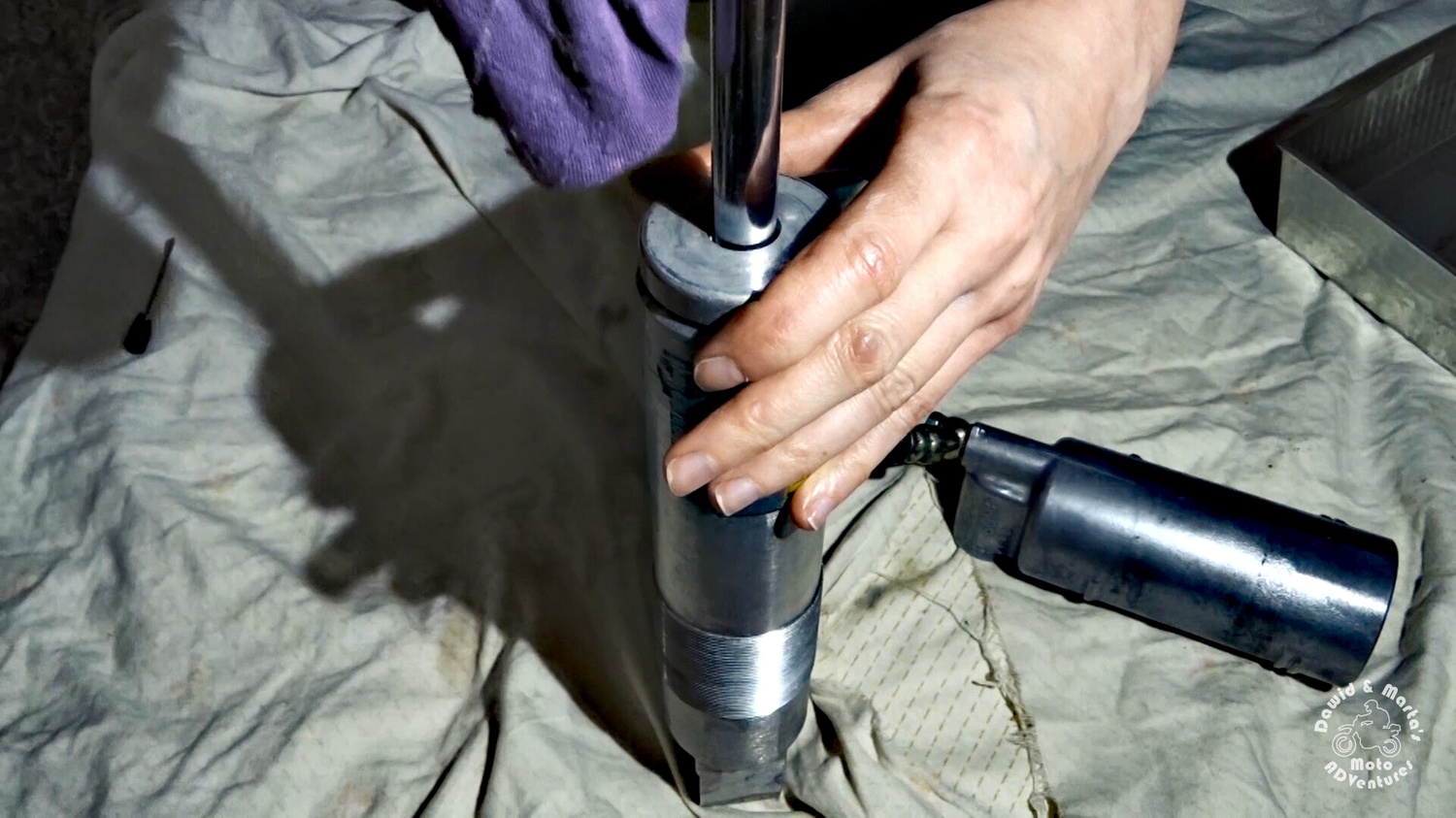



Assembling the compression adjuster
For now we’re done with the body. So we can put back together the compression adjuster.
Before assembling the adjuster screw we lube its O-ring with oil.
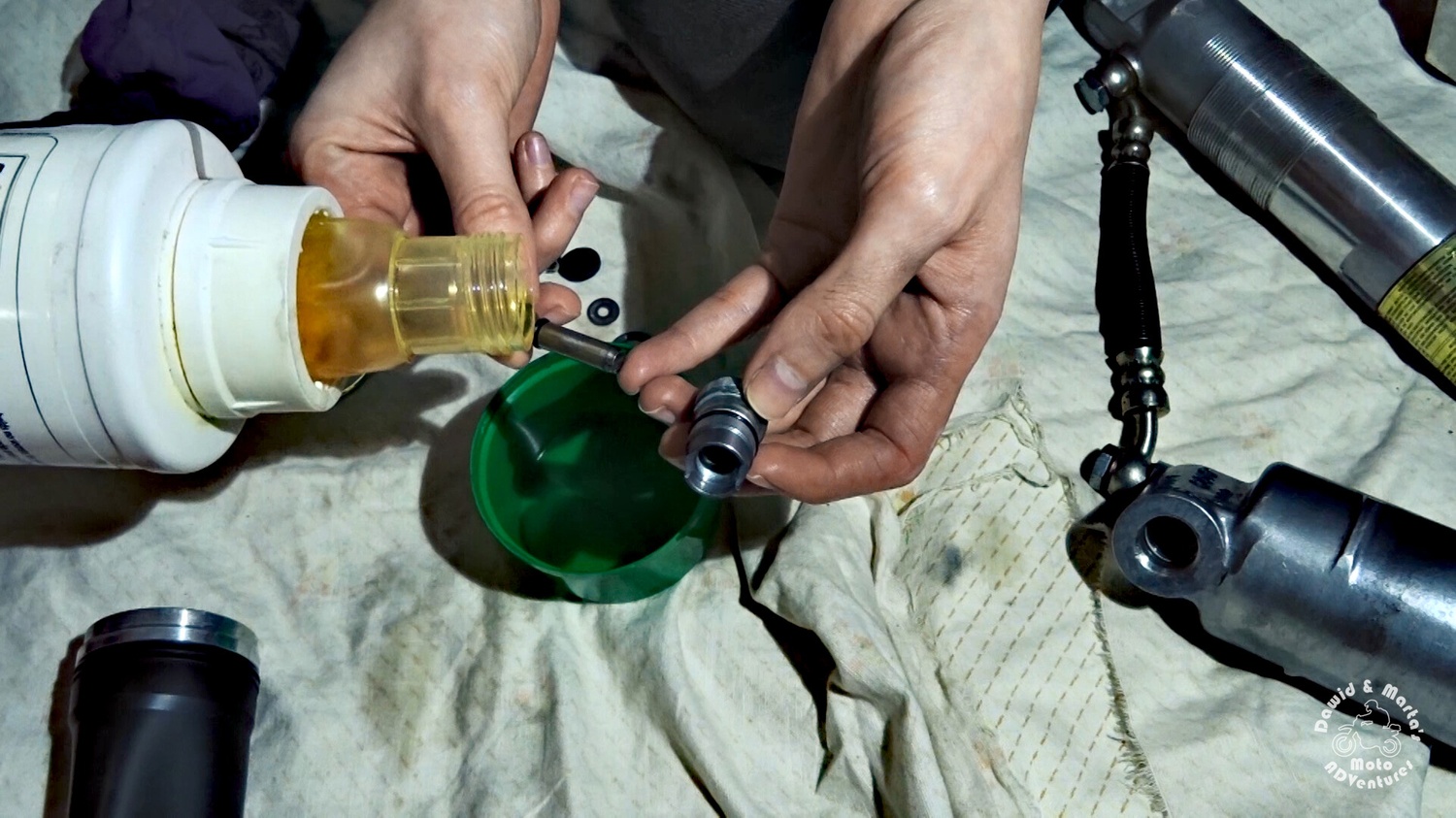

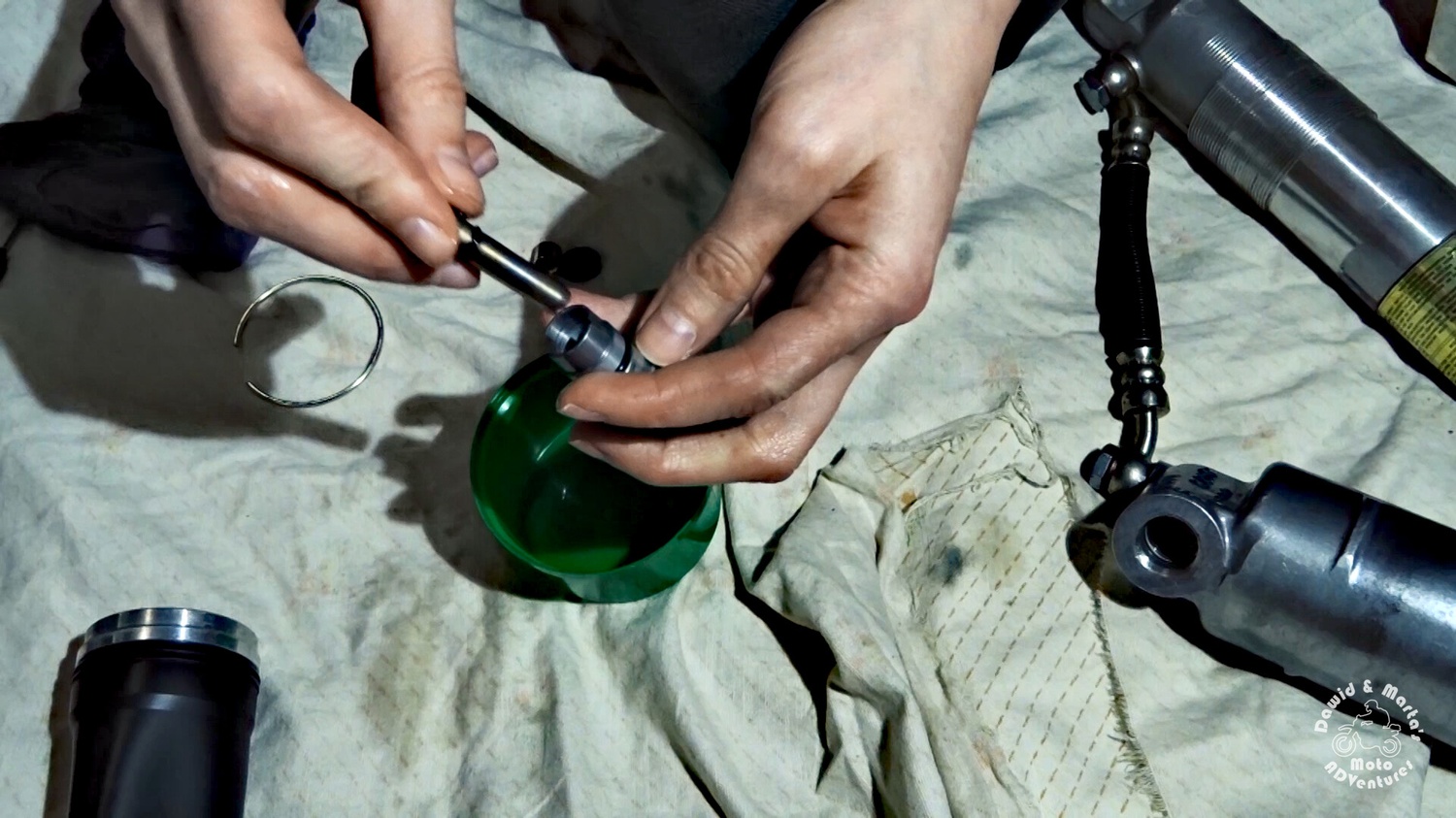

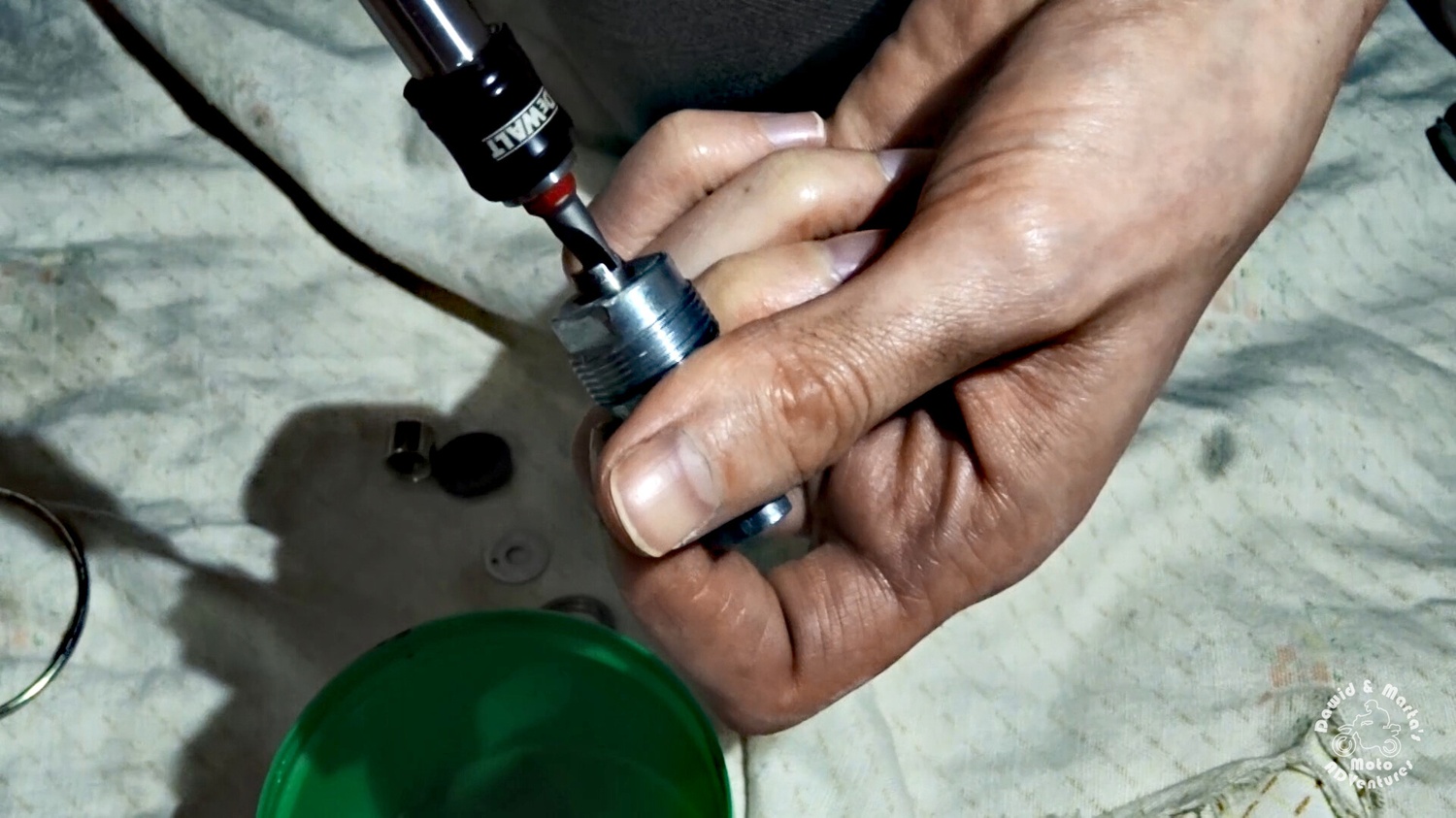

Next we put back the black cap using a socket and a hammer to lock it in it’s place.
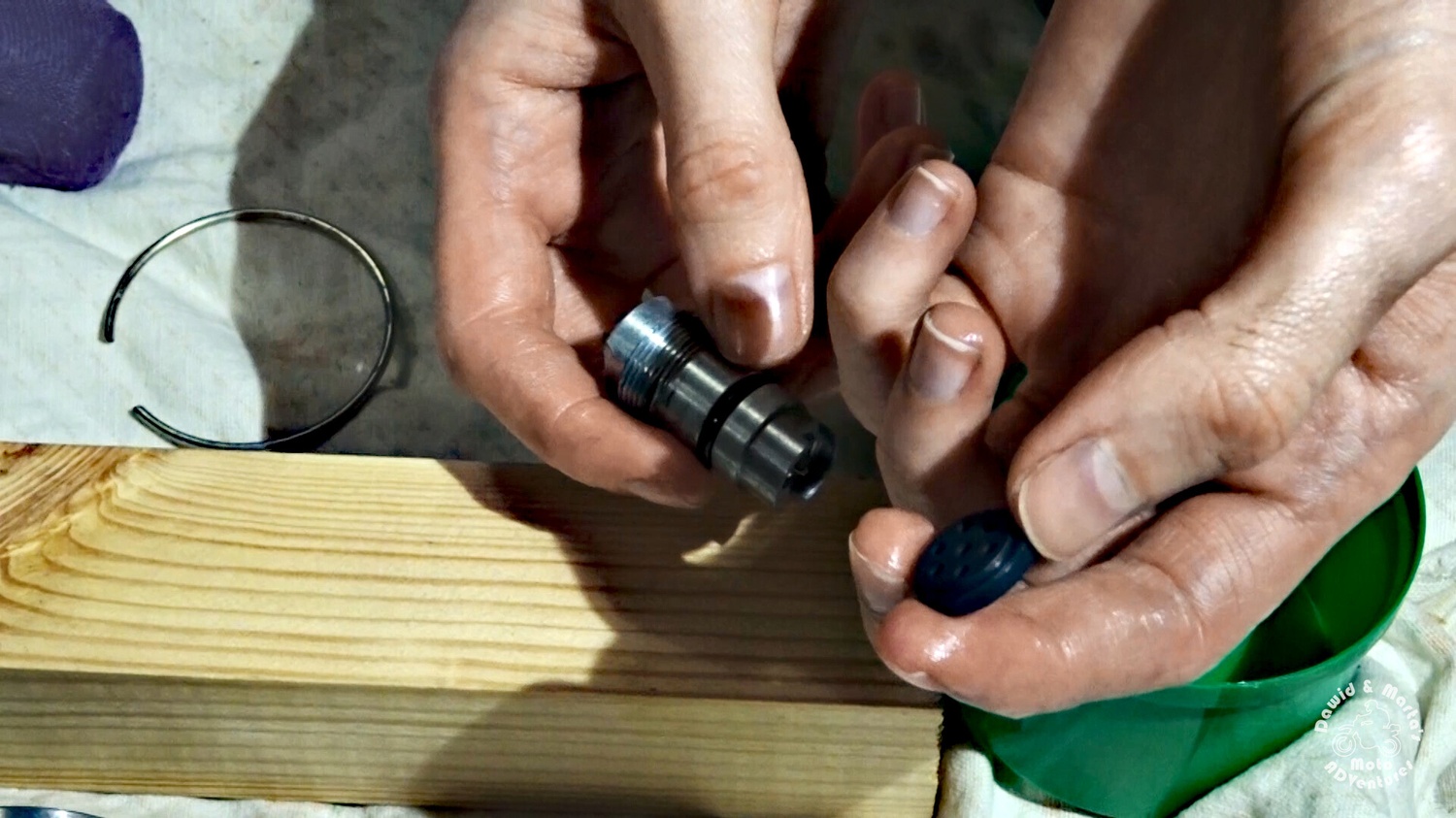

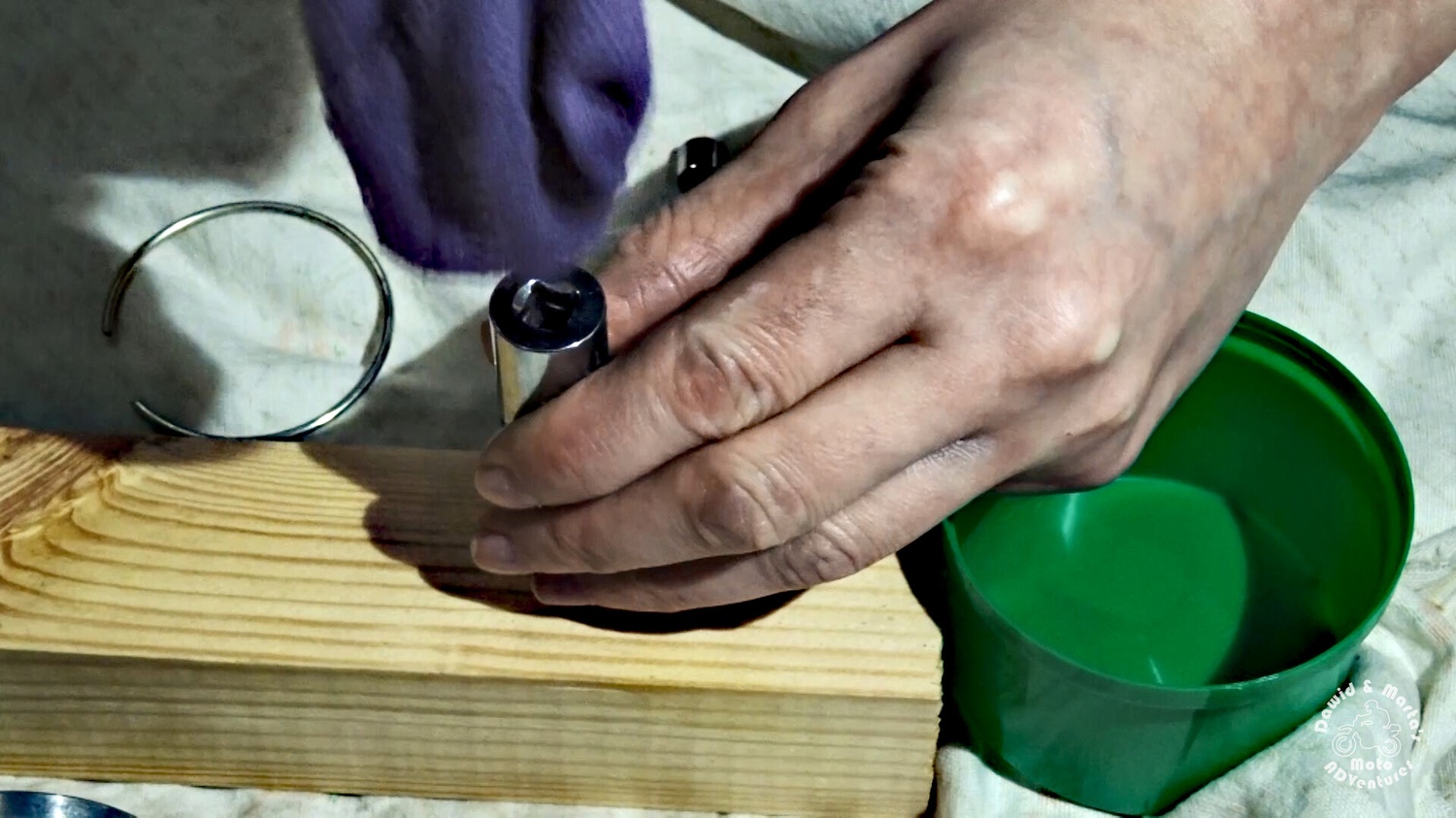



After that we put in the one way valve into the air can.
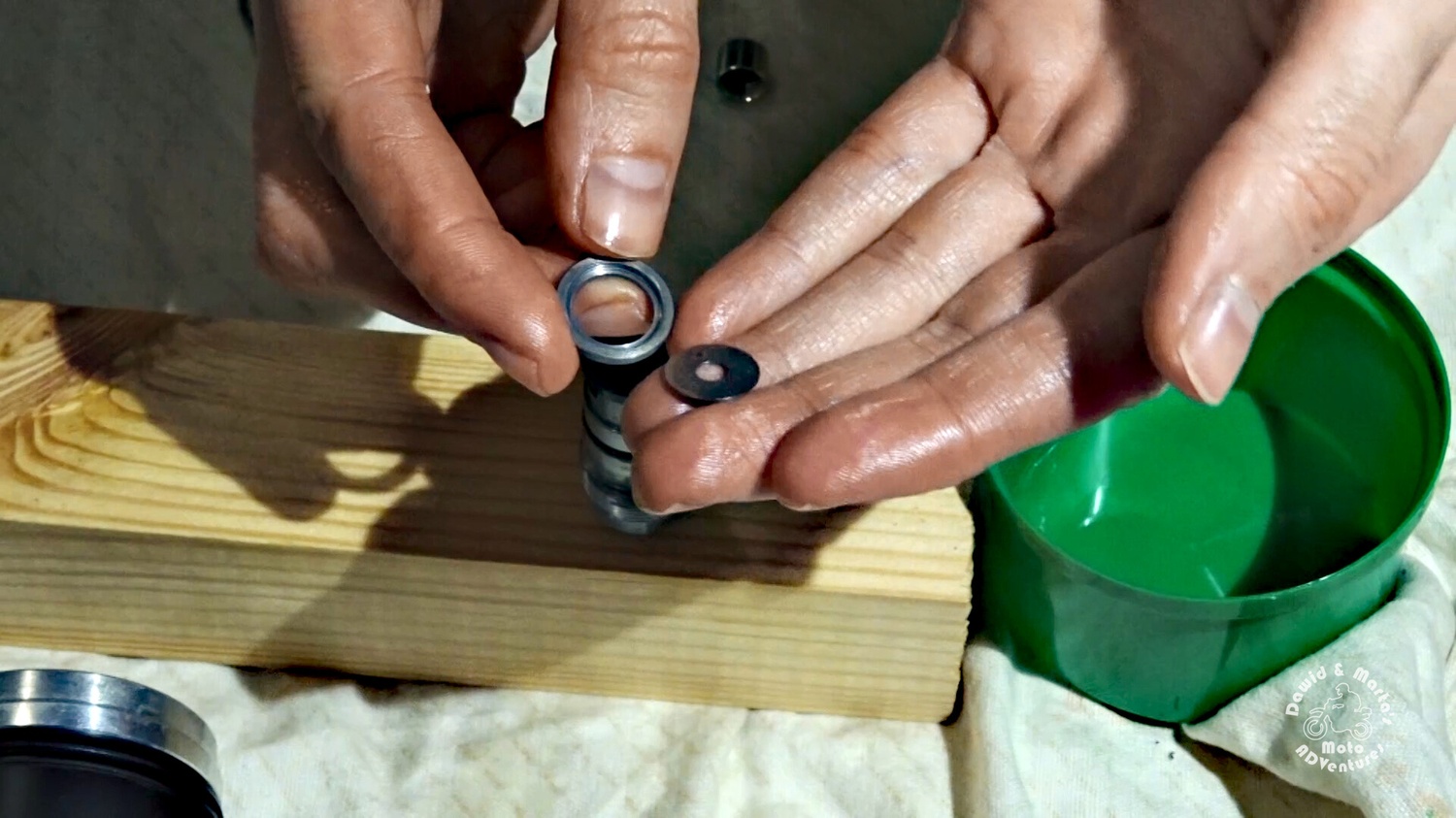

First we insert the washer on the pic below. It’s important to place it with its groove upwards.
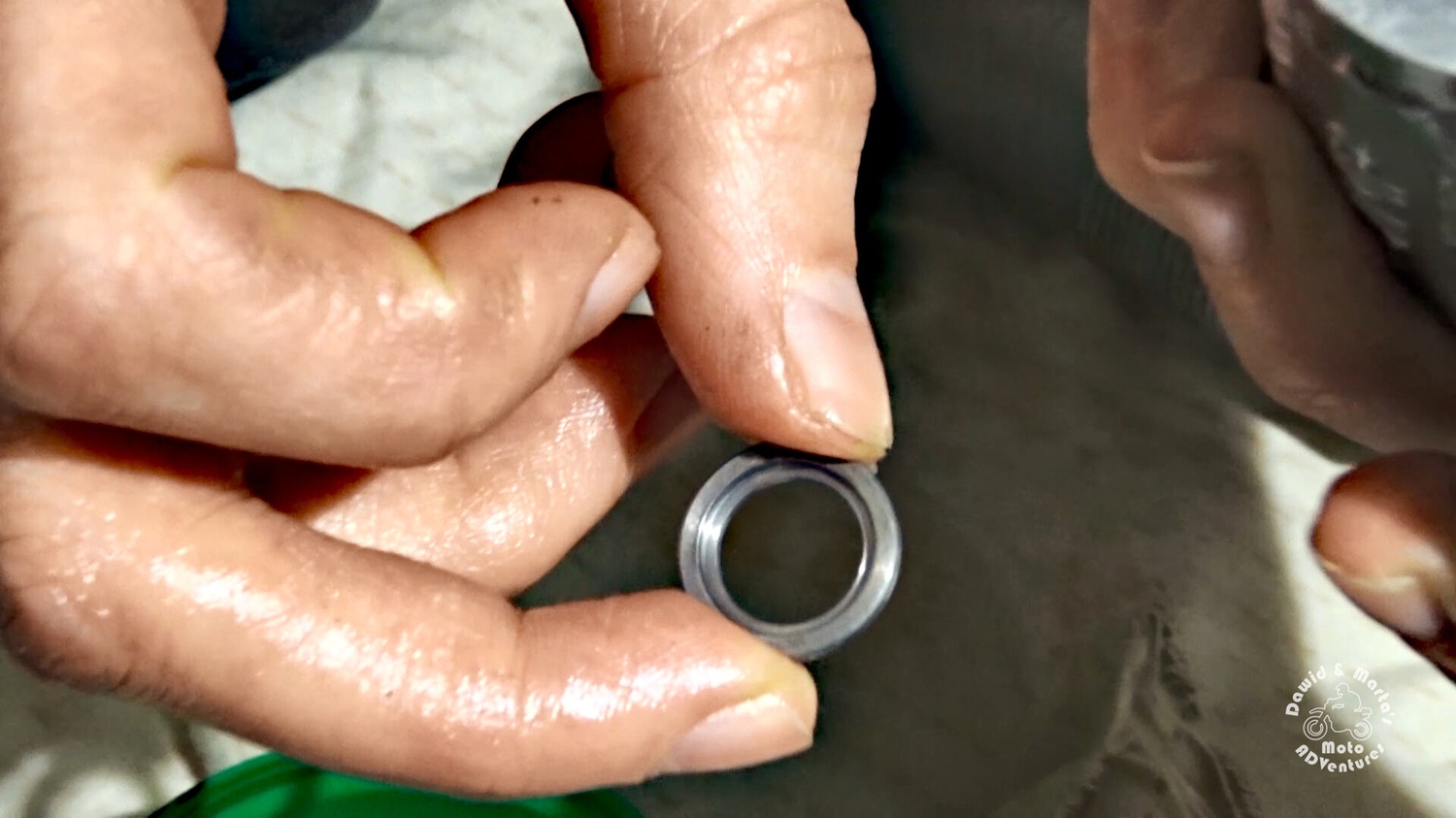



As you might guessed, next we put the smaller metal washer inside this groove.
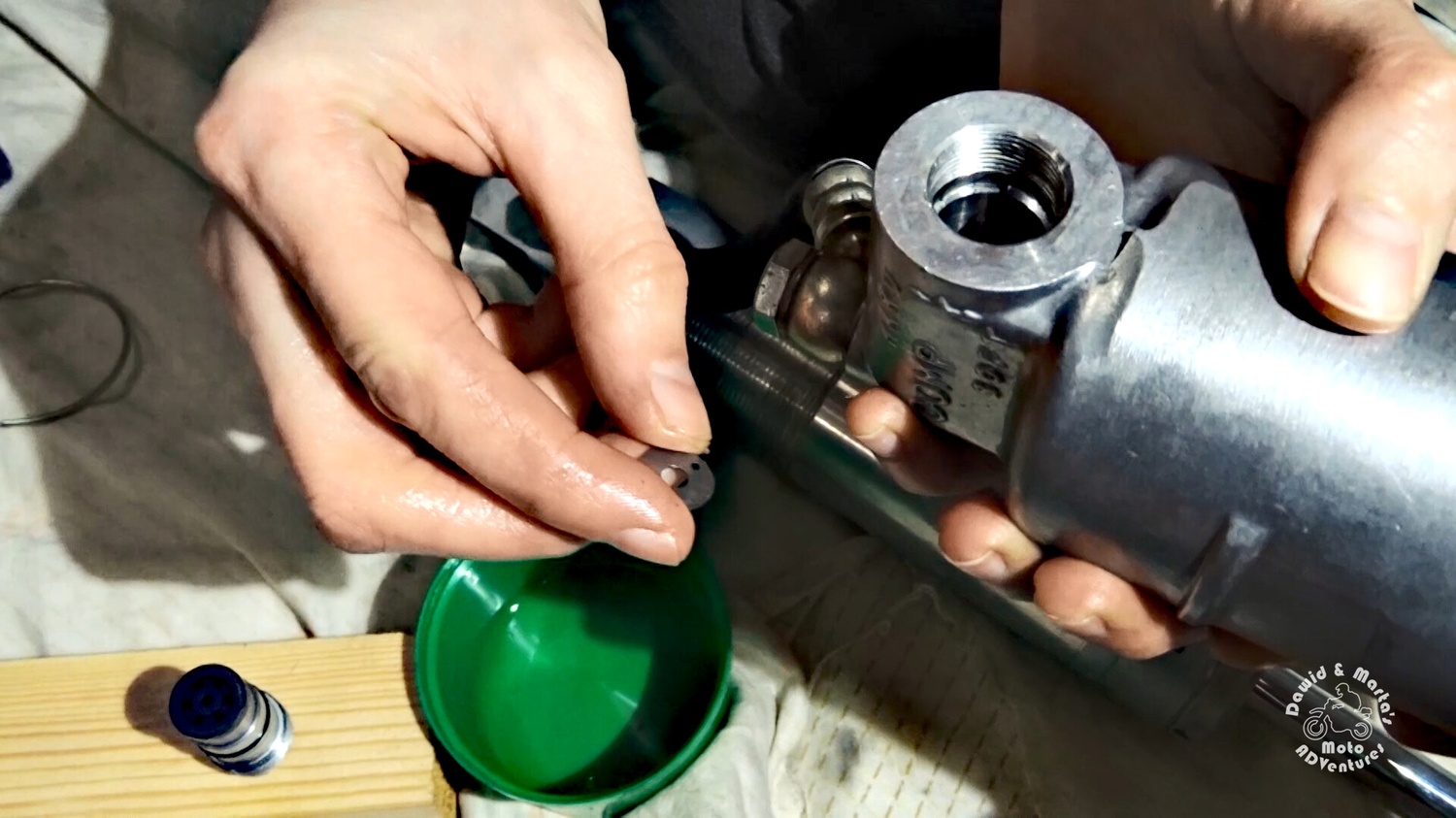

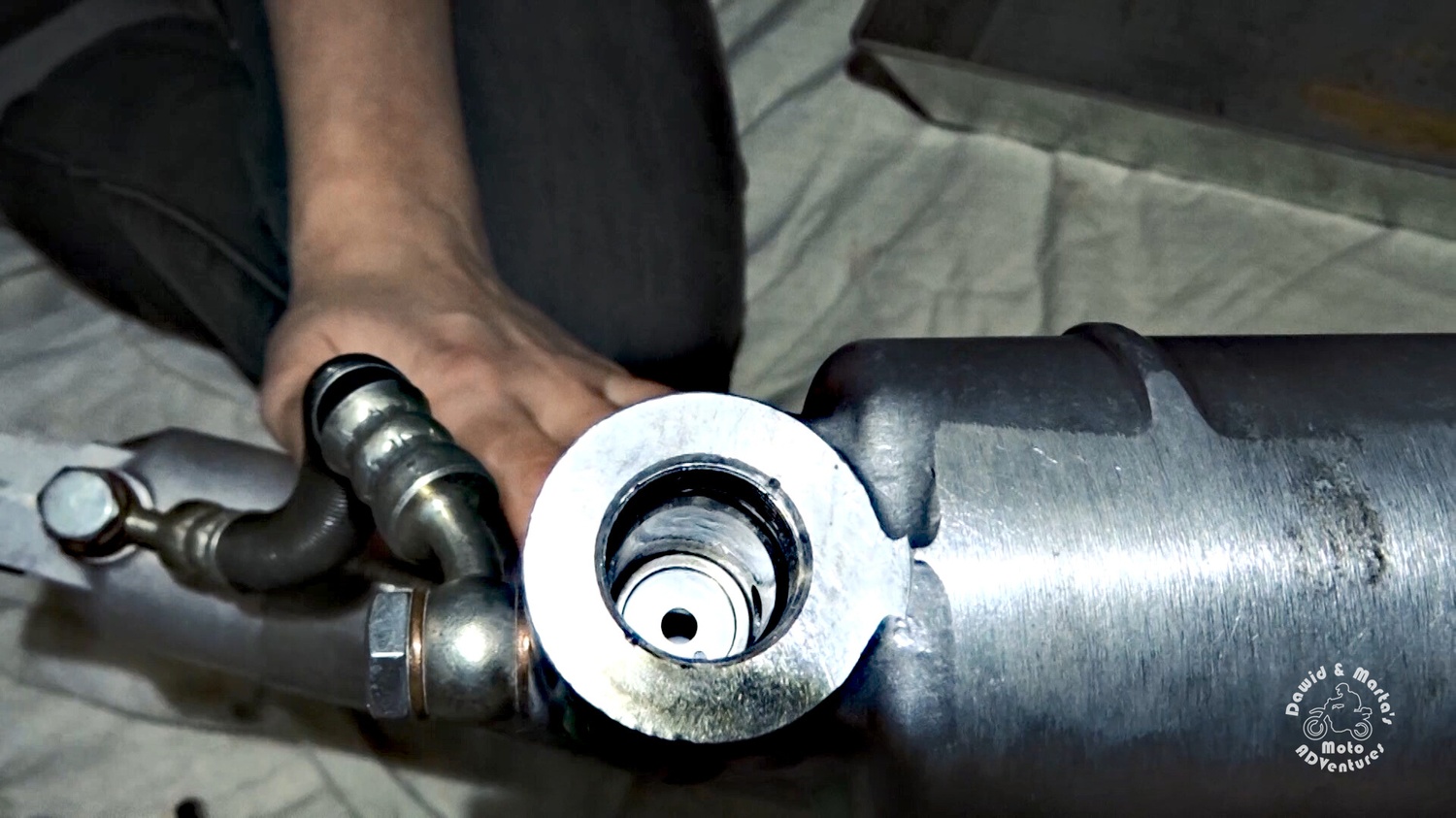

Because the one way valve is inside, we can put back in the compression adjuster.
So, naturally, we lube the adjuster O-ring with oil and screw the adjuster back to the air can.
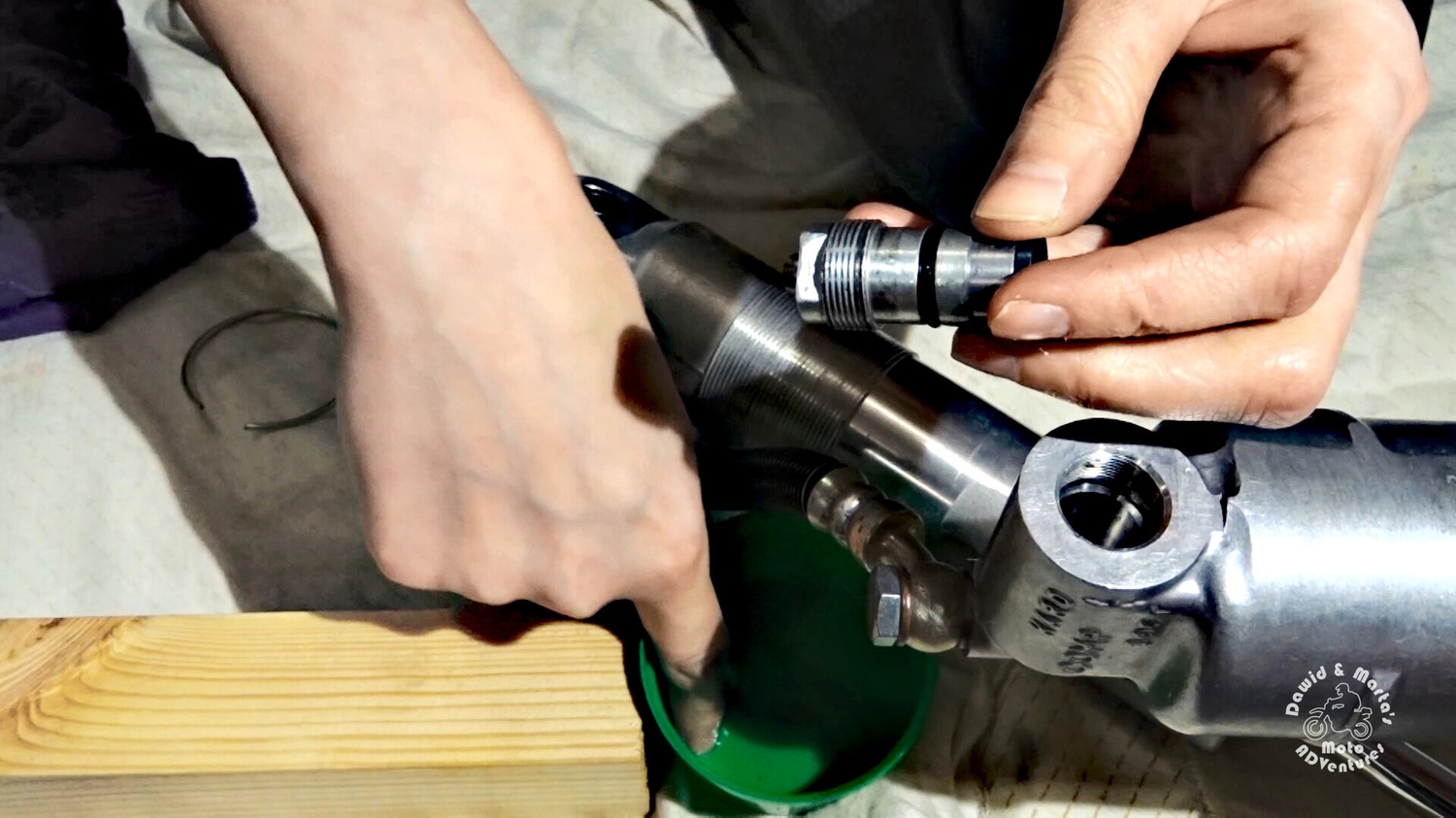

Finally, the last touch – we lock the adjuster thread using a point punch.


Filling the oil and air
Now we are ready for pouring in the fresh oil to the can.


But we don’t immediately put back the rubber sleeve. First we pump the shock until we remove all of the air bubbles from the oil chamber. If need be – we pour some more oil.


In the end you should not see any little bubble coming out during the shock compression.
After that we fill the whole can with oil up to its edge and insert the rubber sleeve.
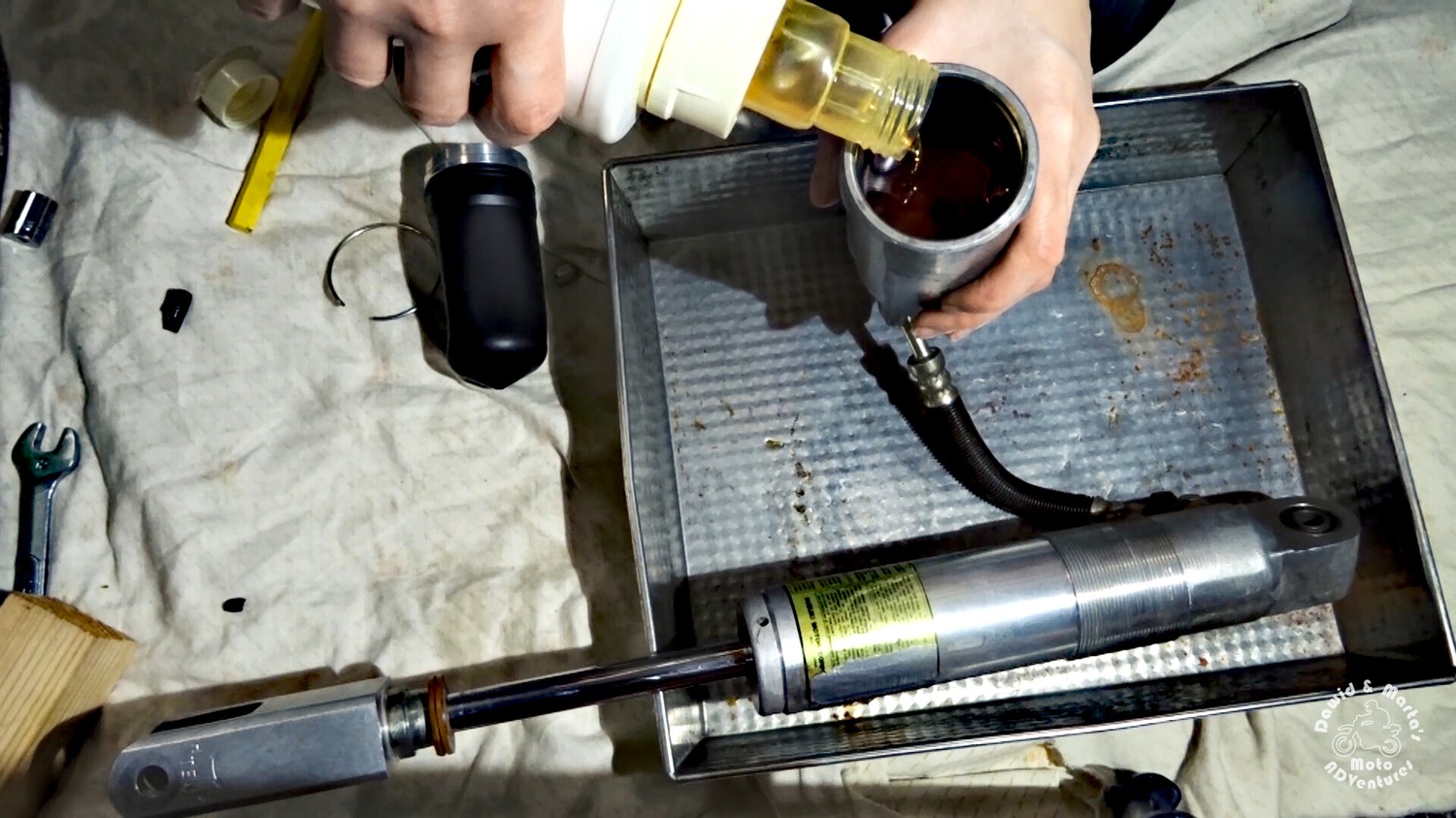

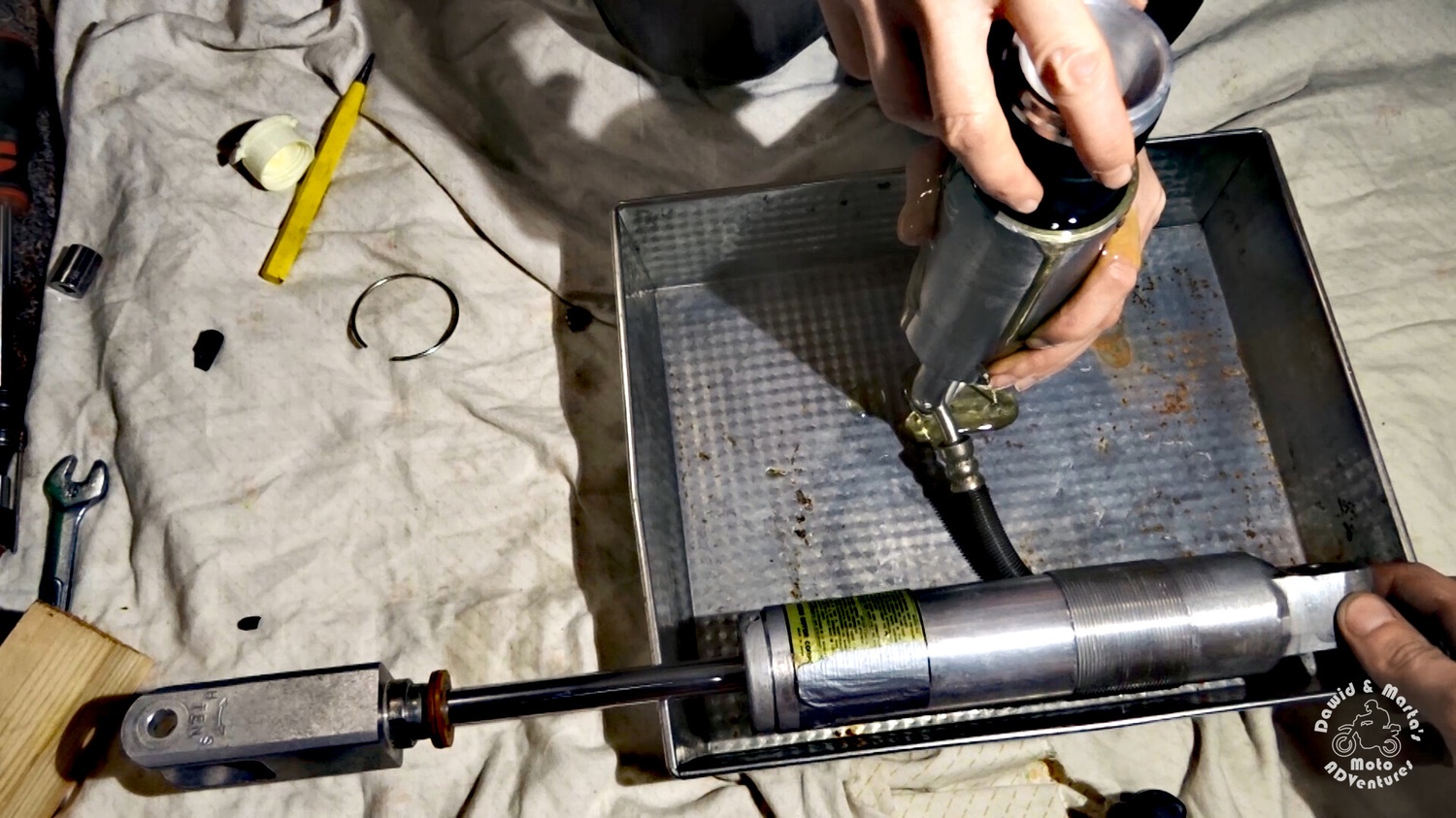

Next we push the air can cap inside the air can until there will be enough space to insert the securing ring.


Now we should pump some air inside the air can air chamber.
According to the service manual we should pump air until we reach 142 psi (uncompressed shock)
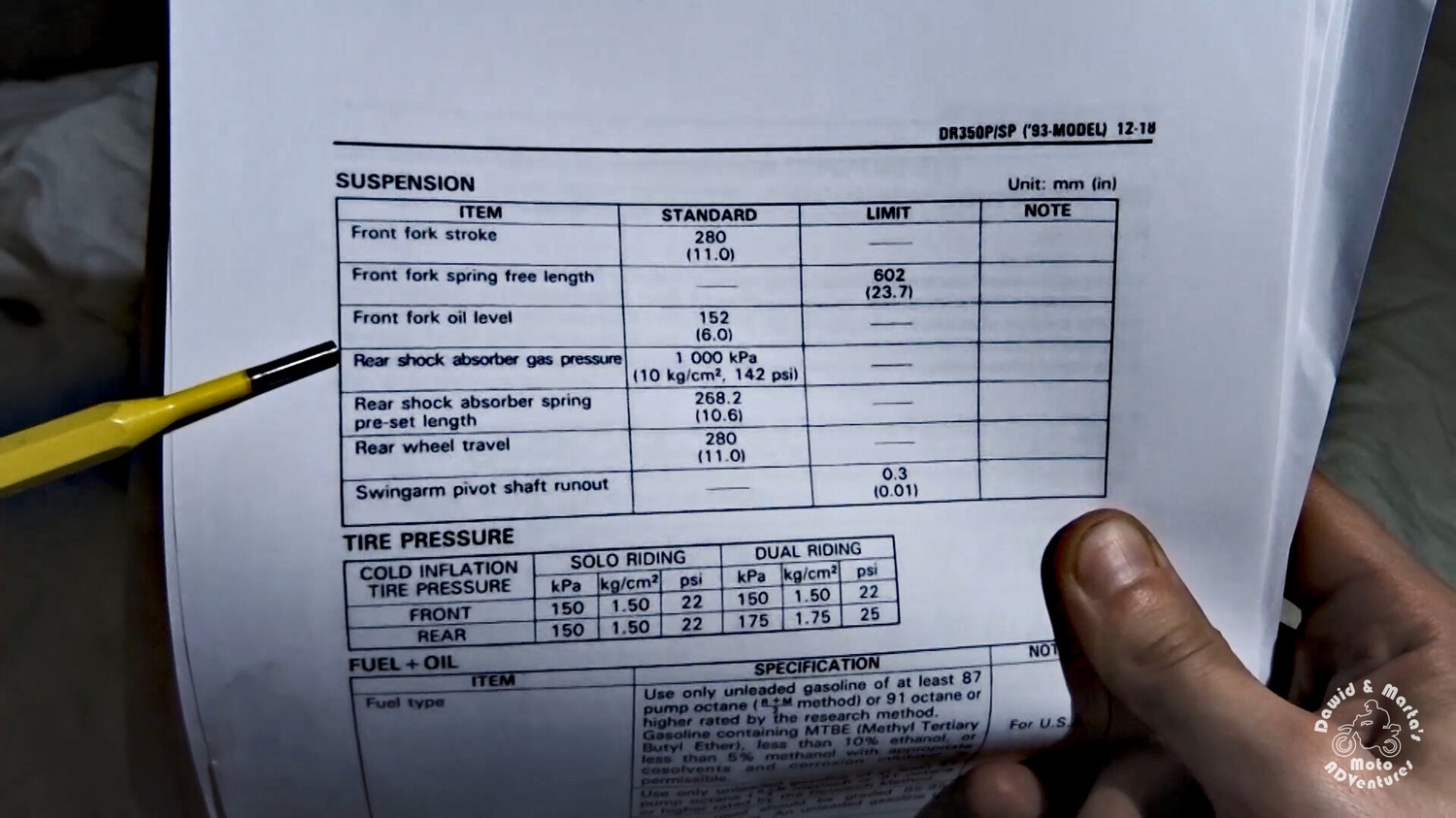

So we just connect an ordinary pump to the air can air valve and pump until we reach the value recommended by Mr Suzuki.


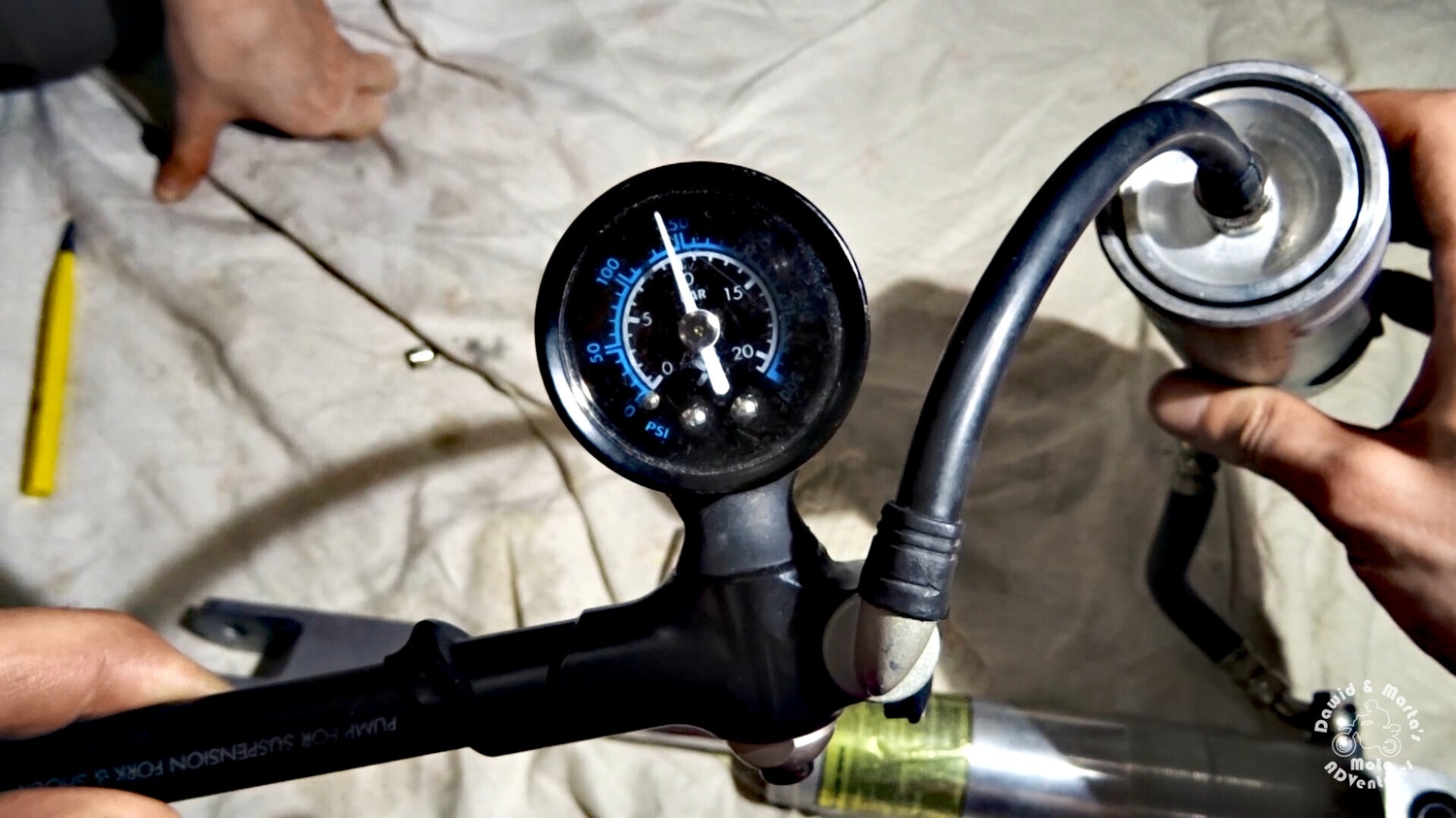

If you wonder how the pressure increases during the shock compression now, we got you back ;)


Finally we are ready to put back the air valve cap and the air can cap.
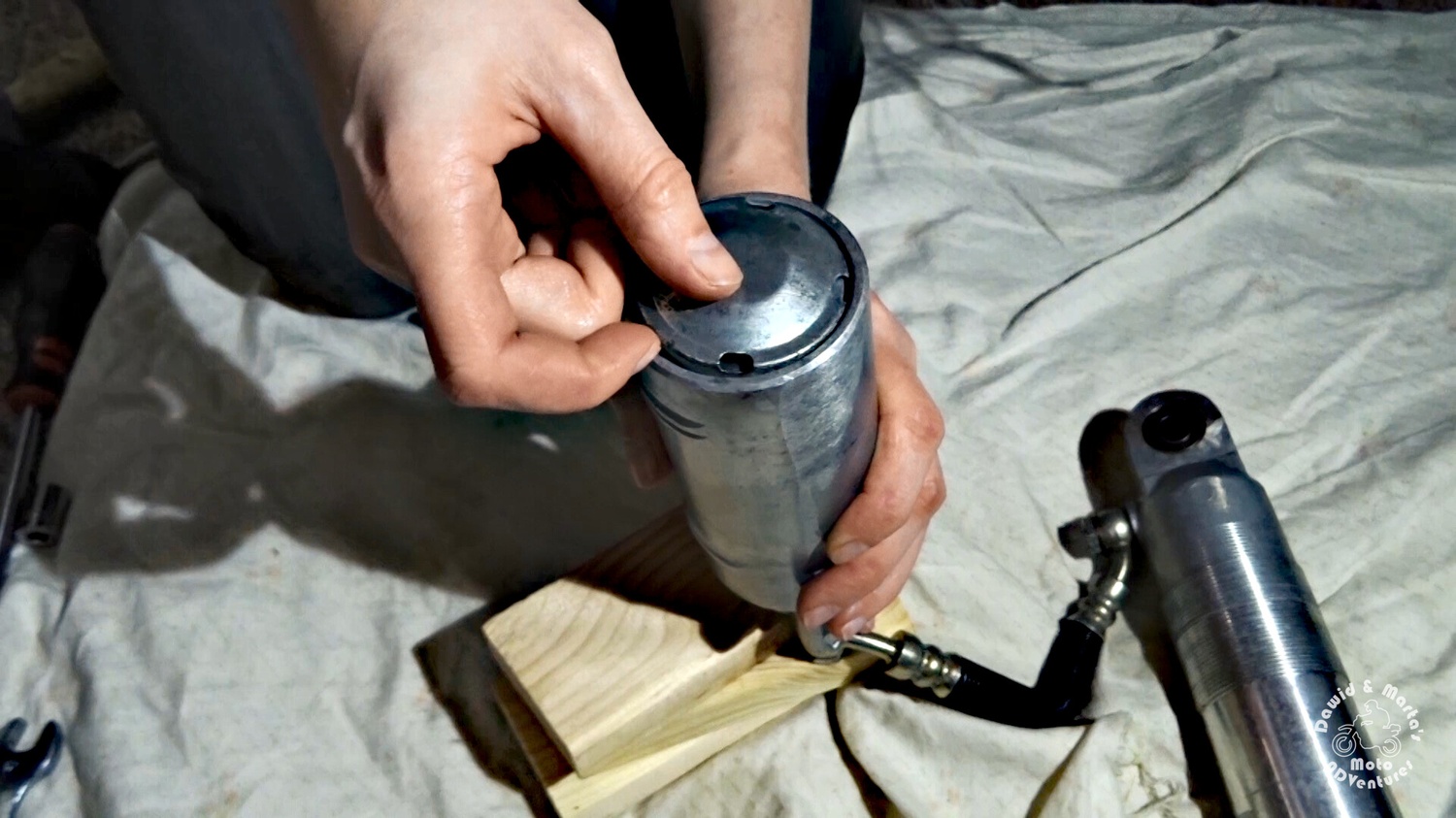

The last step is putting the spring back.
So first we screw back the adjuster nut and the locking ring.


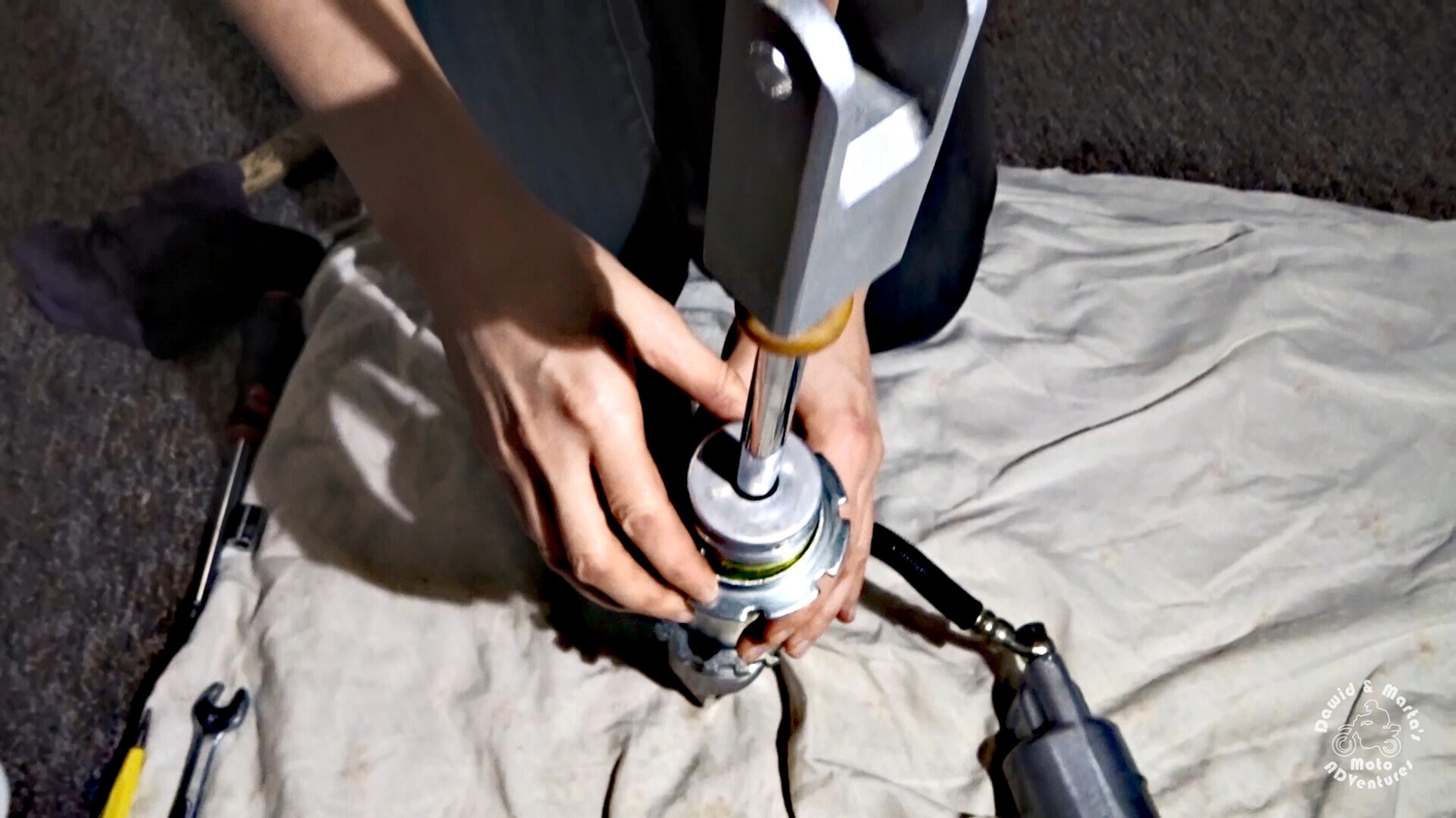

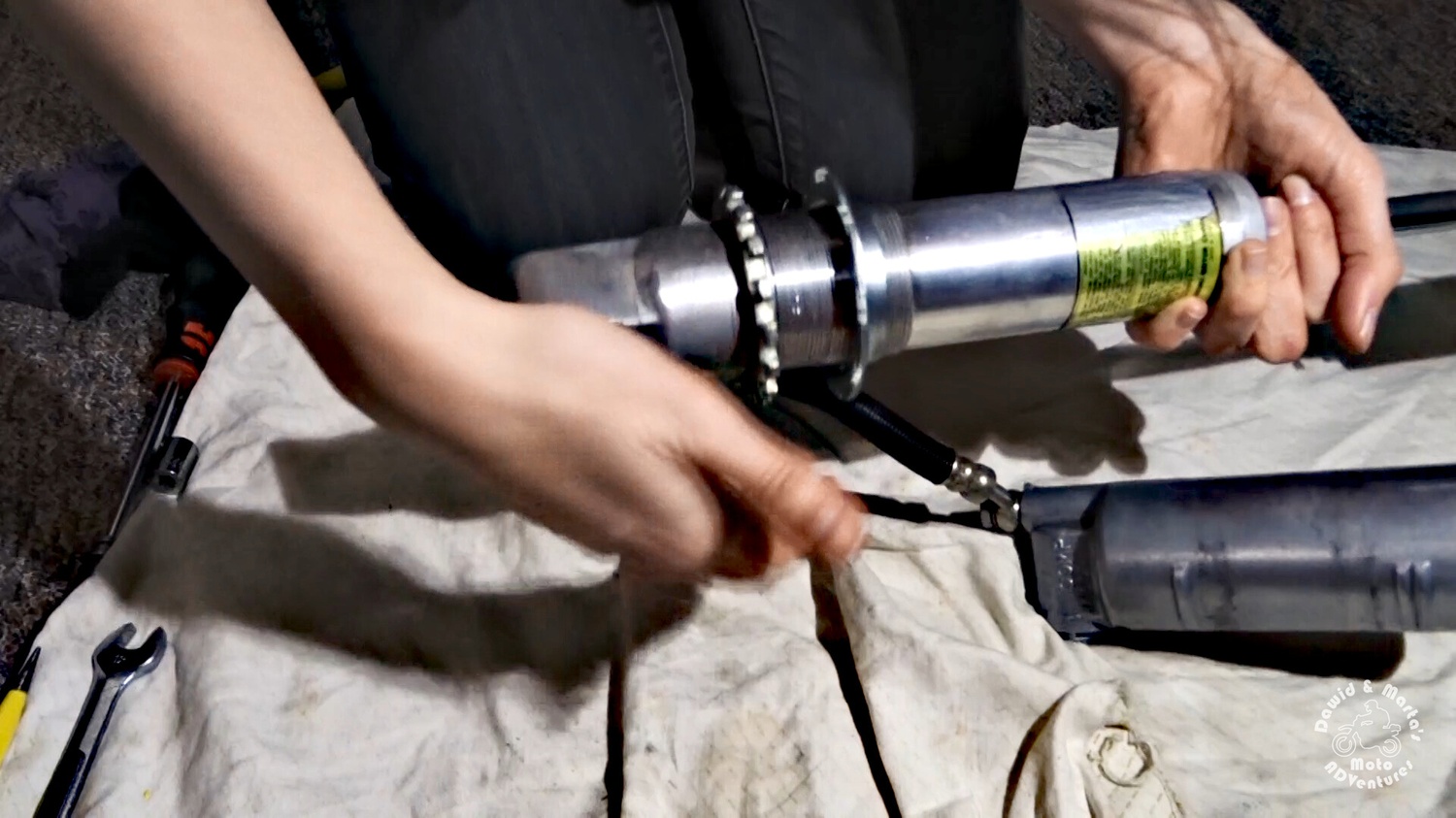

Finally we put back the spring and the top spring collar.
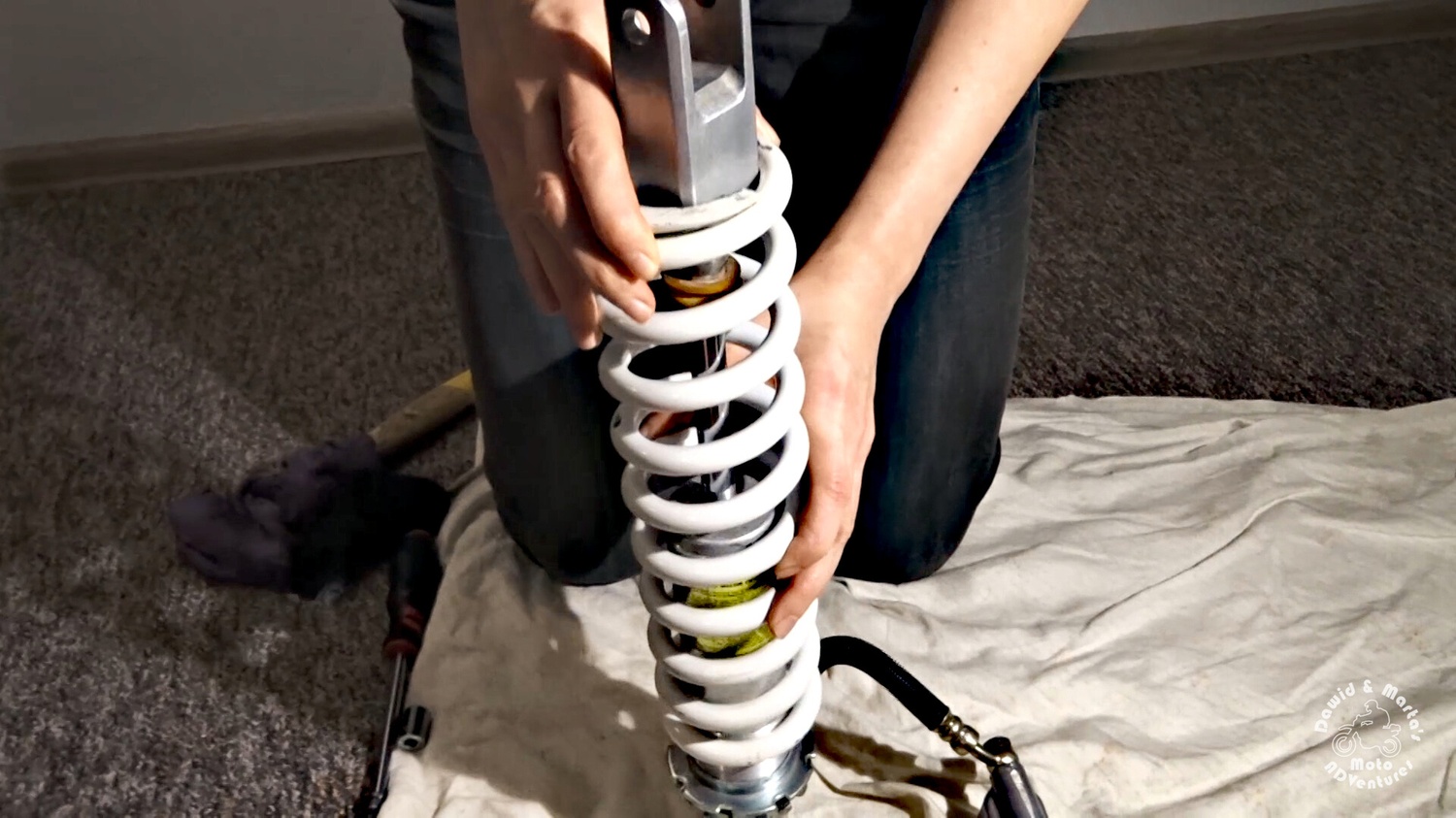

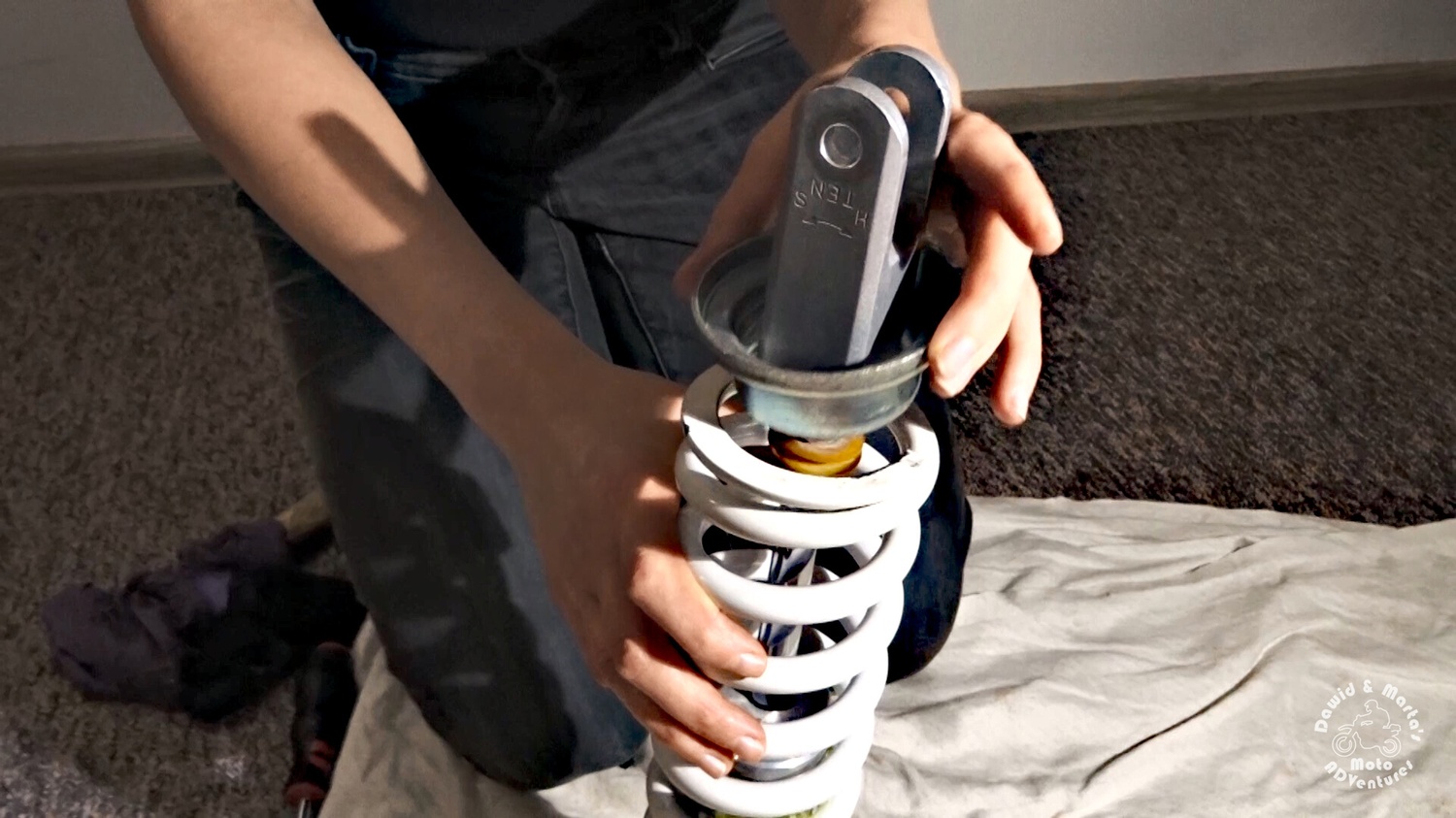

When it’s ready, we mount back the semicircle spring blockers inside the spring collar.
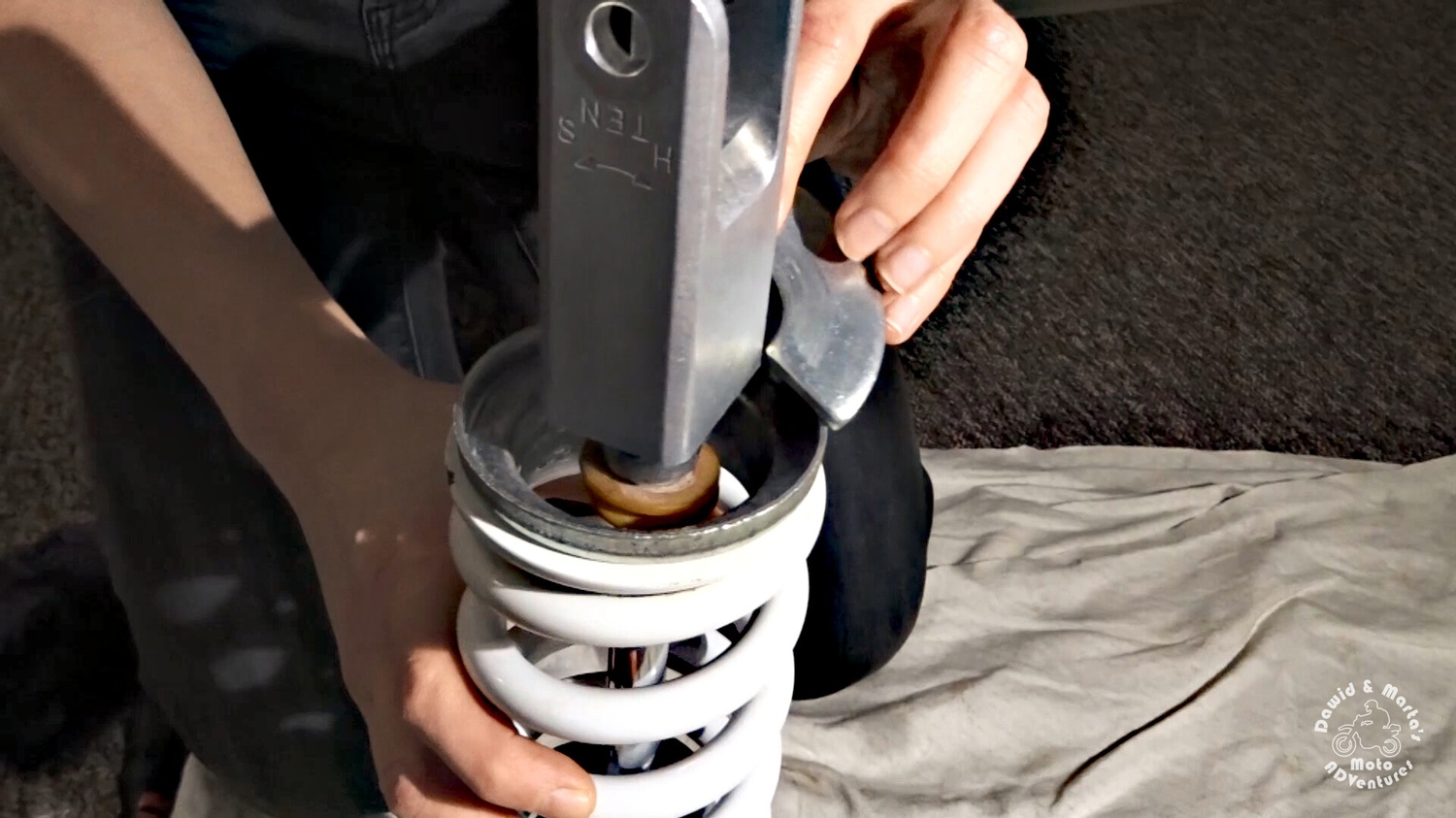

Now what’s left is setting the spring length using the preload adjuster. I set my spring to standard length, that is, 269.2 mm
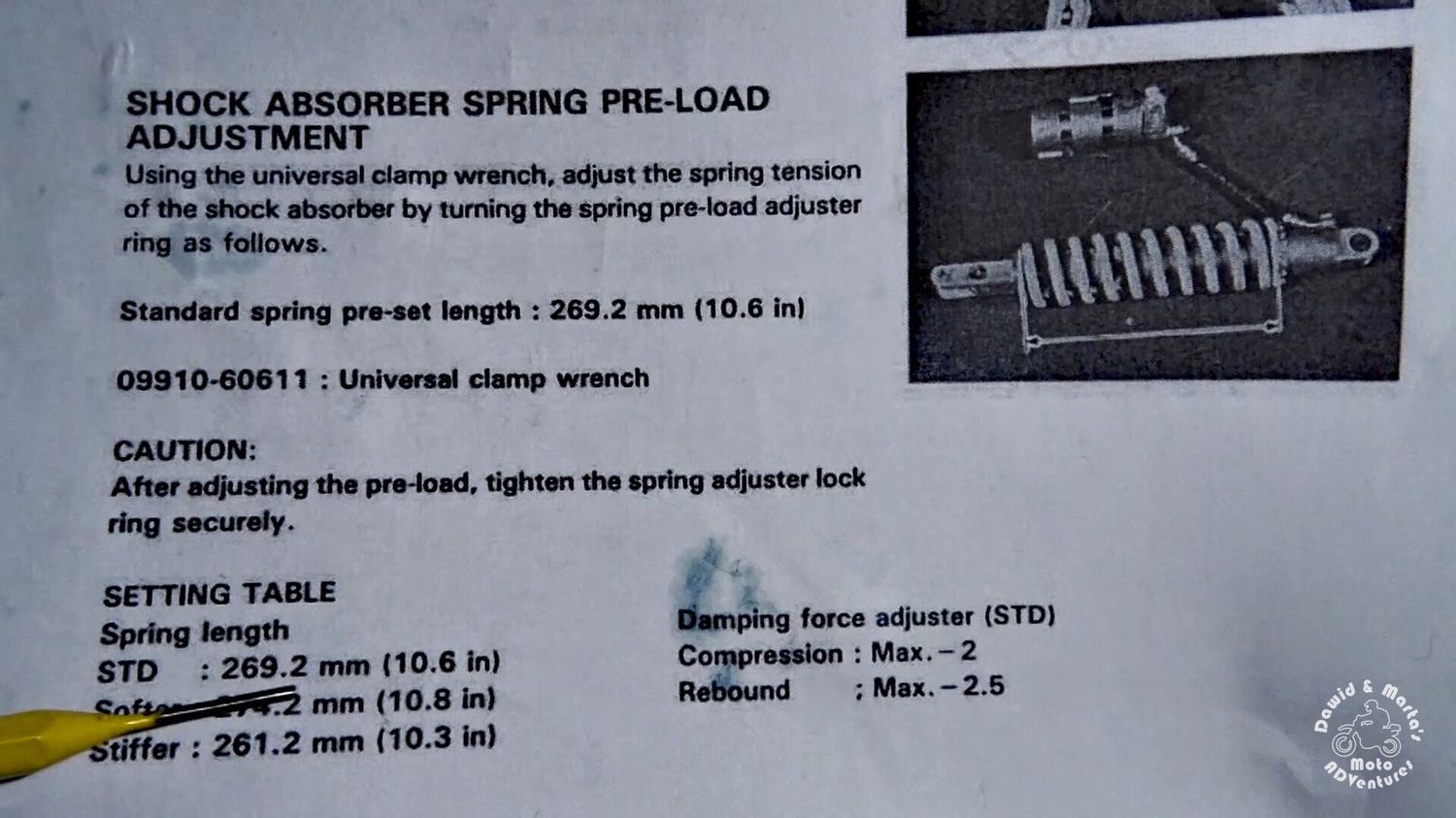

So we screw in adjuster and its locking ring until the spring will reach the desired dimension.


When we have the proper spring length, then we can lock it by locking the spring adjuster ring with a punch tool.


Now we put back the air can handle by tightening it in position with two clamps…
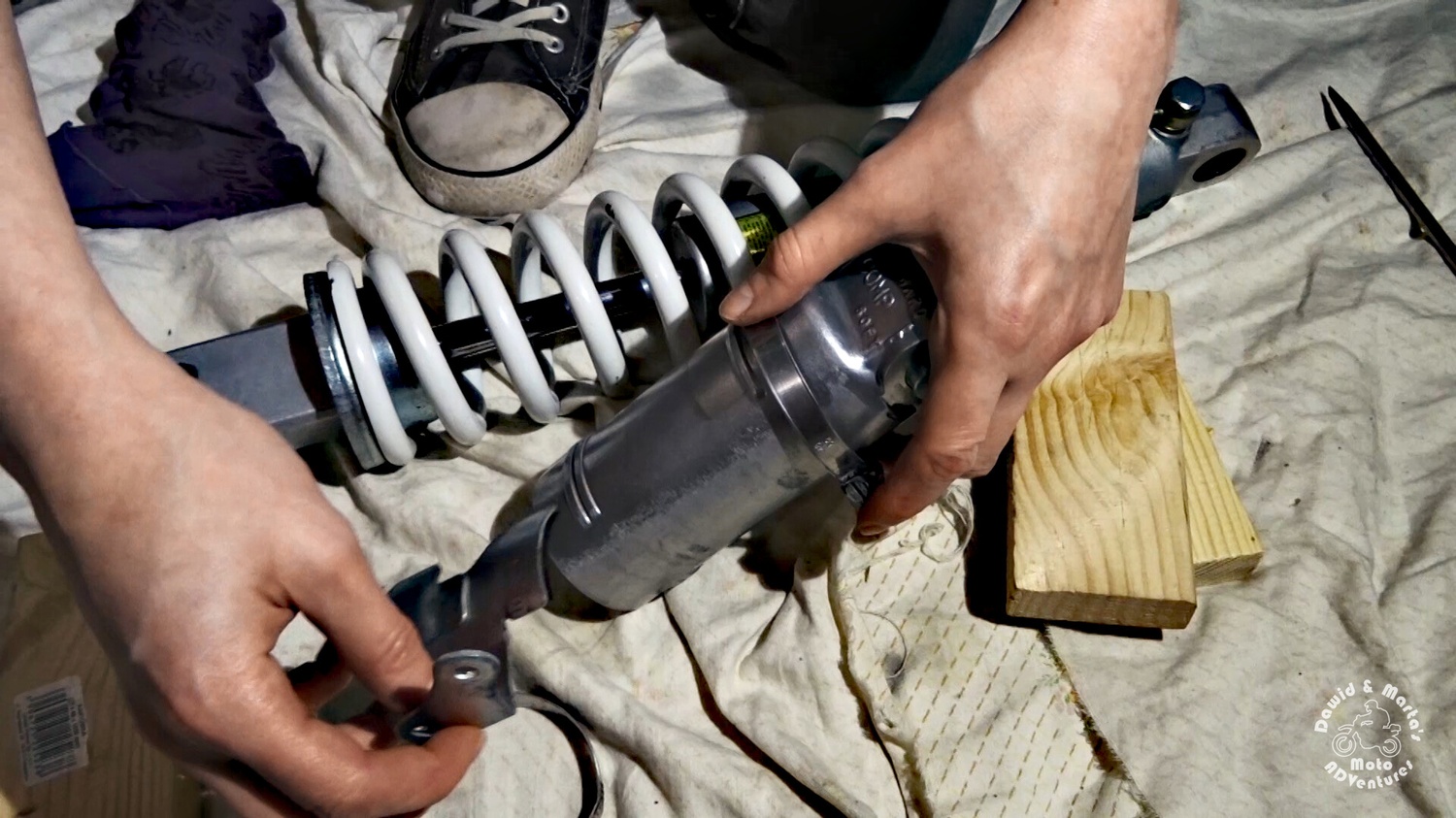

And we’re done! Congratulations ʕ•ᴥ•ʔ Our DR350 rear shock is ready for some tough riding again ᕙ(◉‿◉)ᕗ
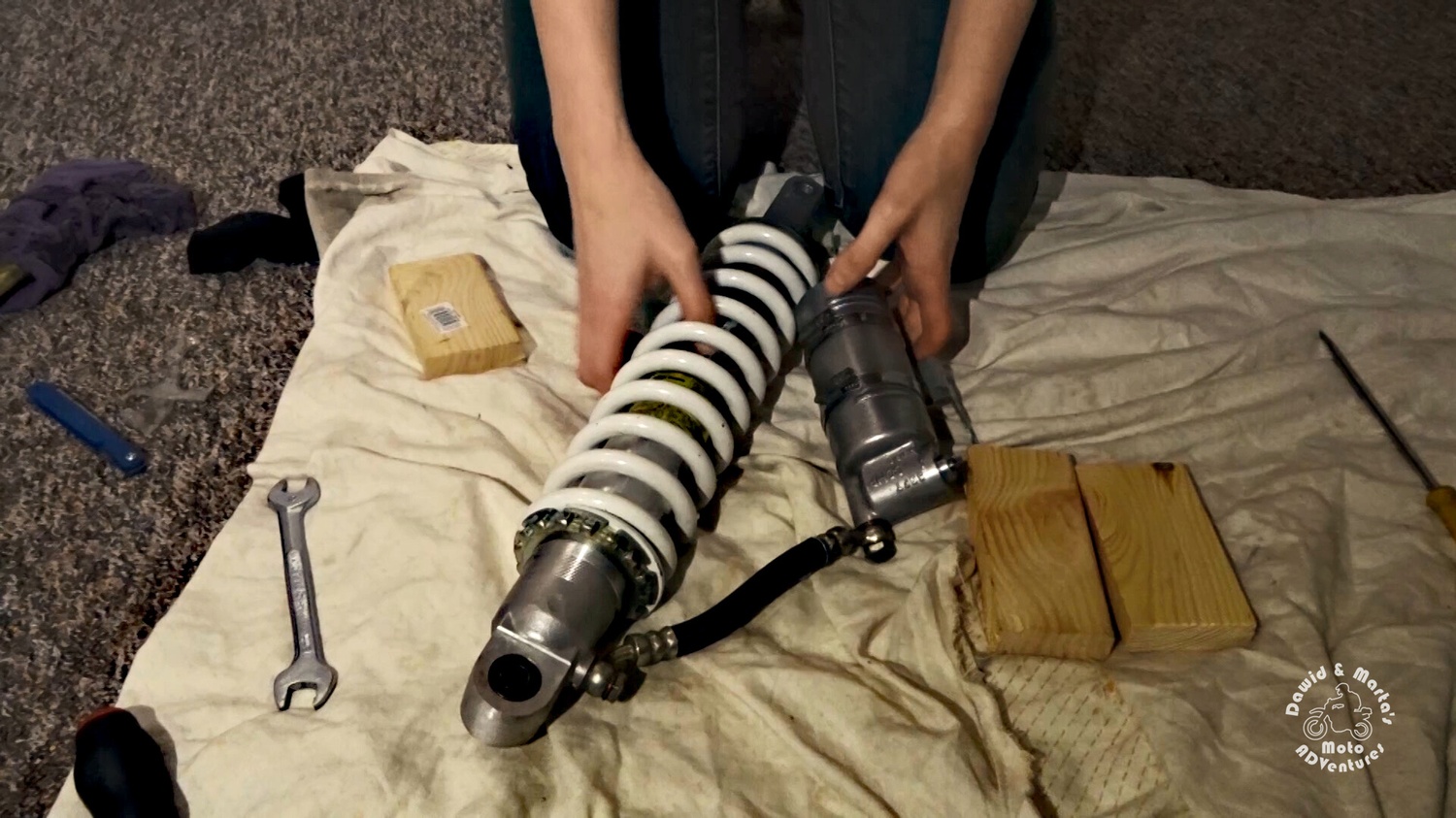

If you feel like something’s missing here, let us now! \(ᴗ‿ᴗ)/
And if you more like in the TL;DR mode today (or any day :P) you can also check our video below, which also covers the whole procedure of the DR350 rear shock rebuilding:
Ride safe! :)
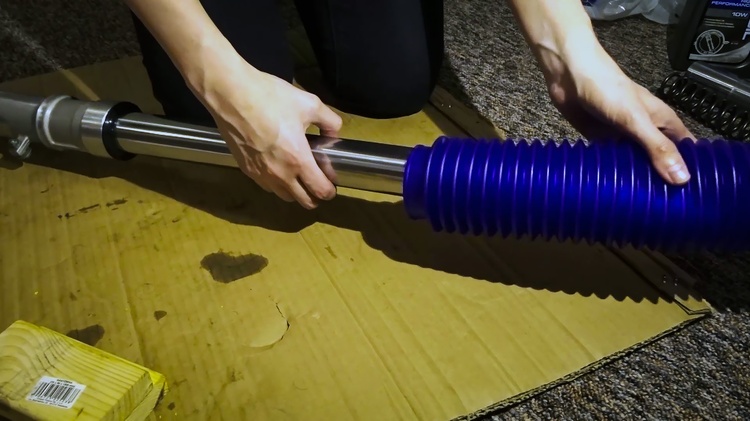
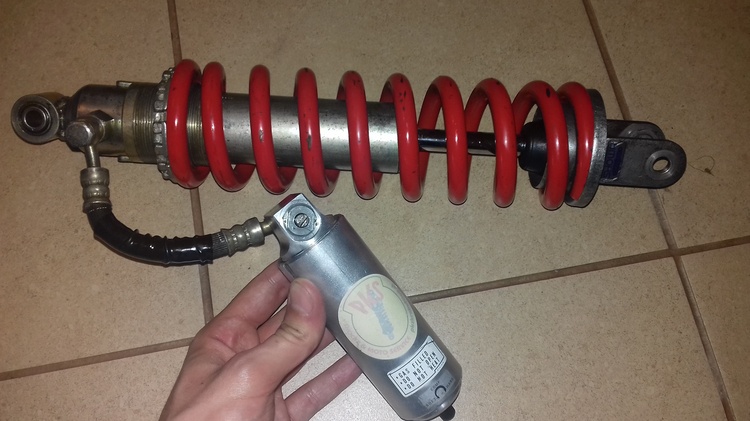
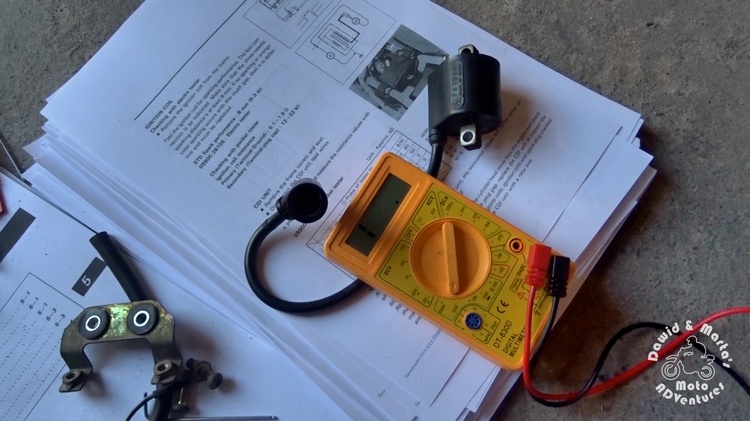
Comments